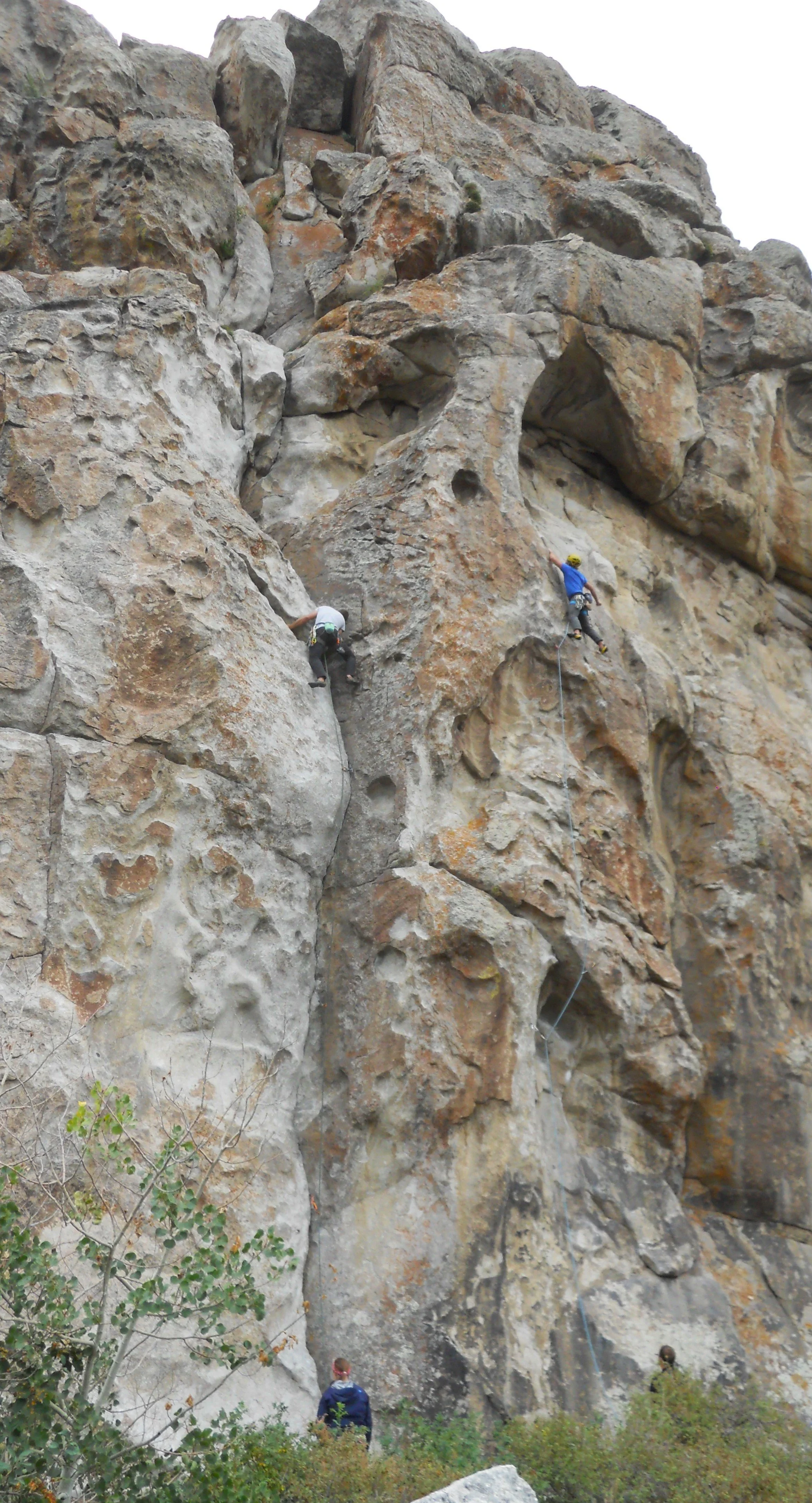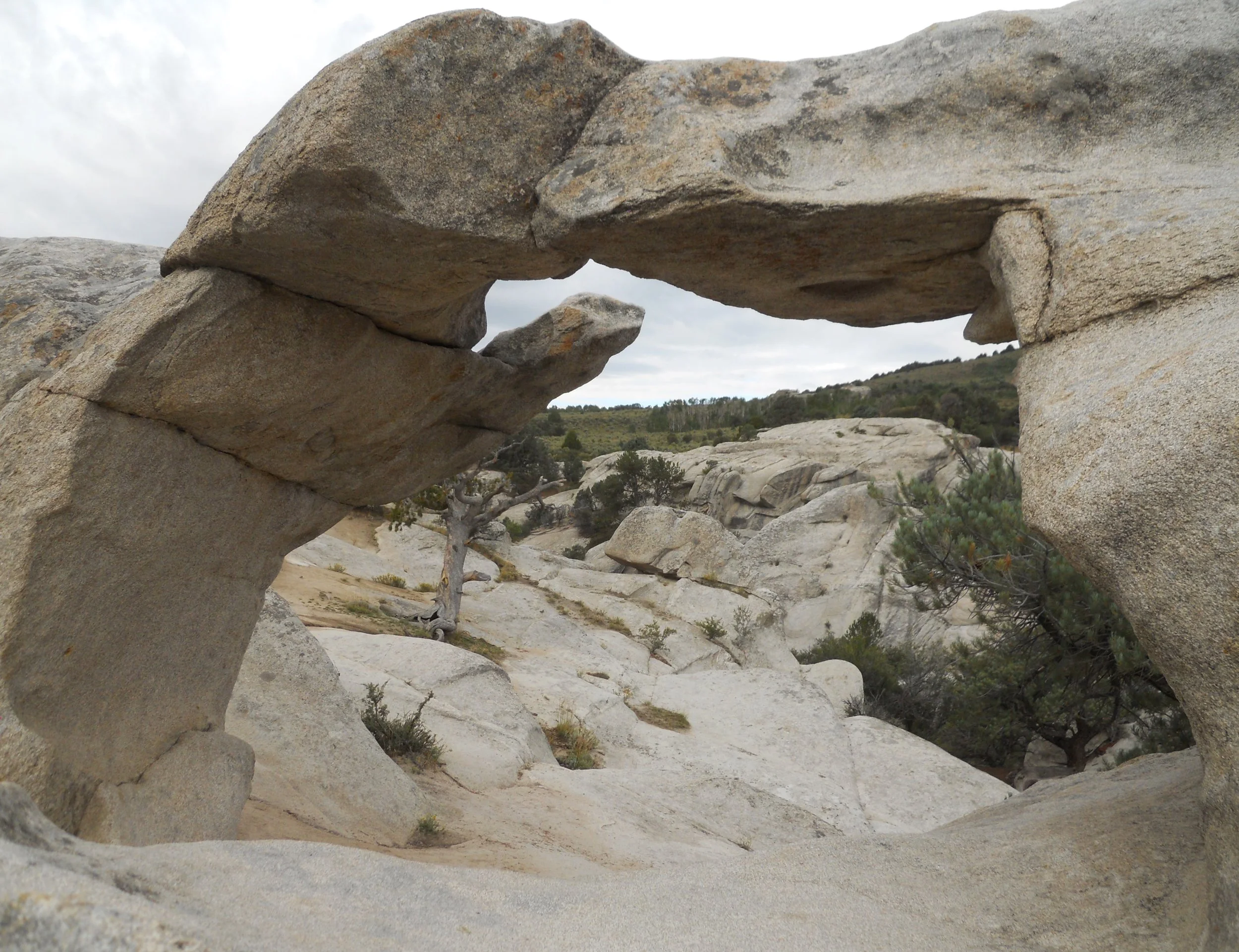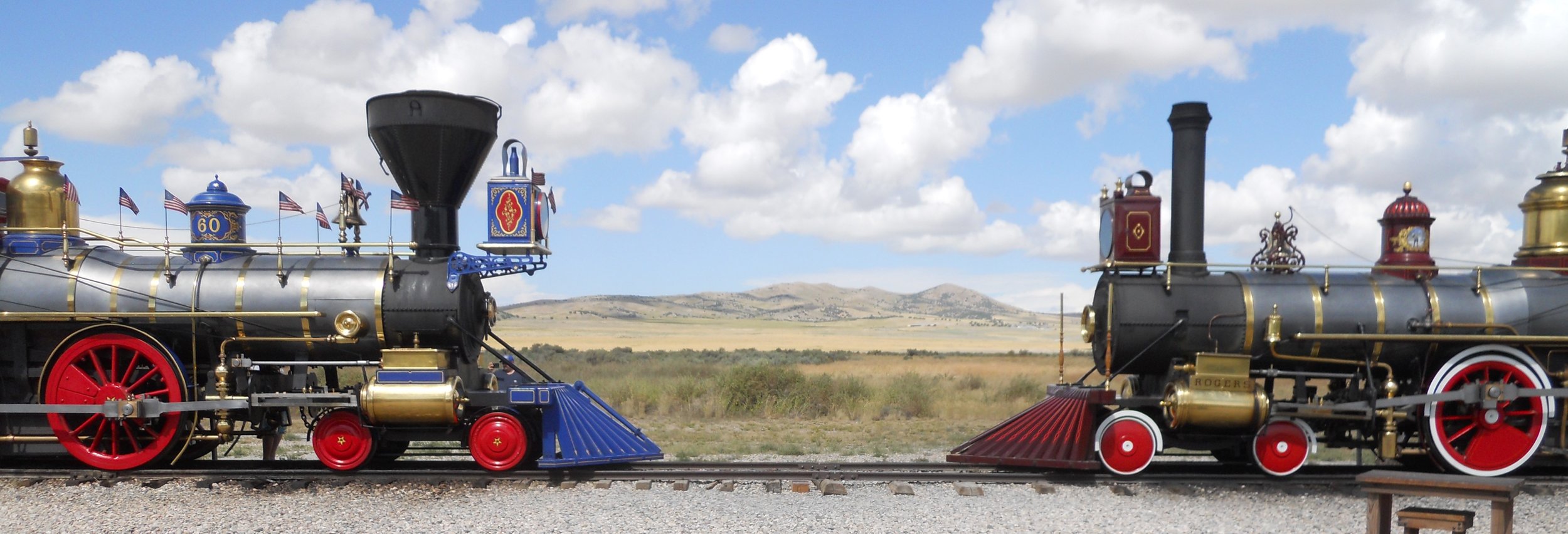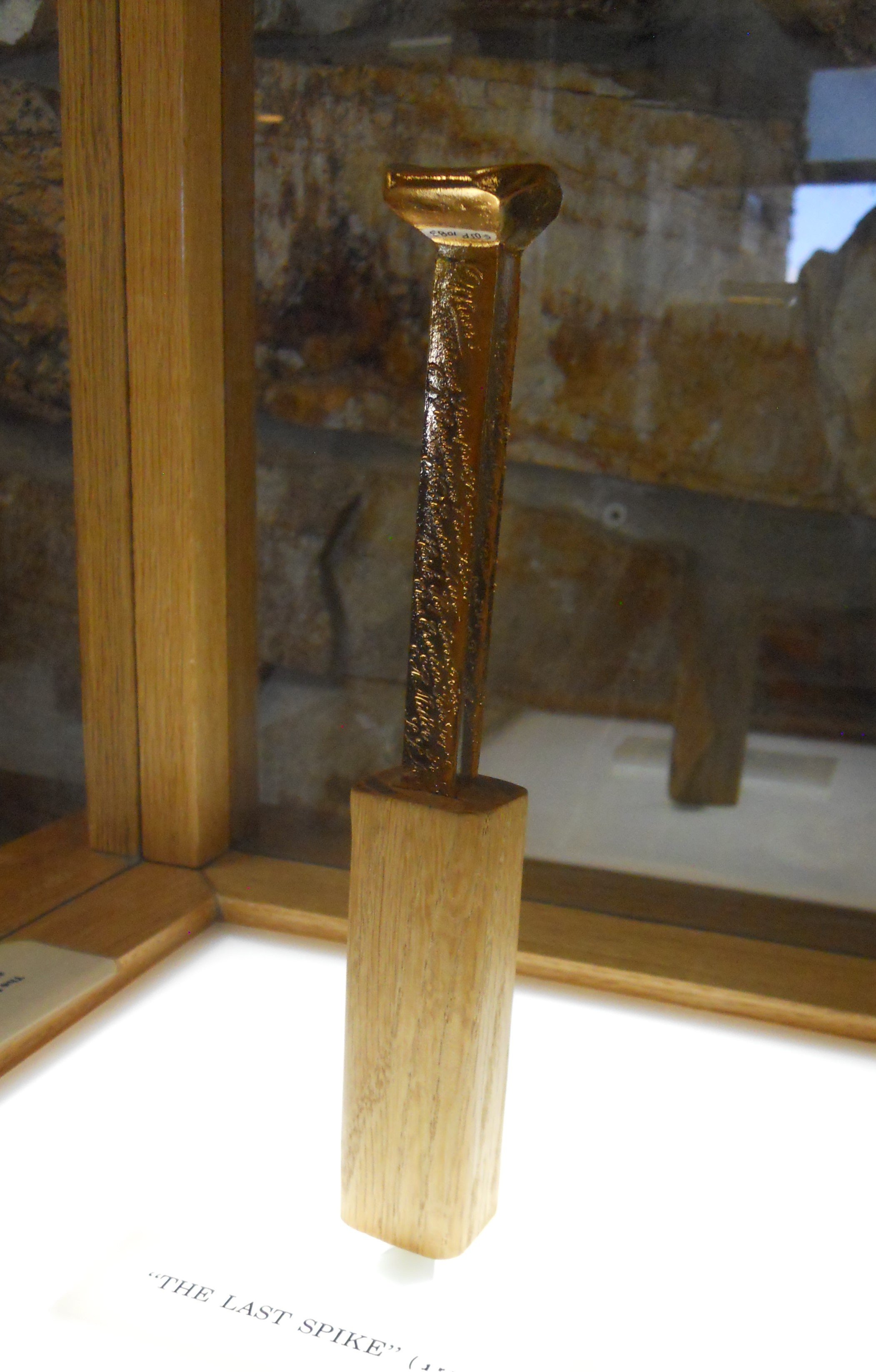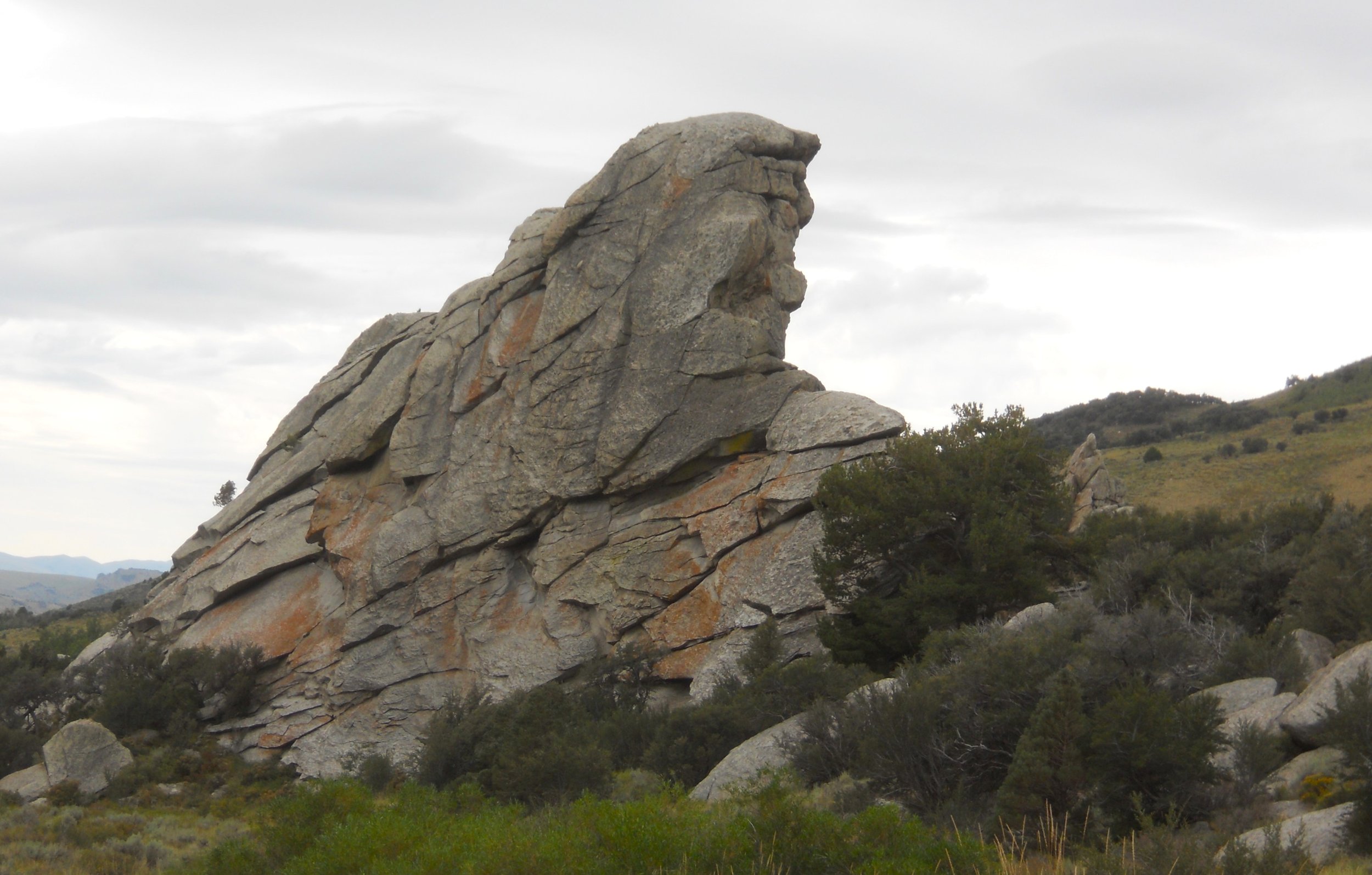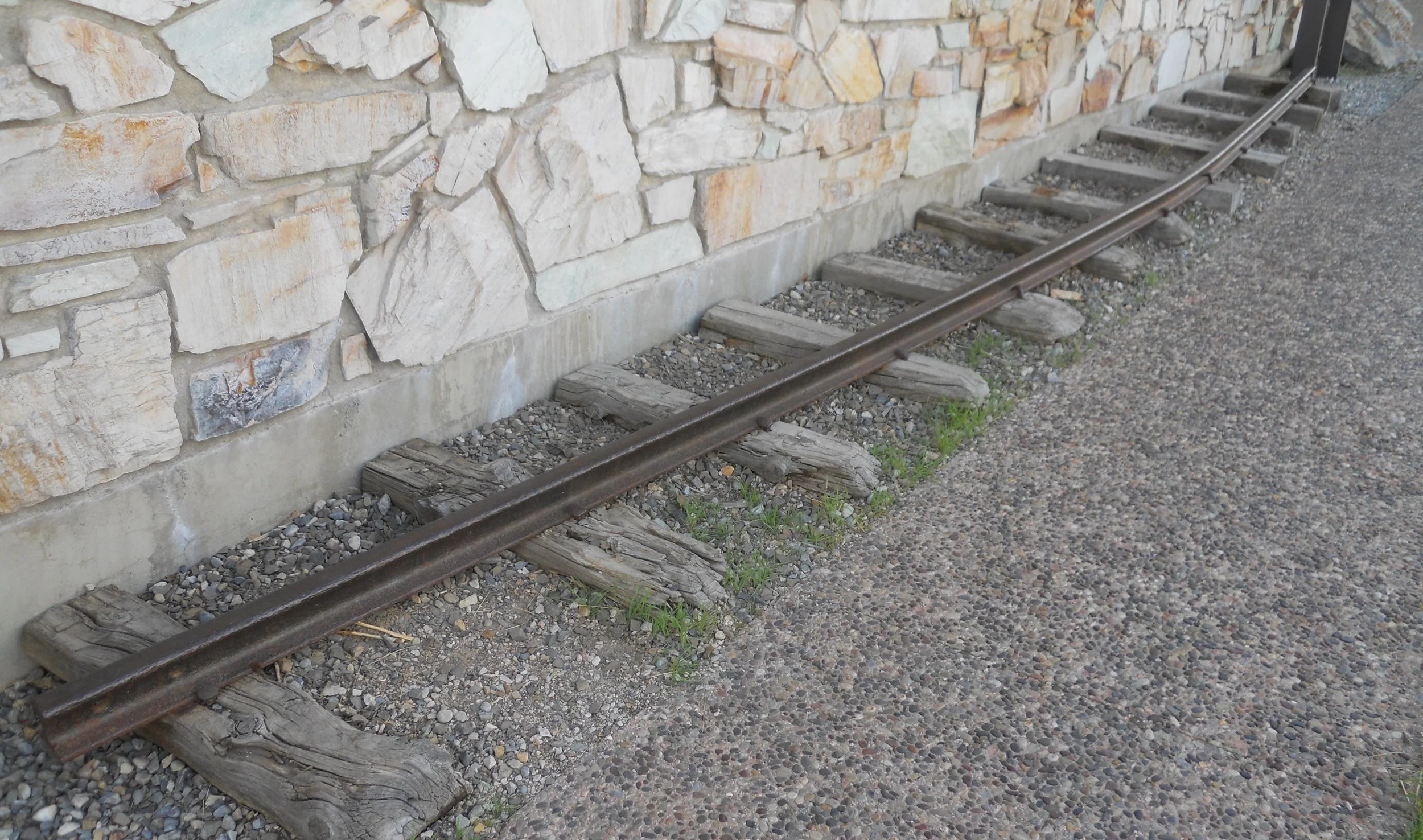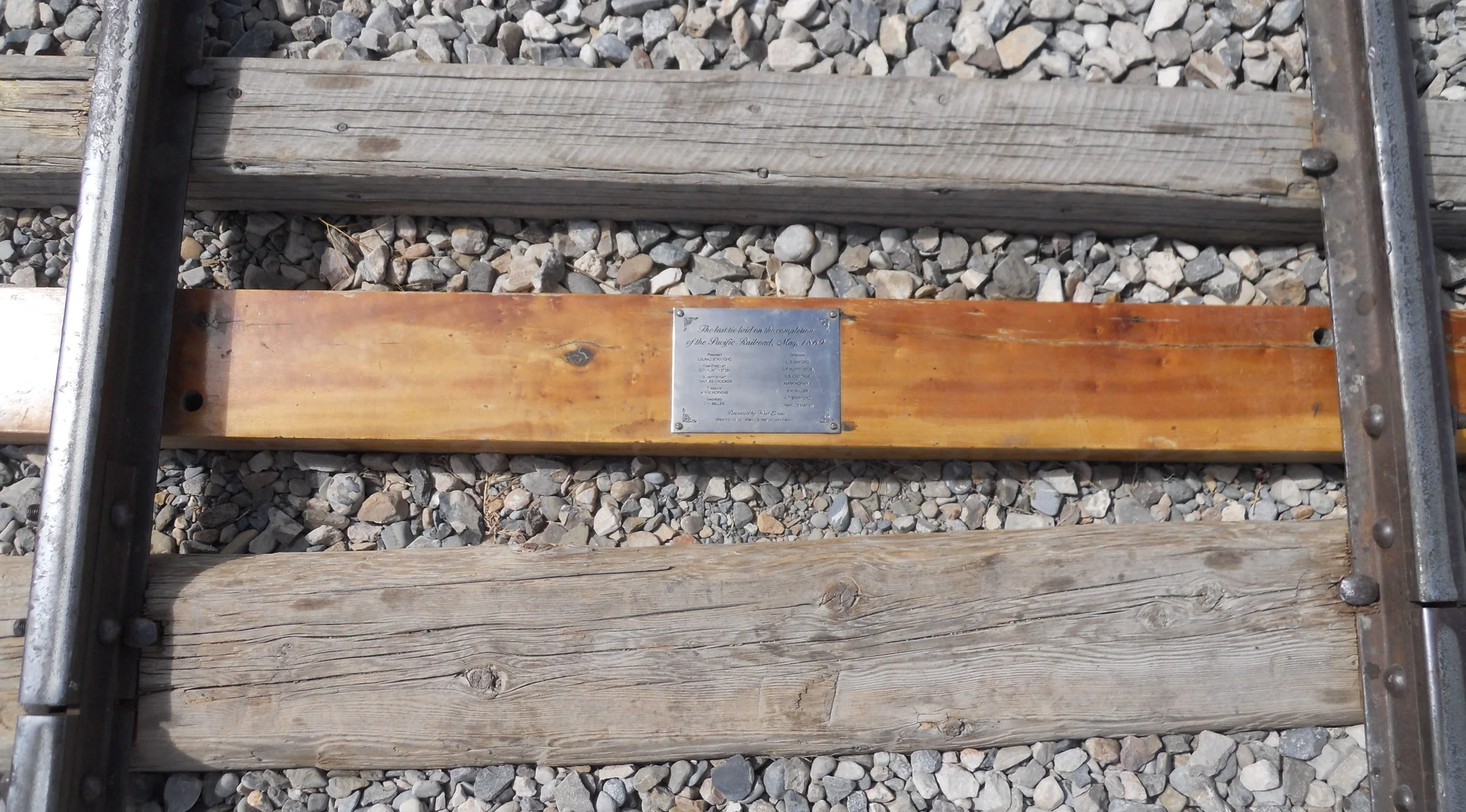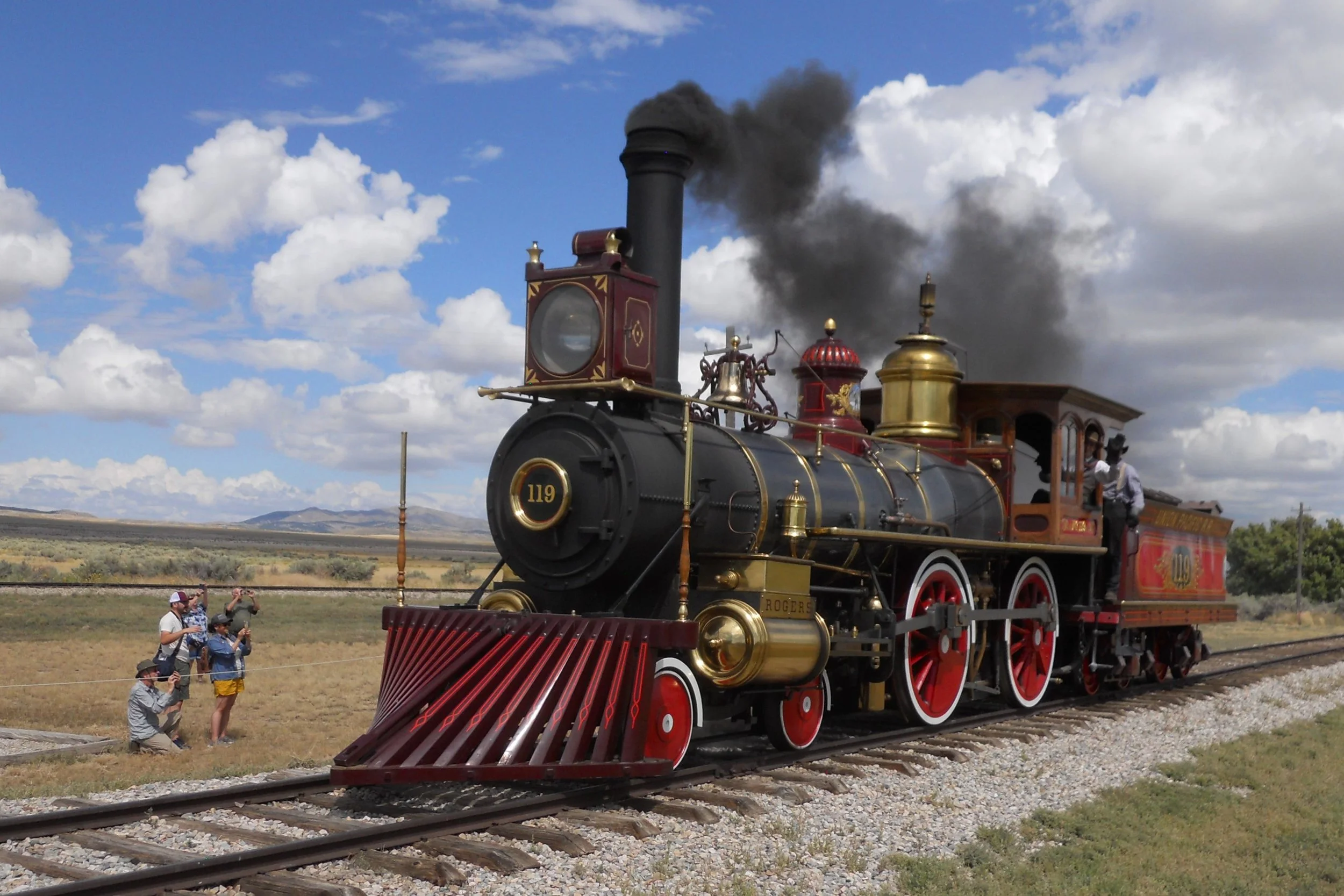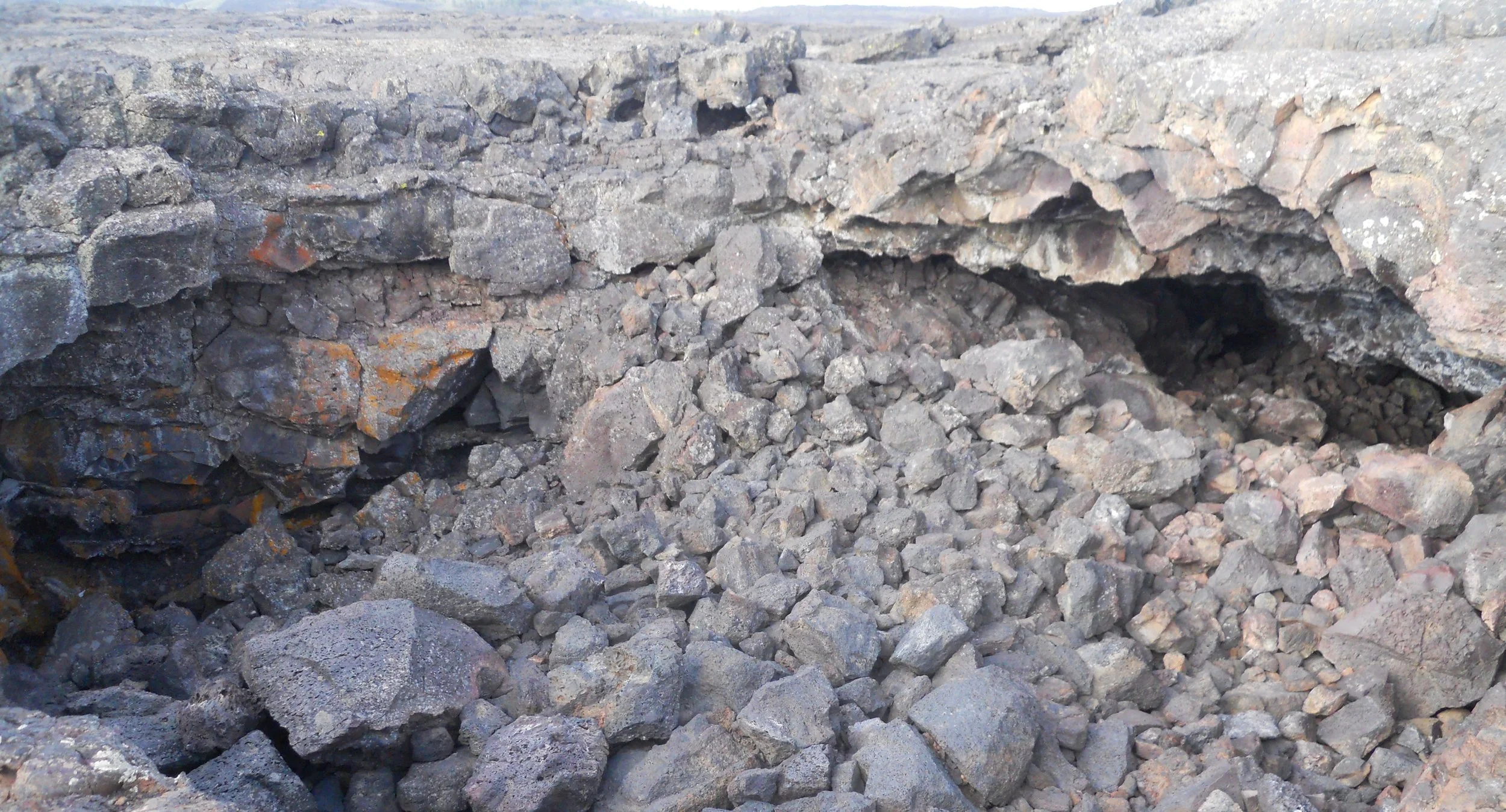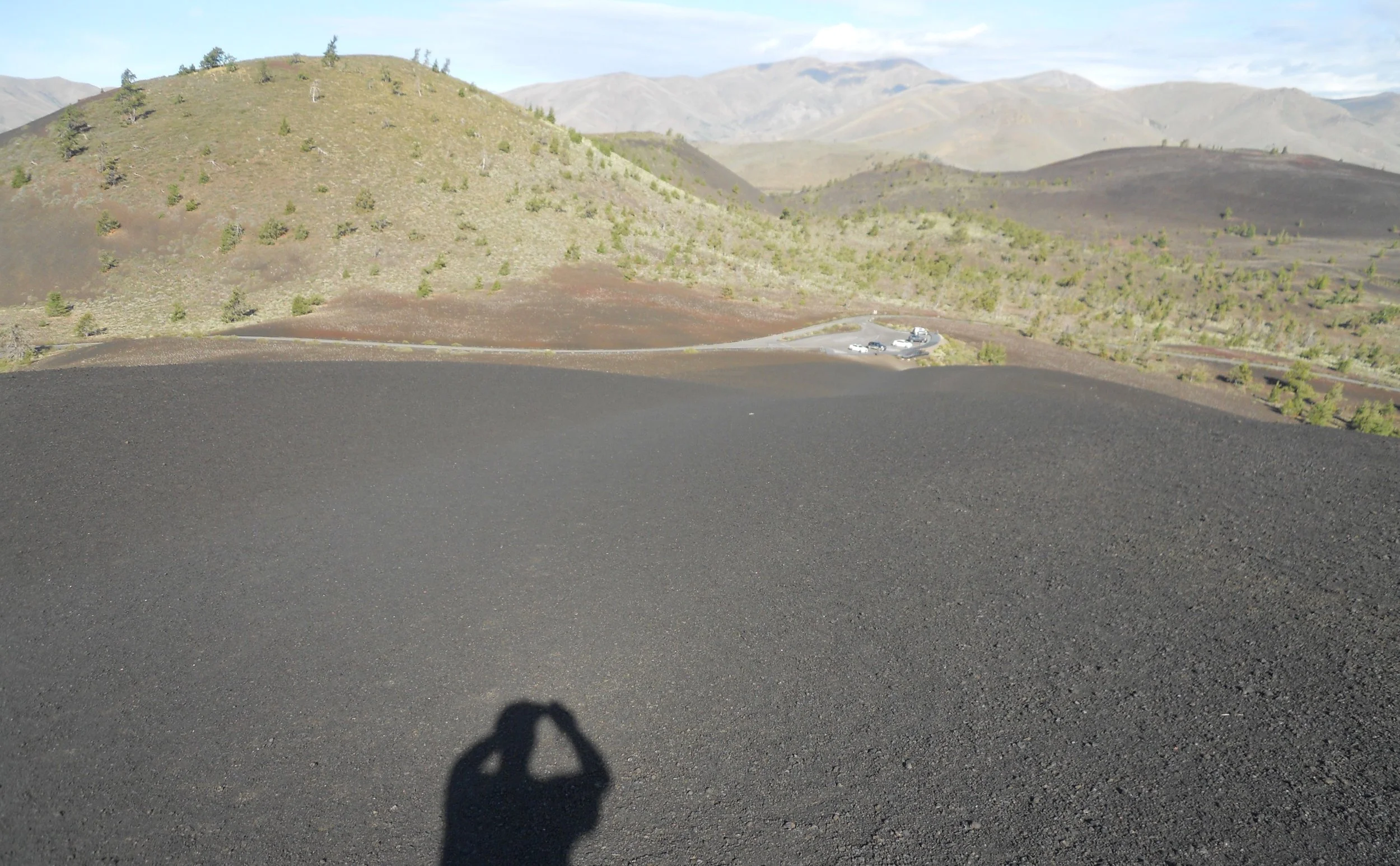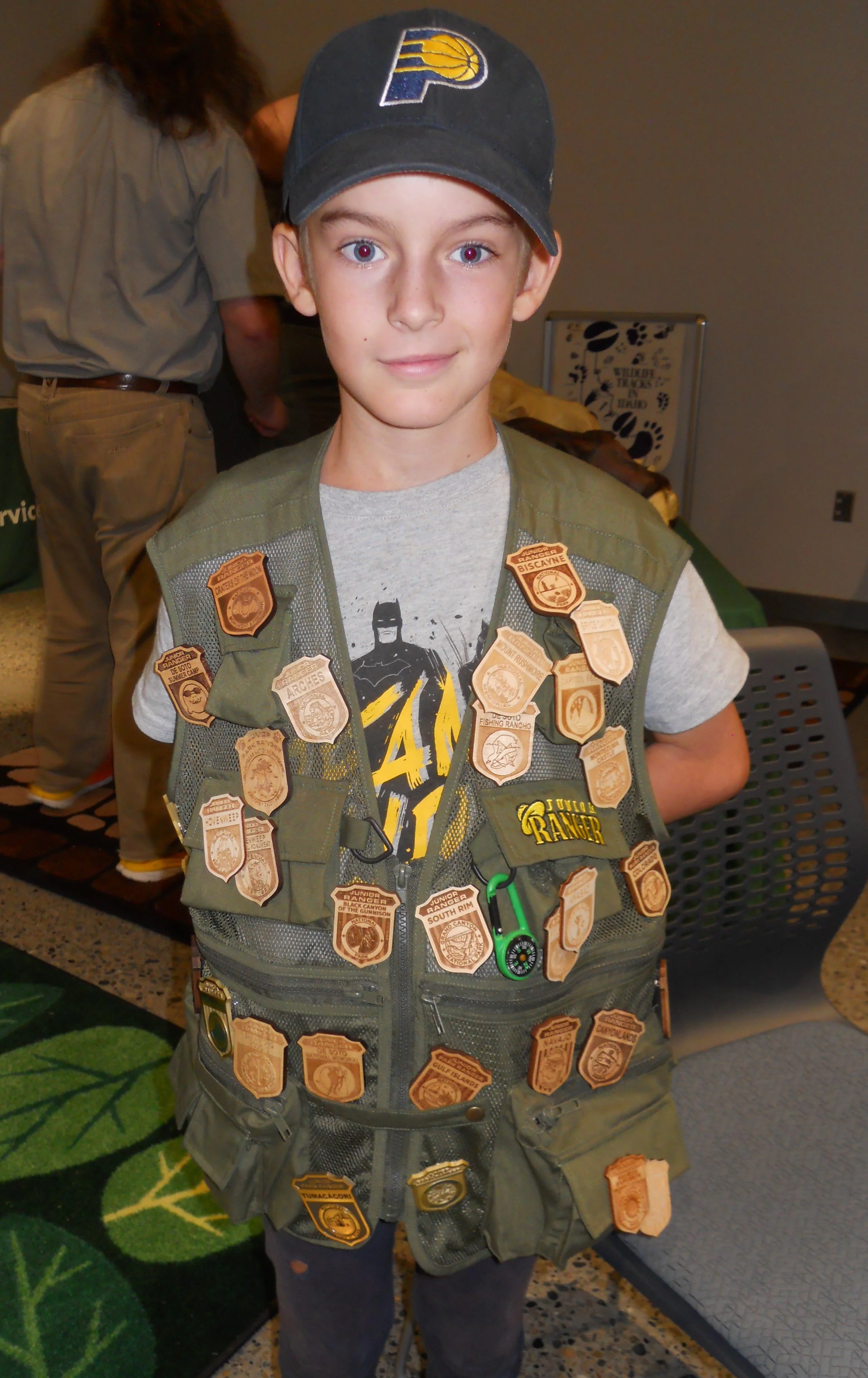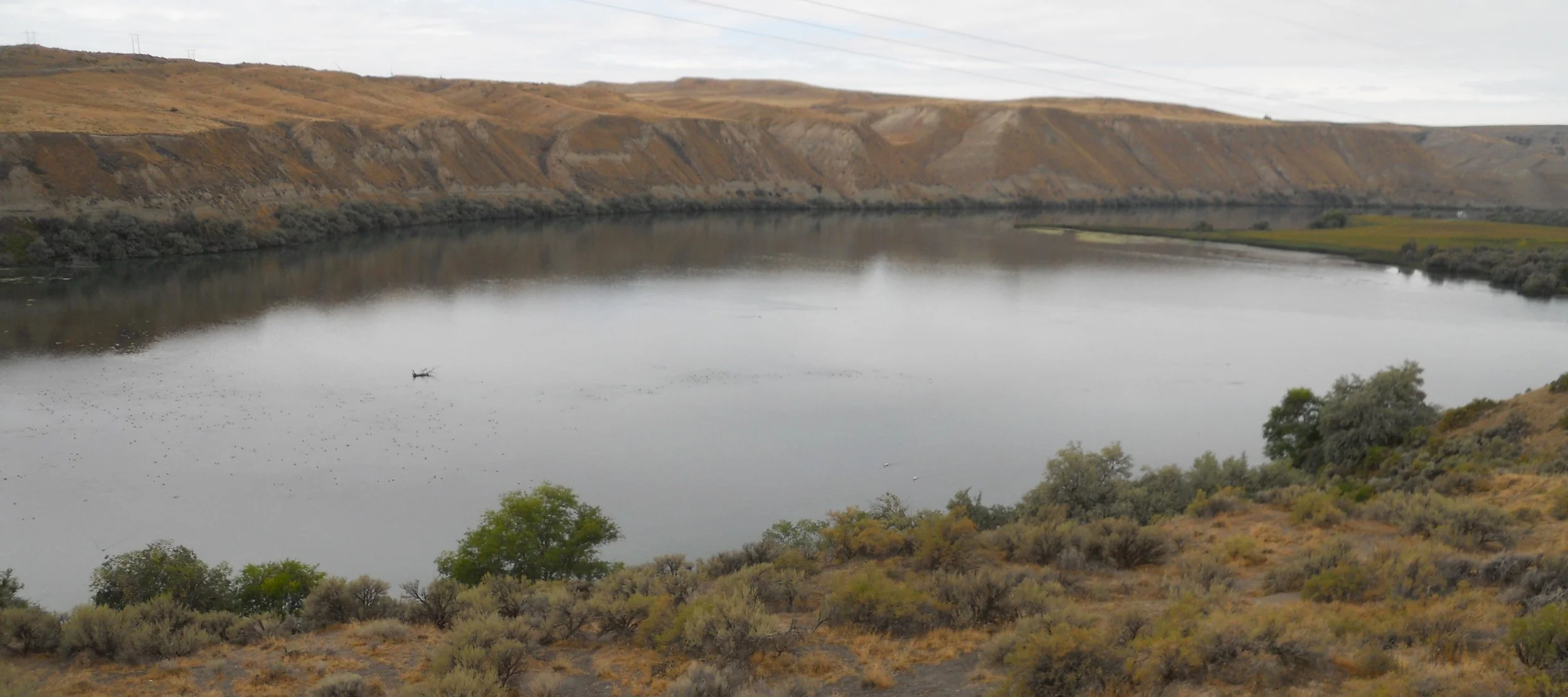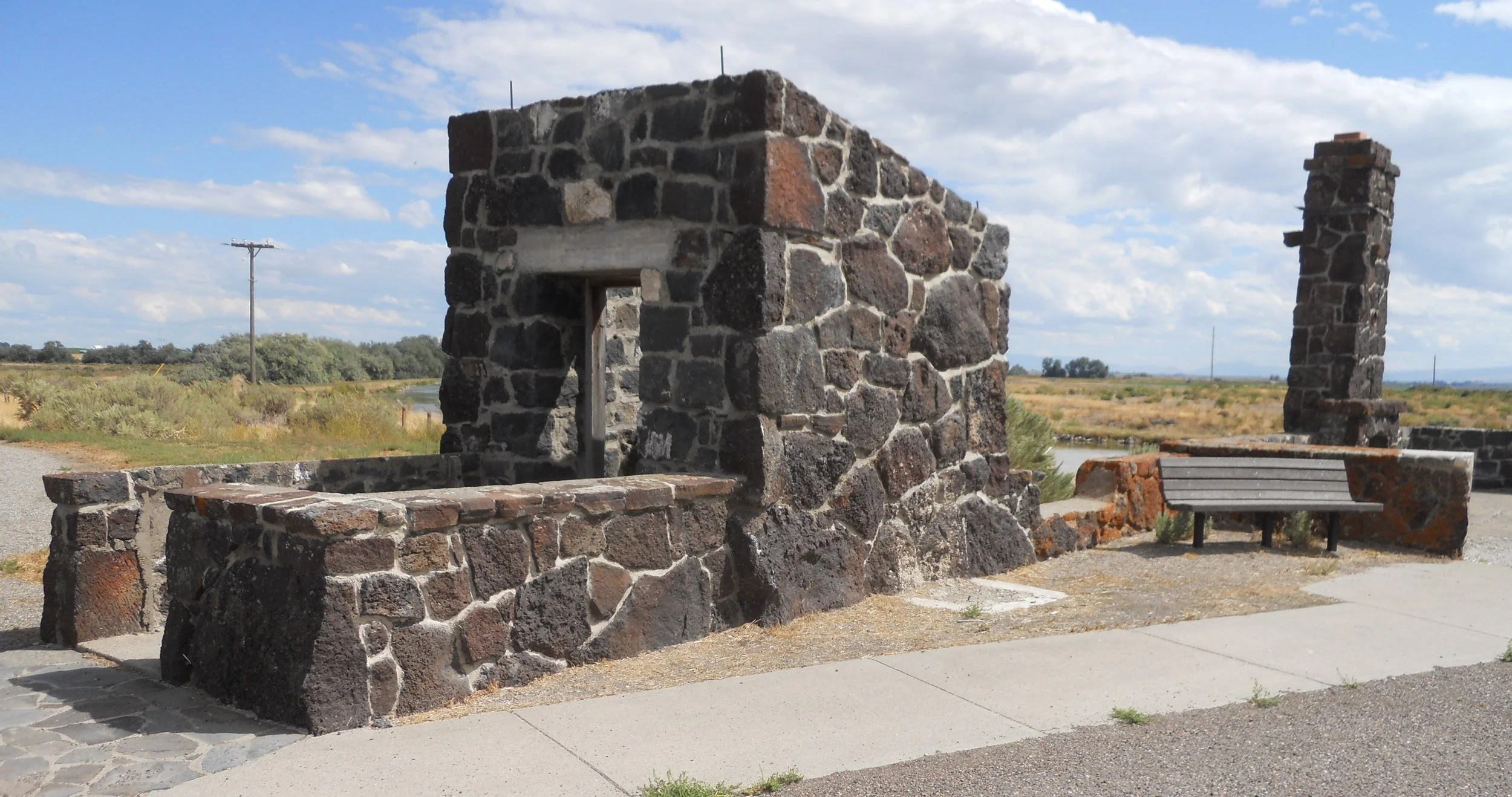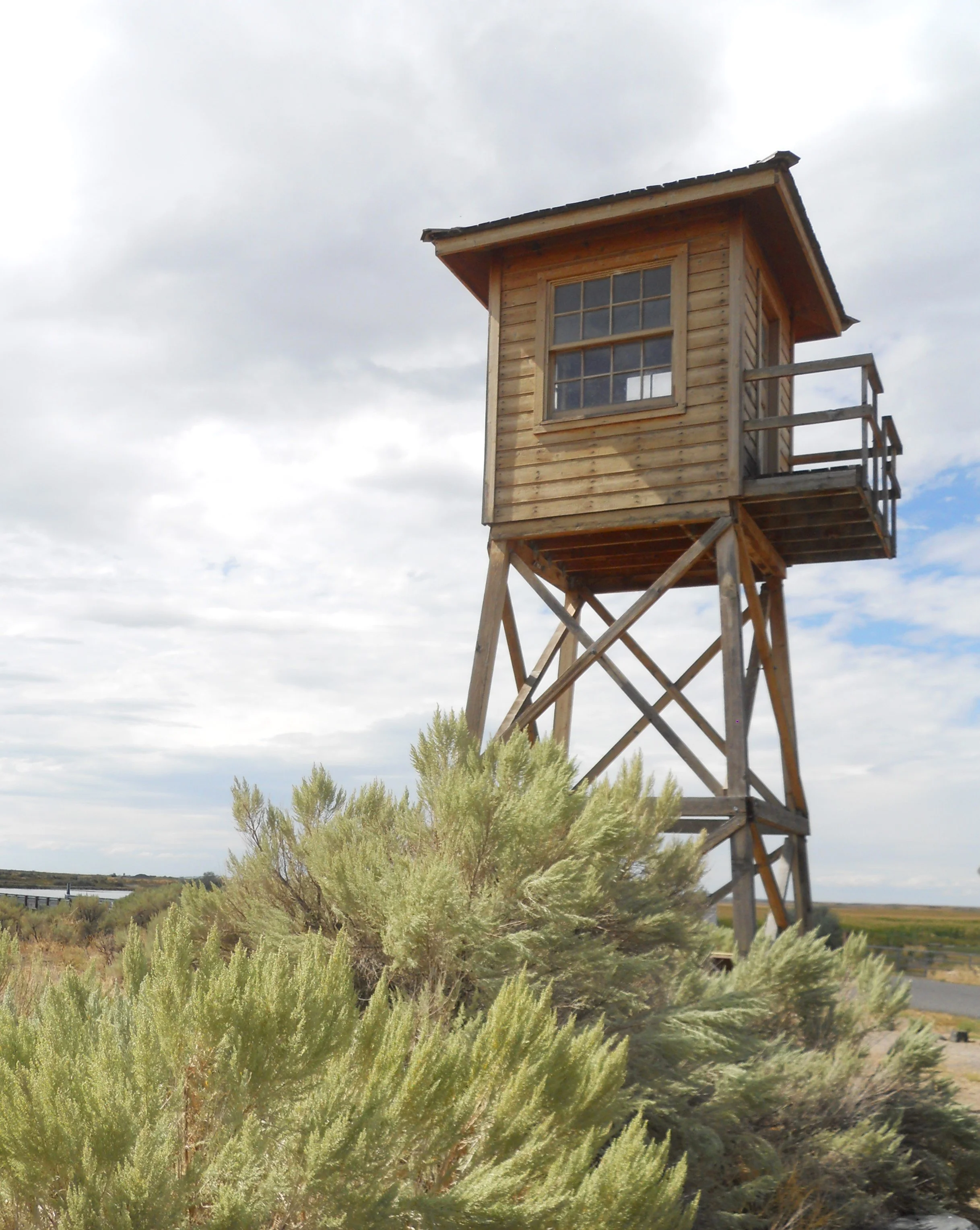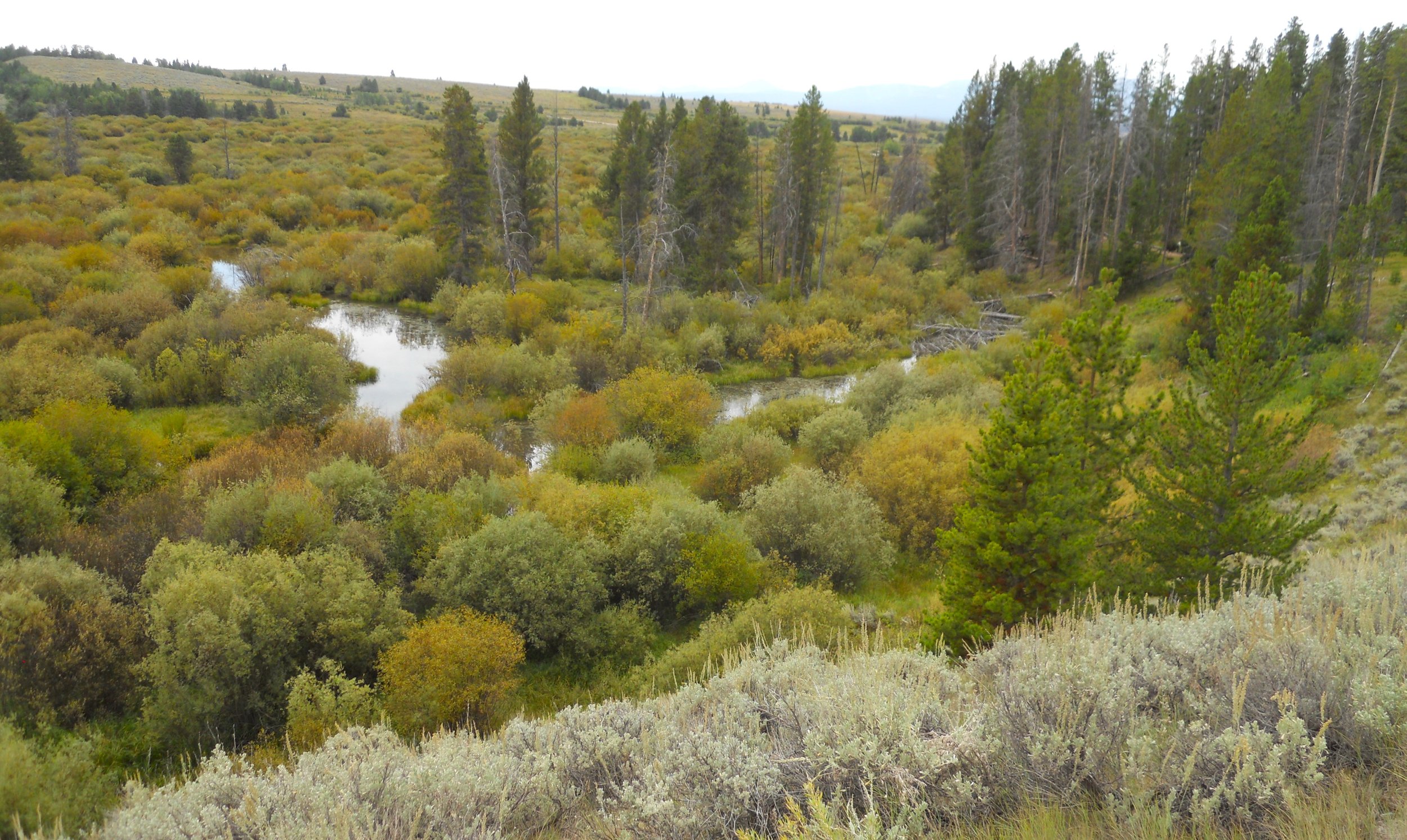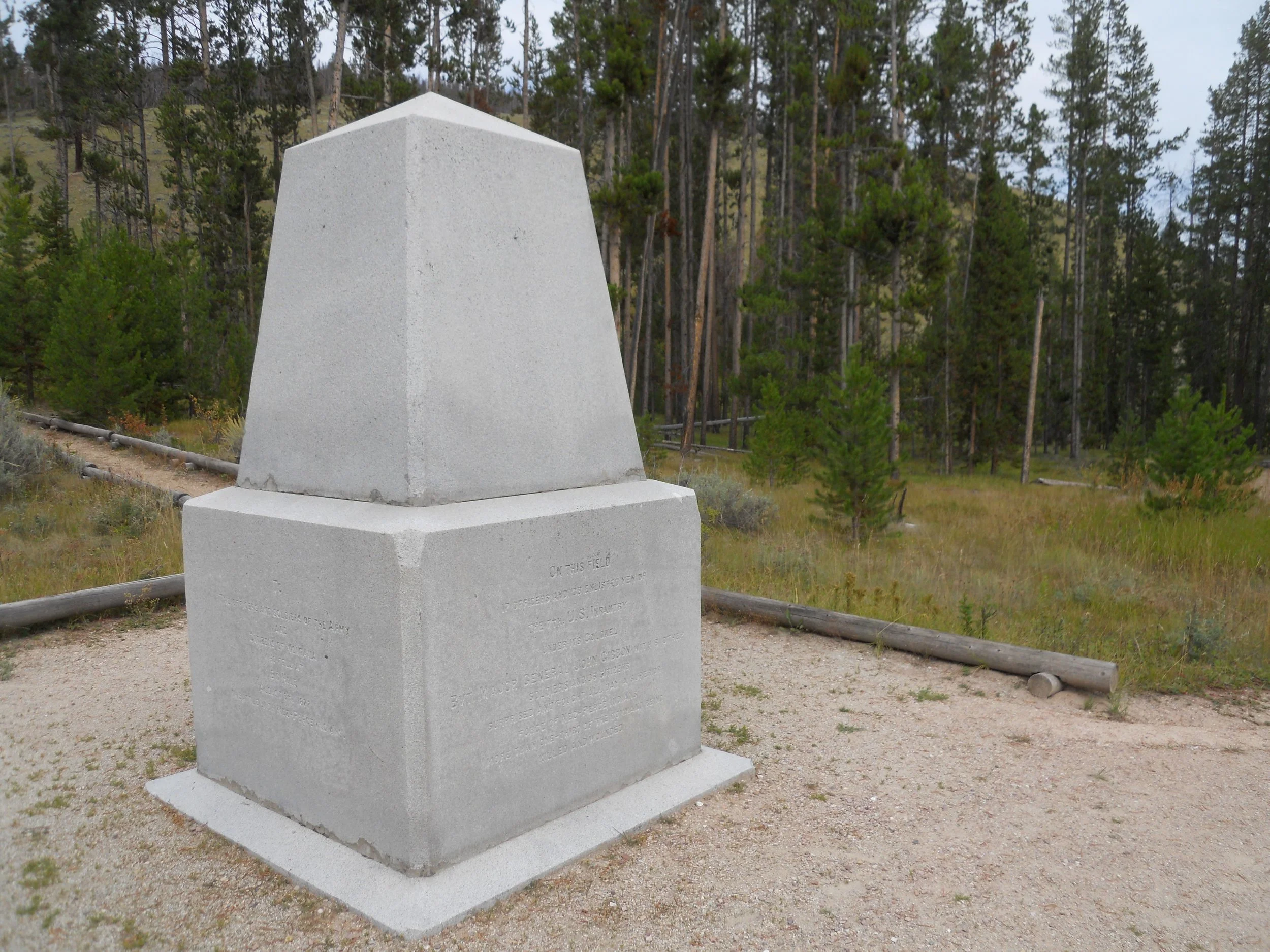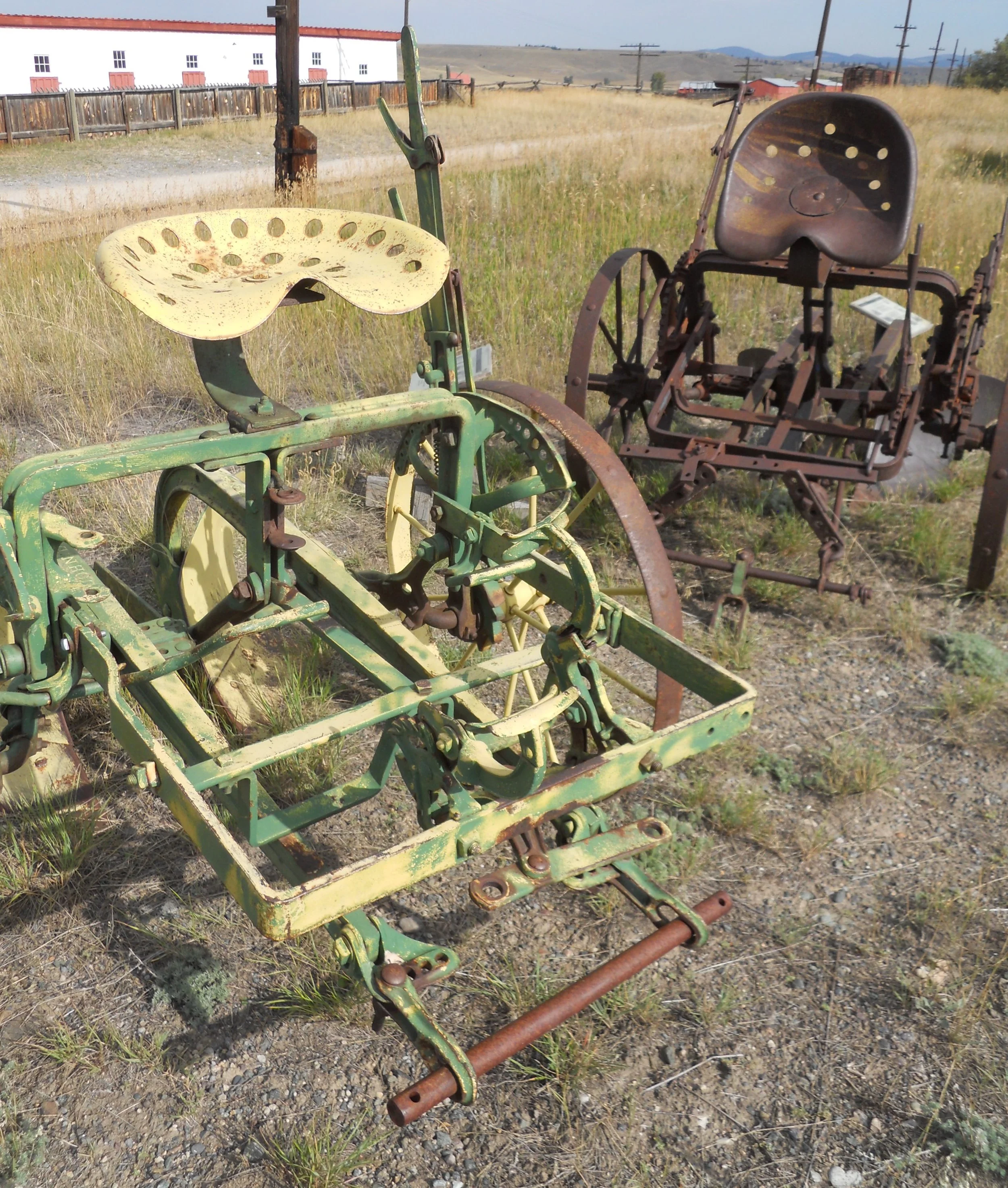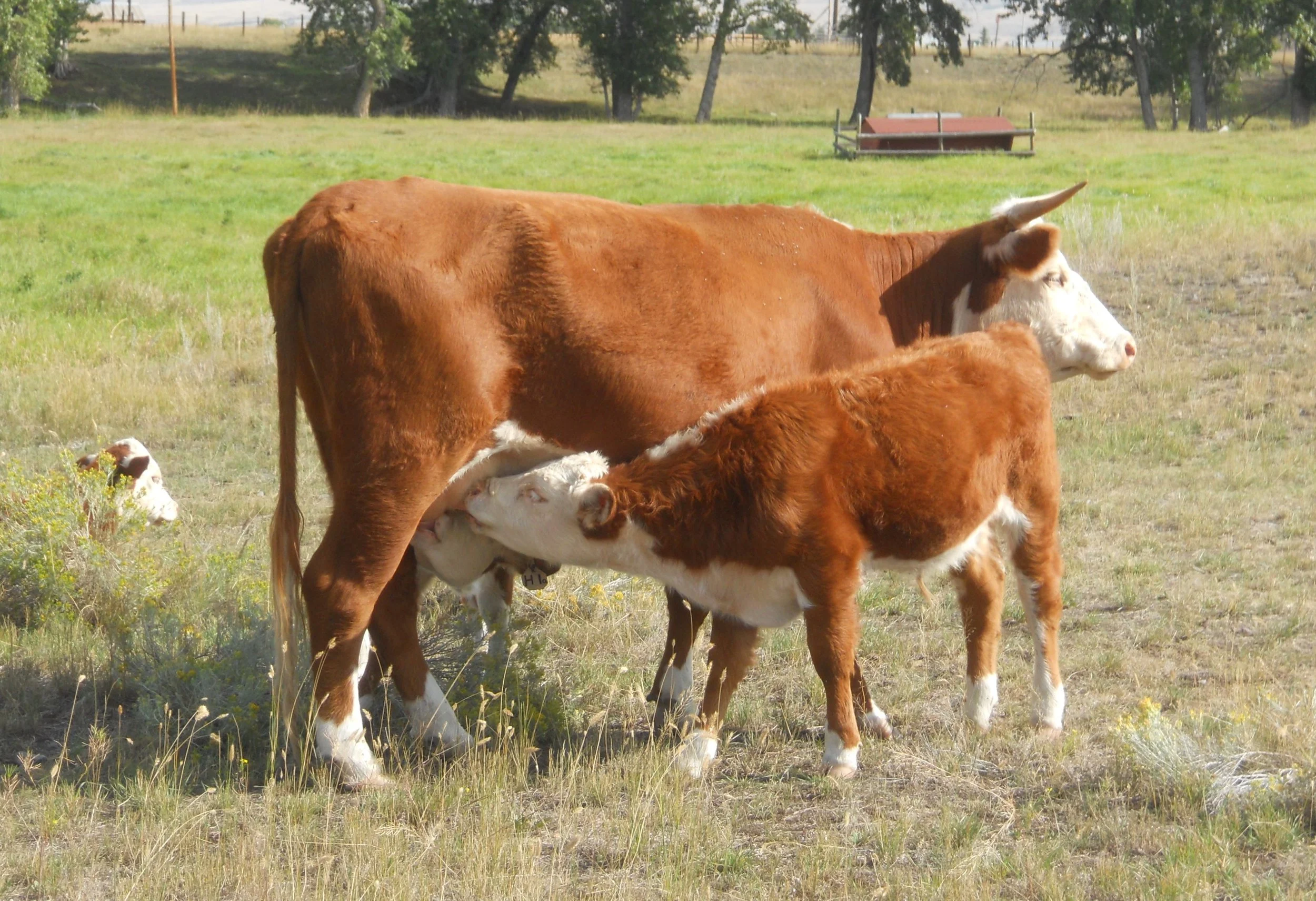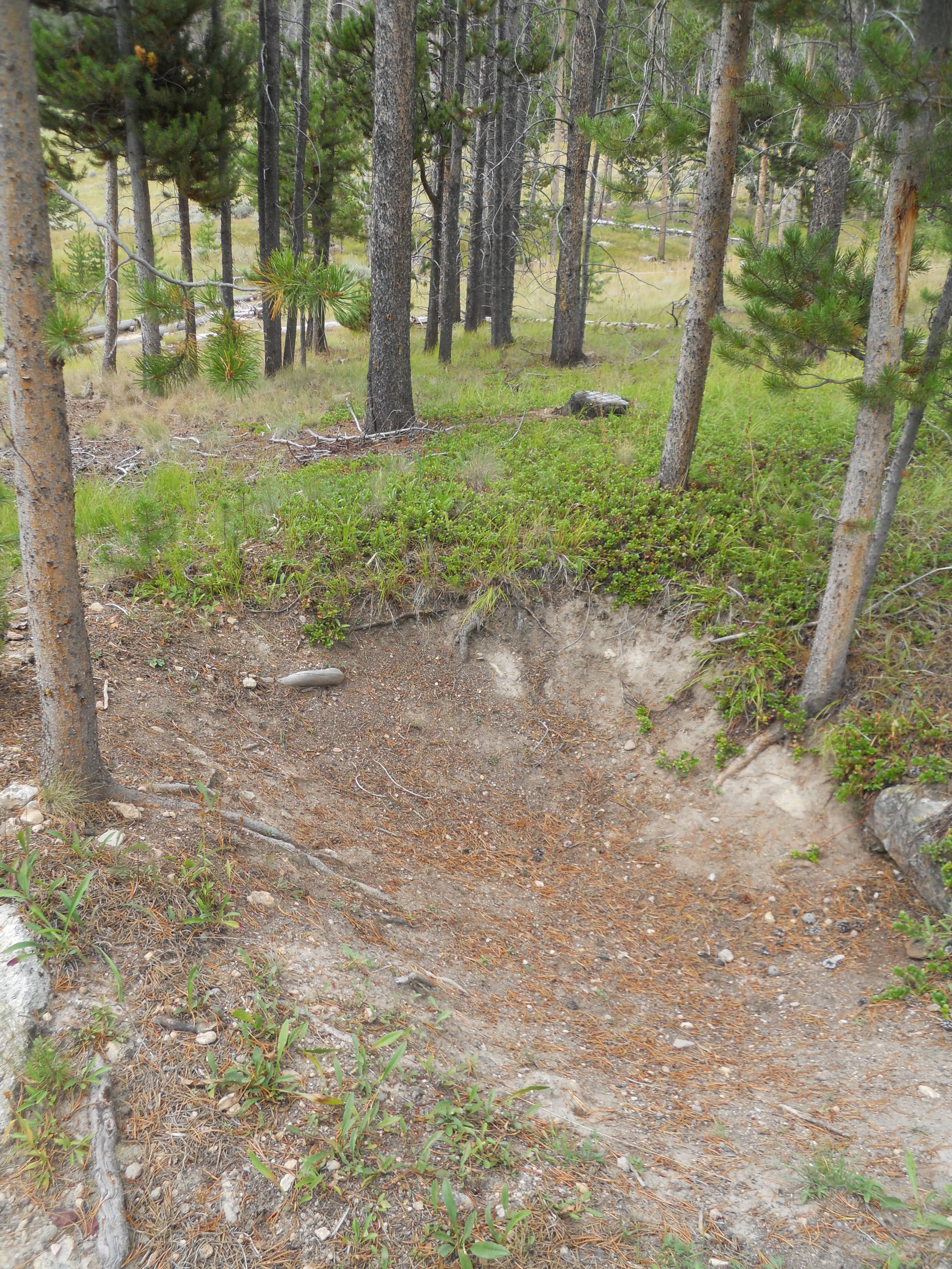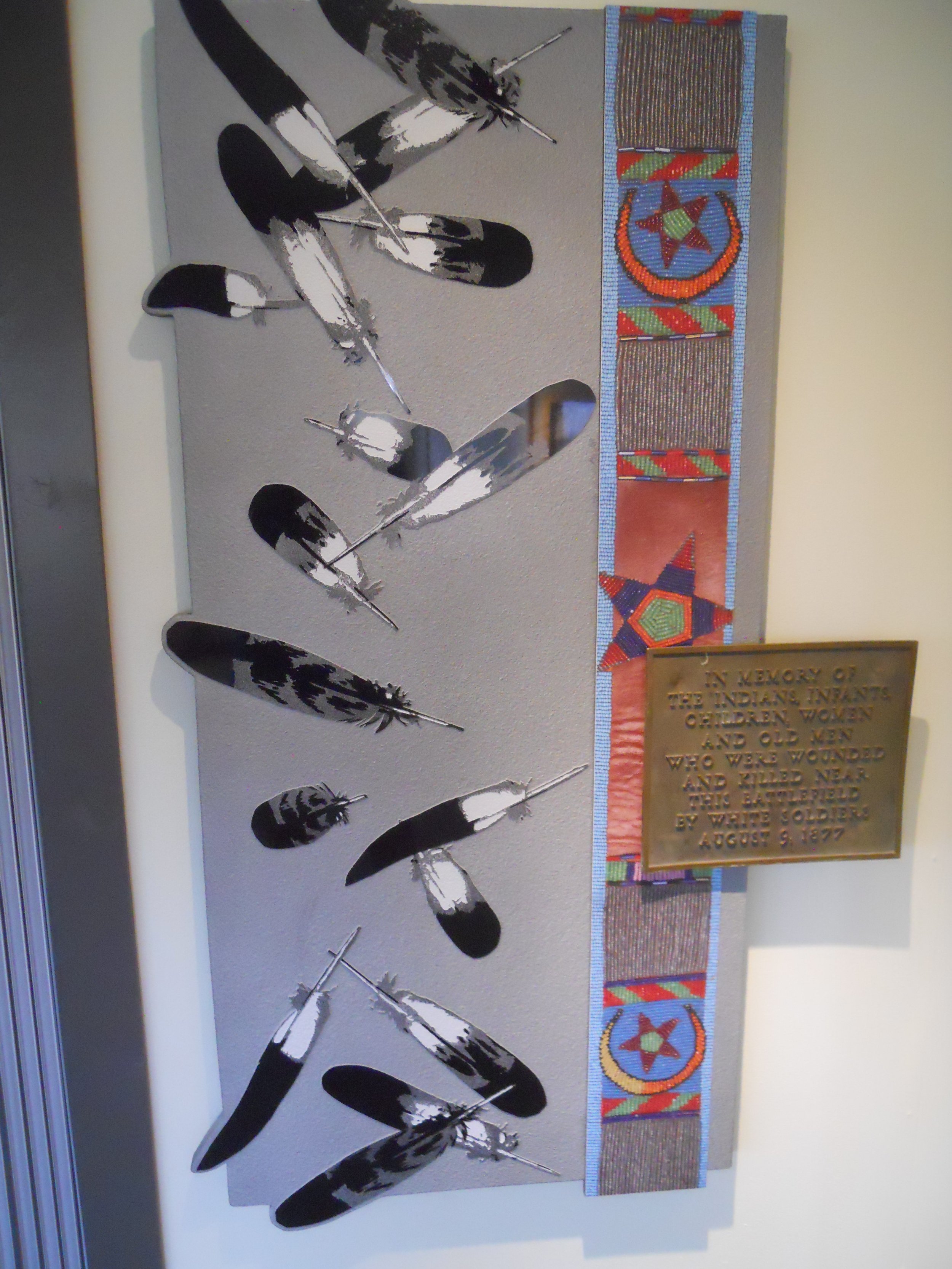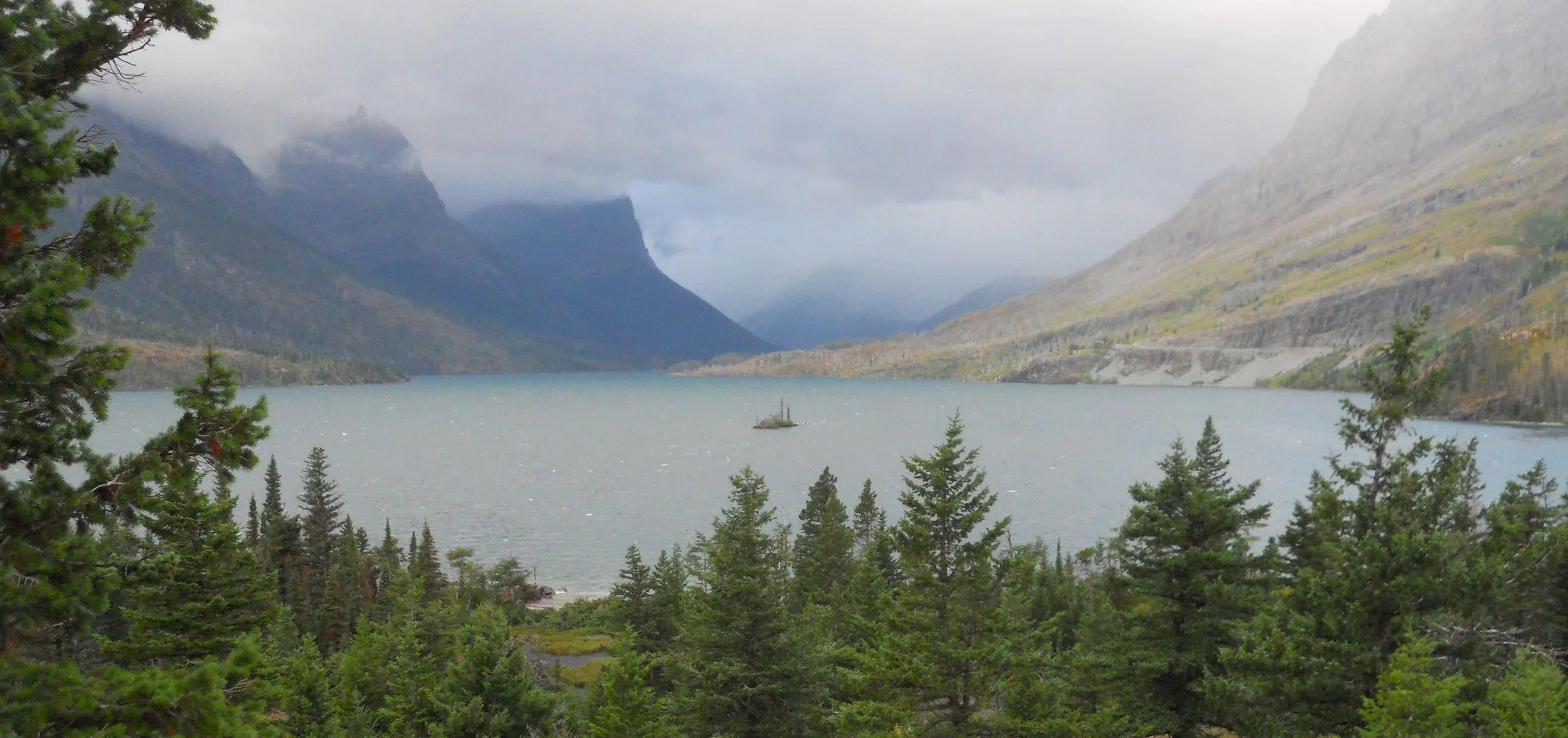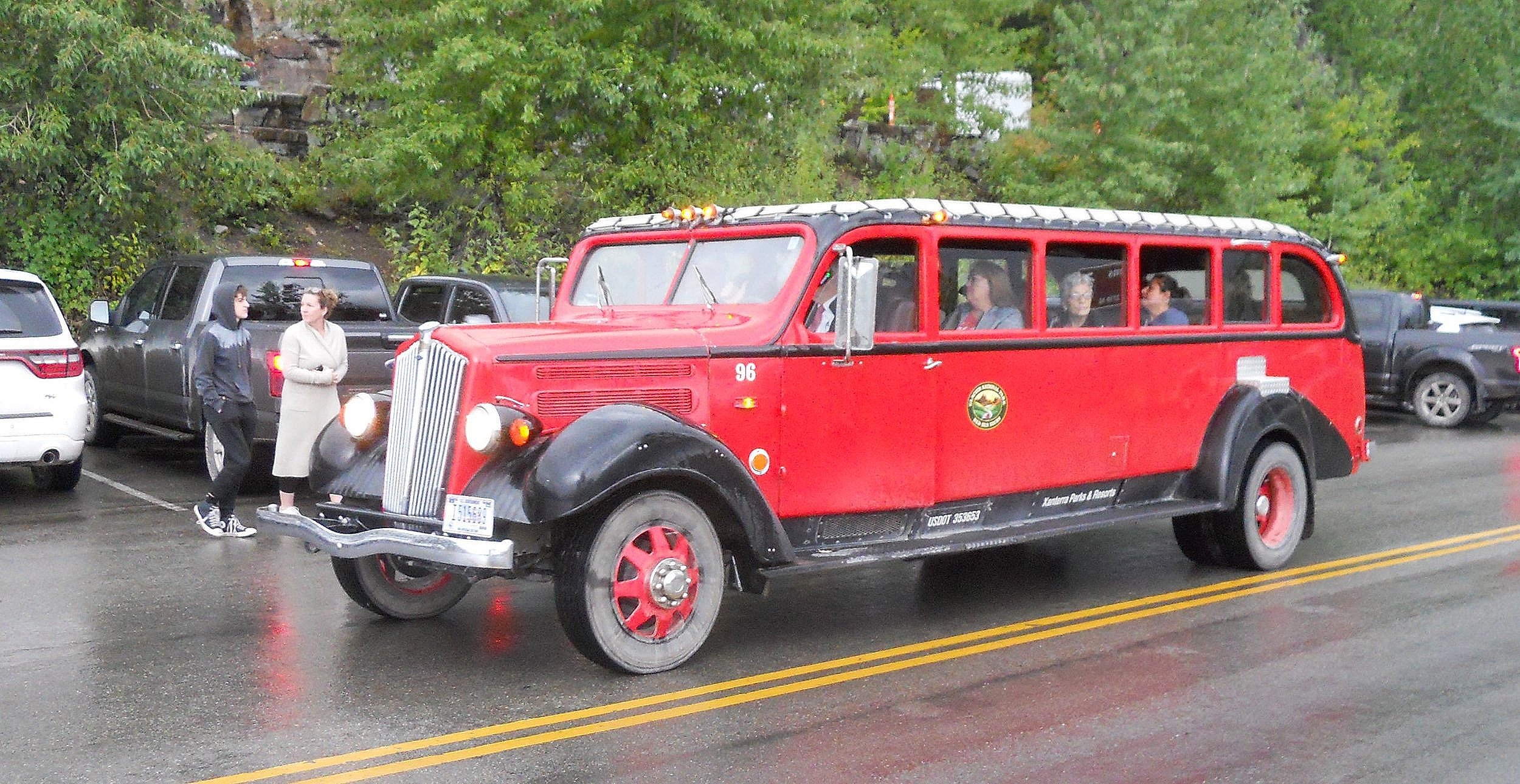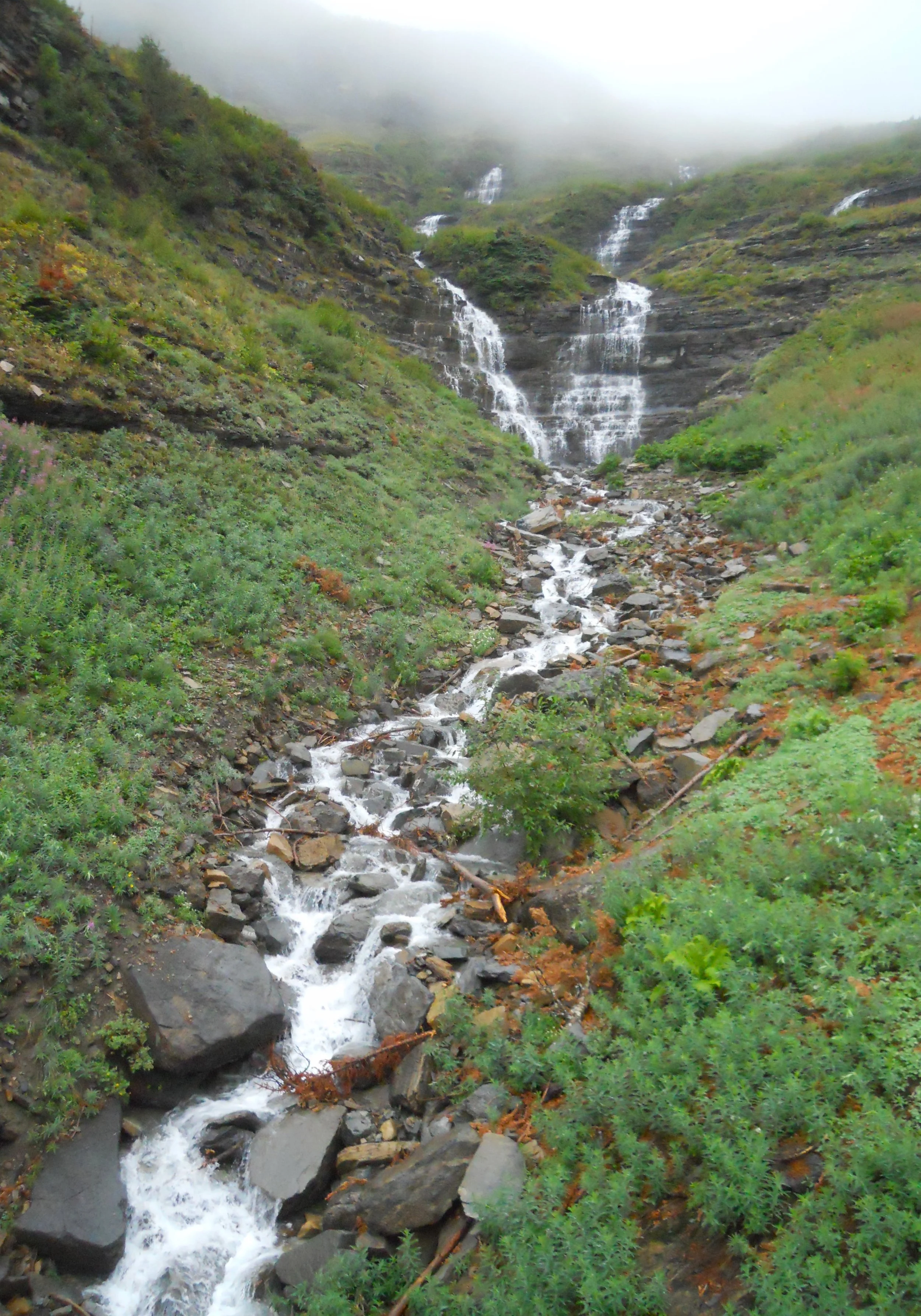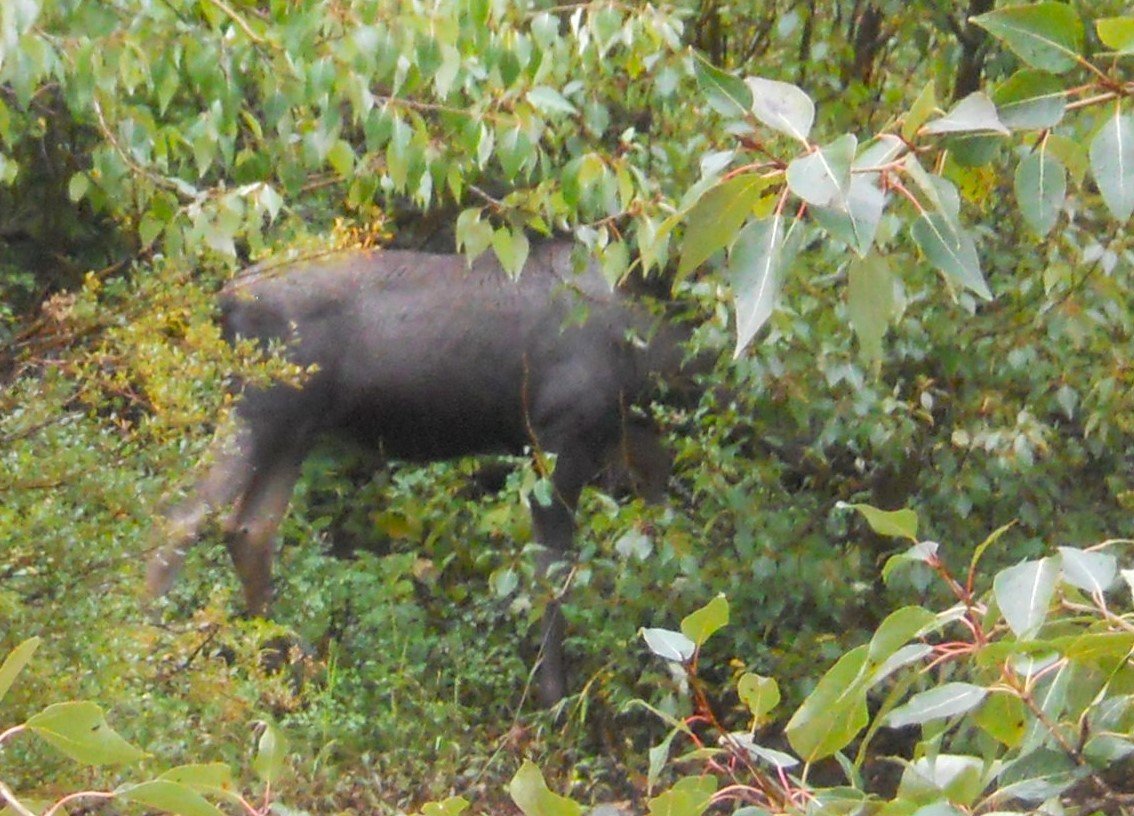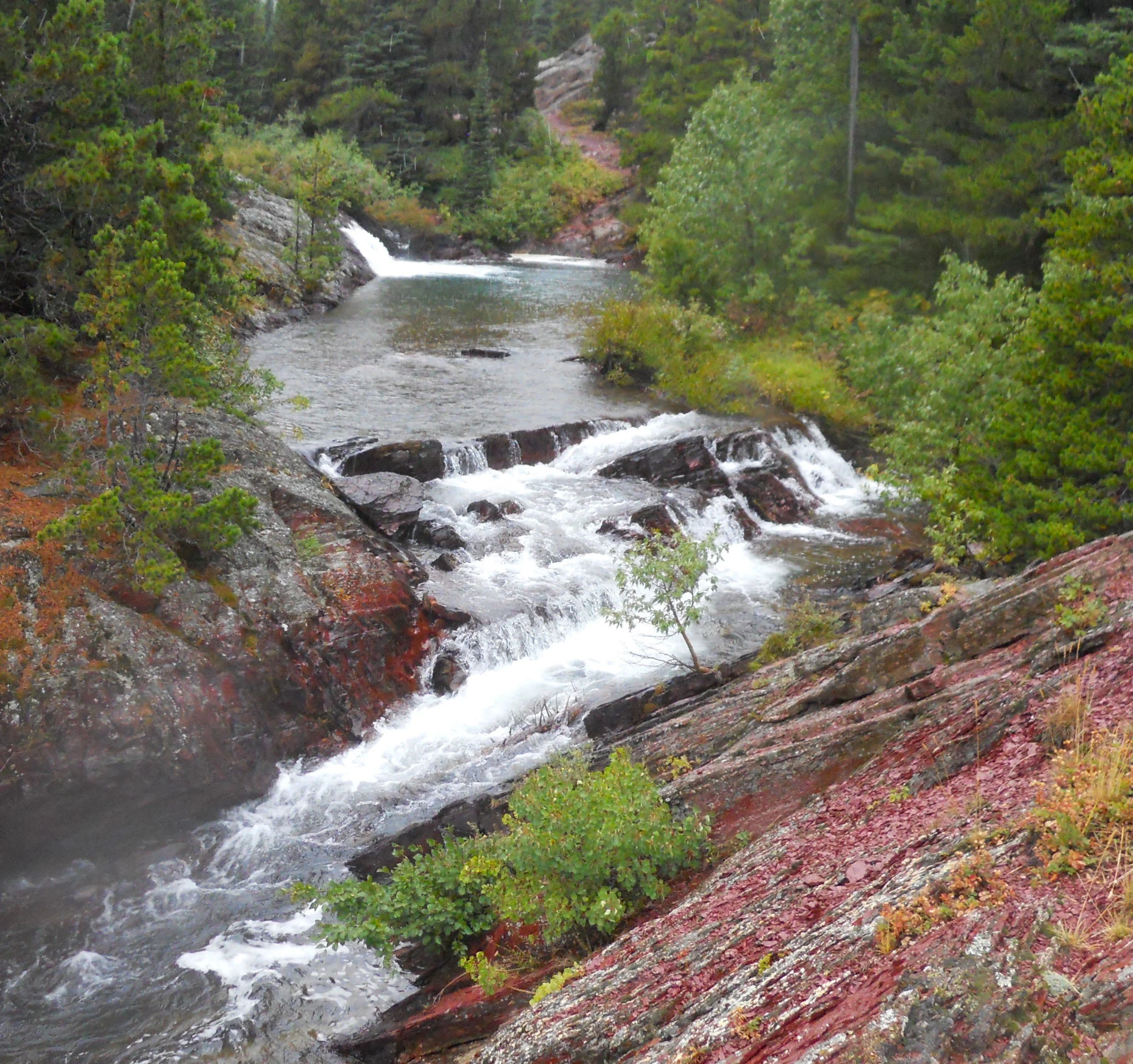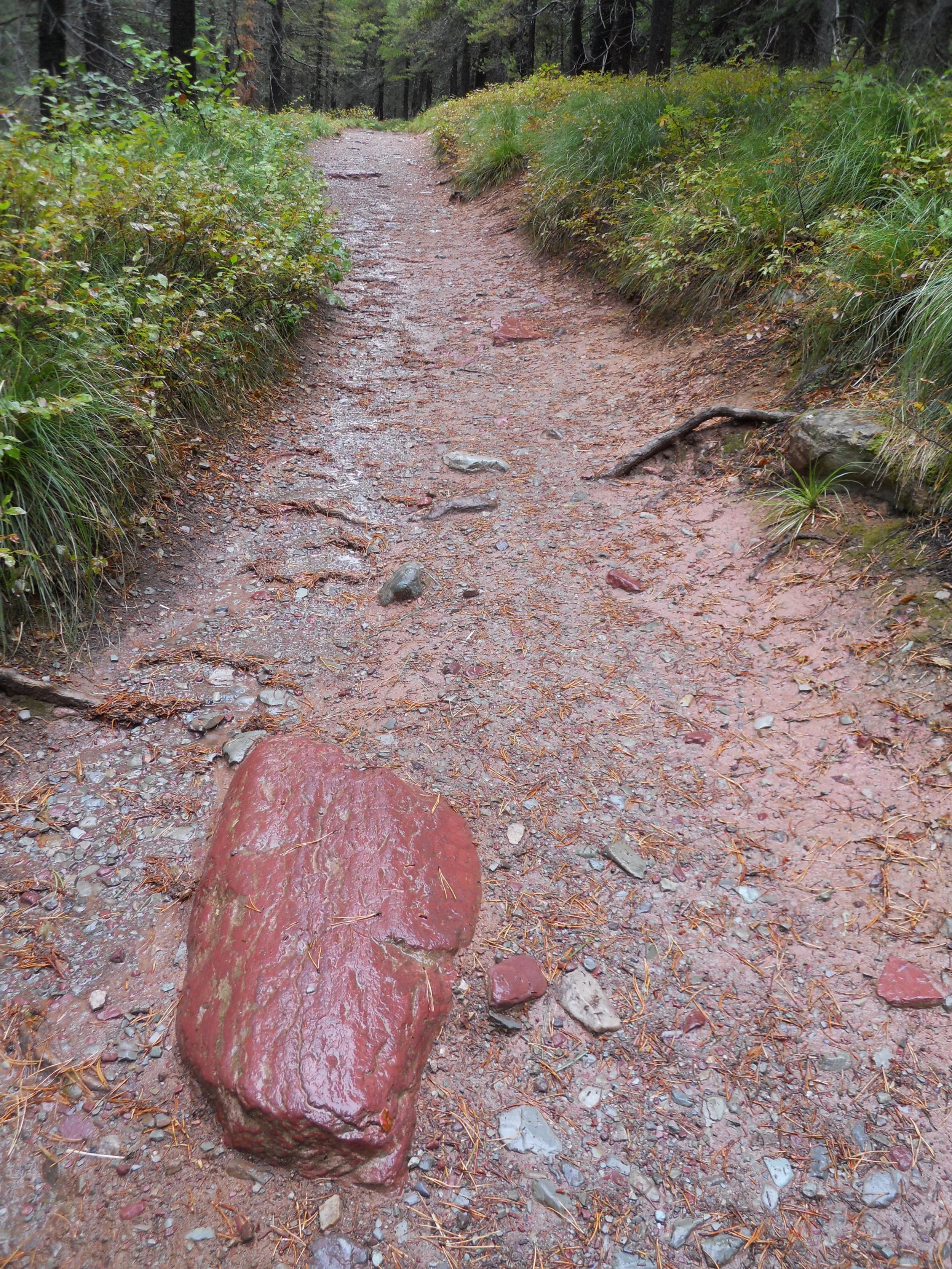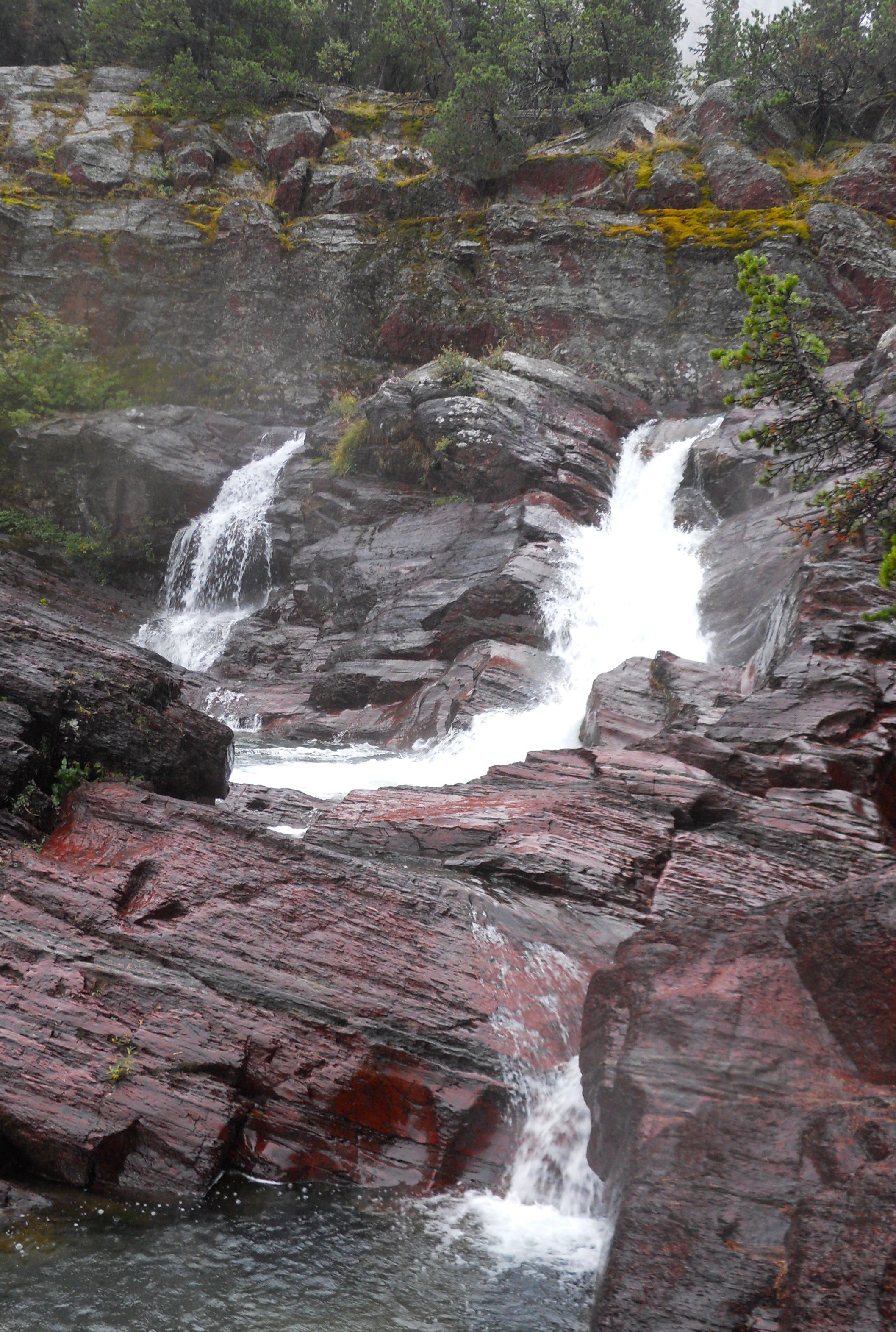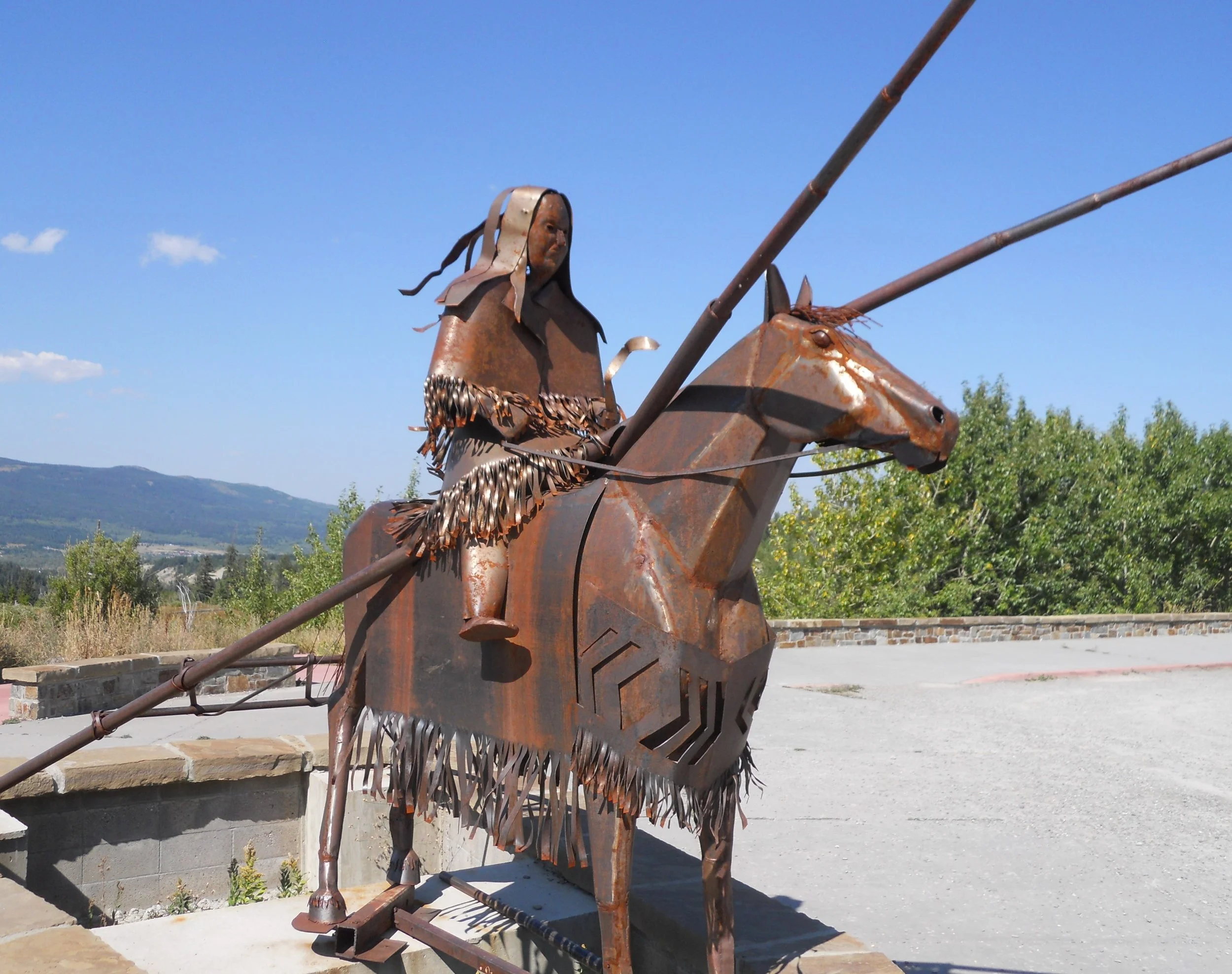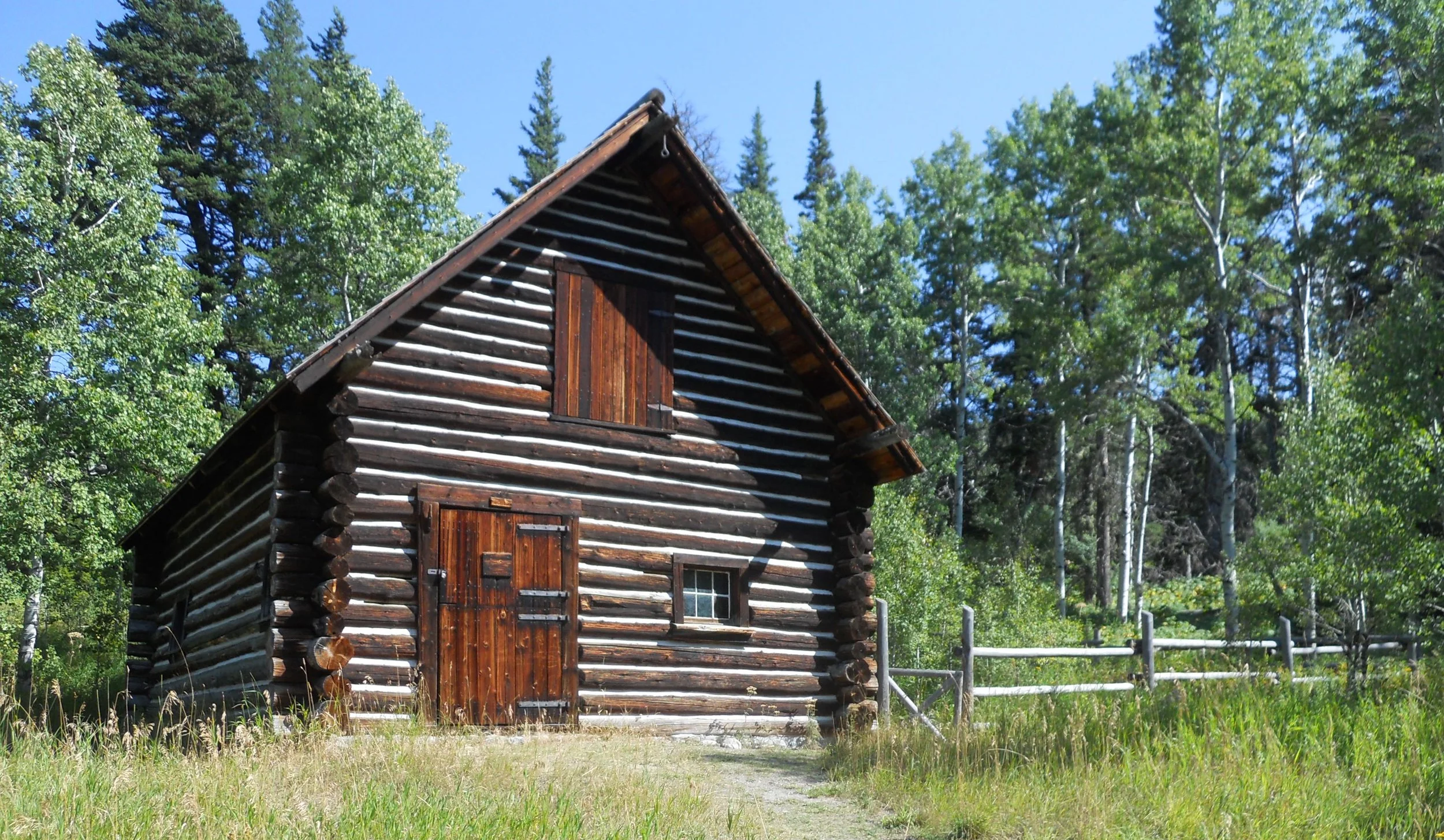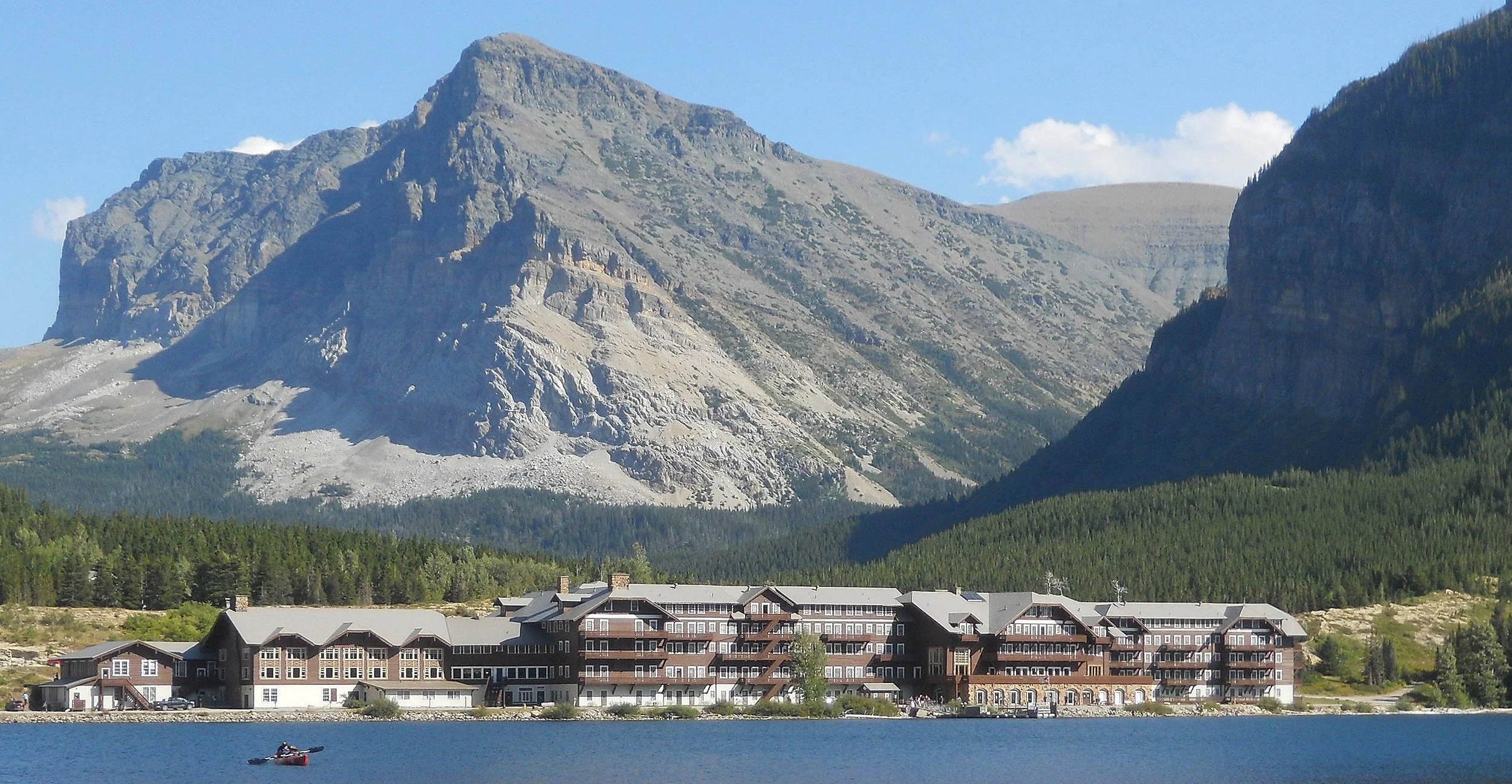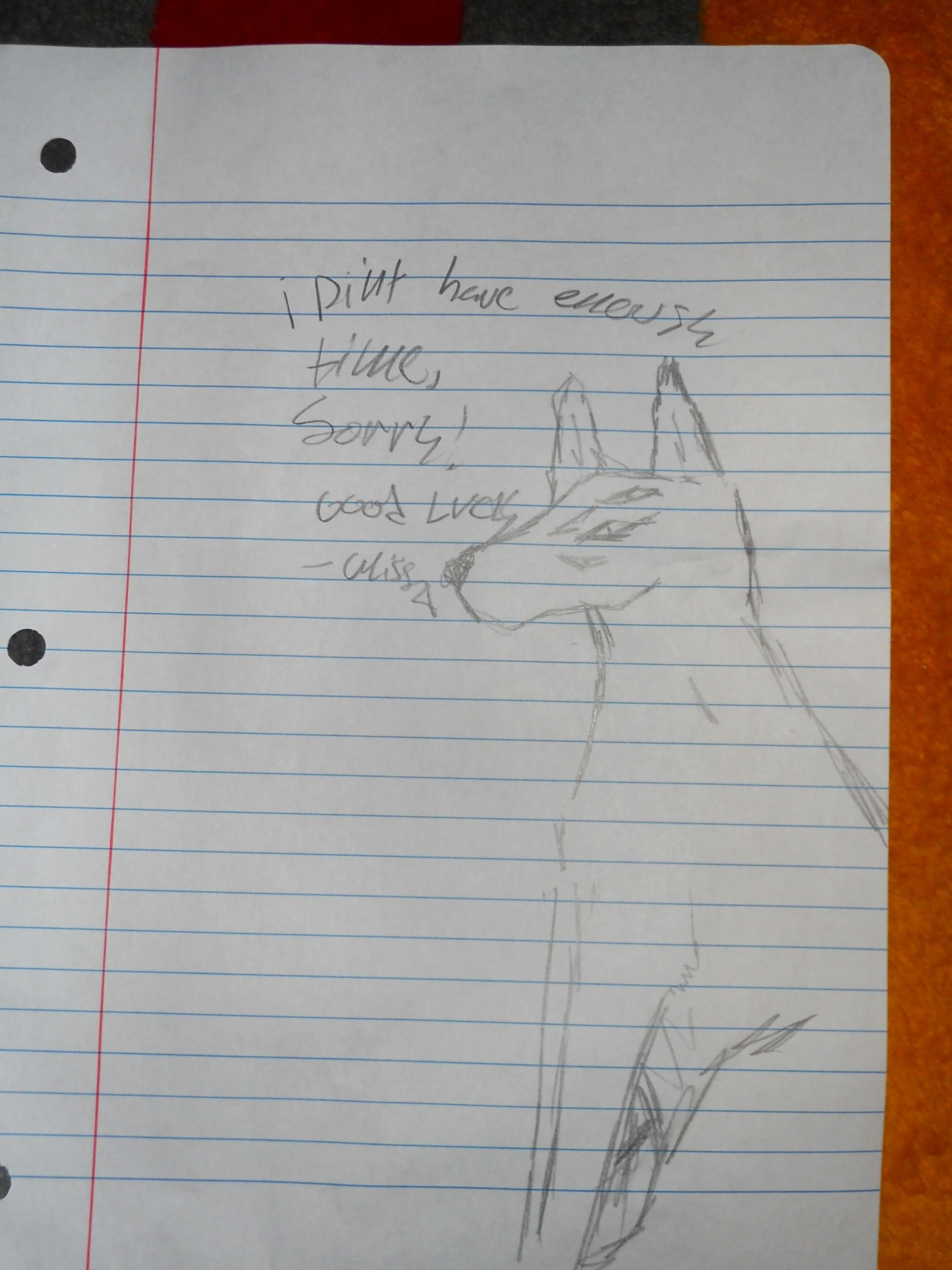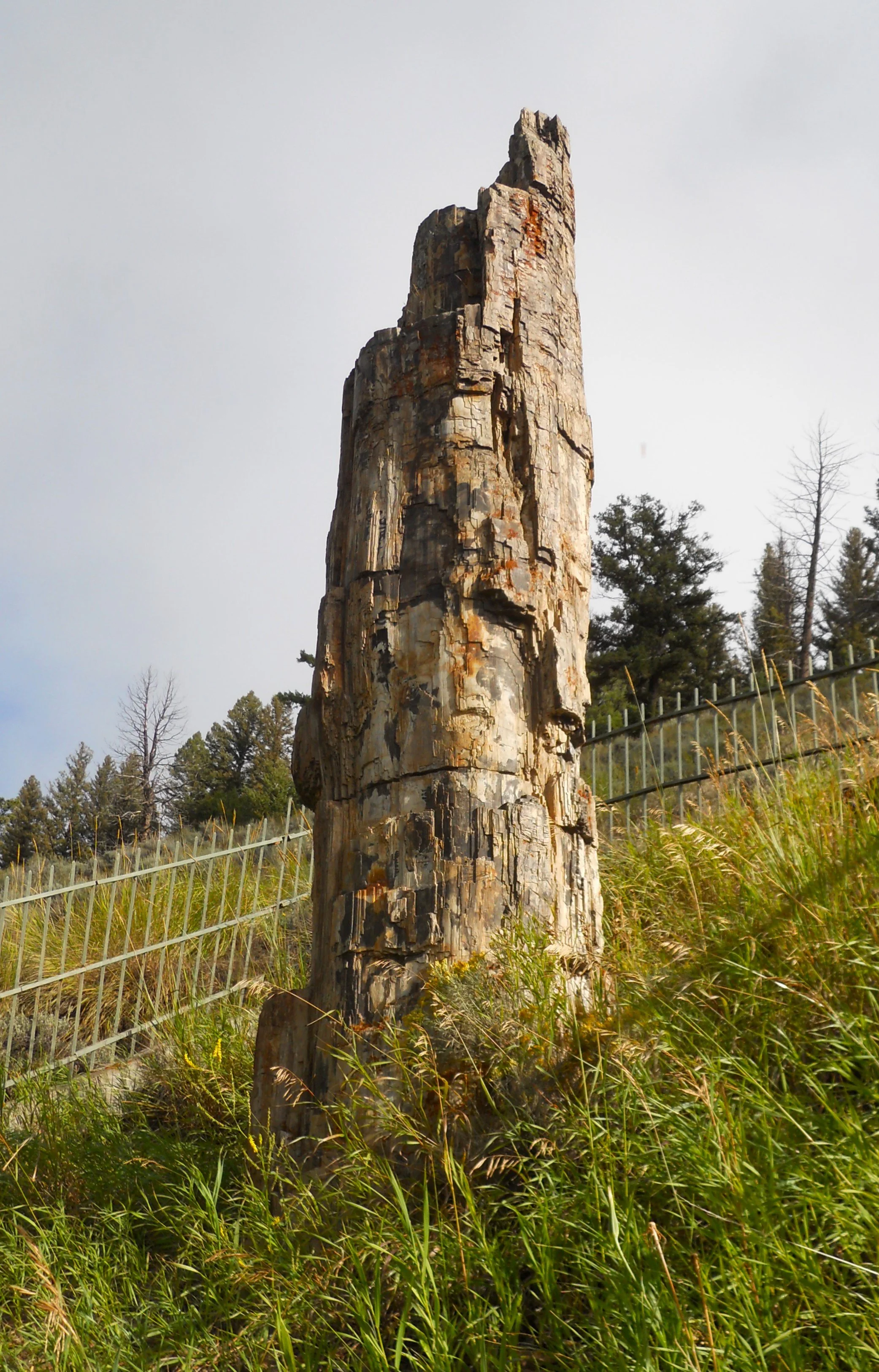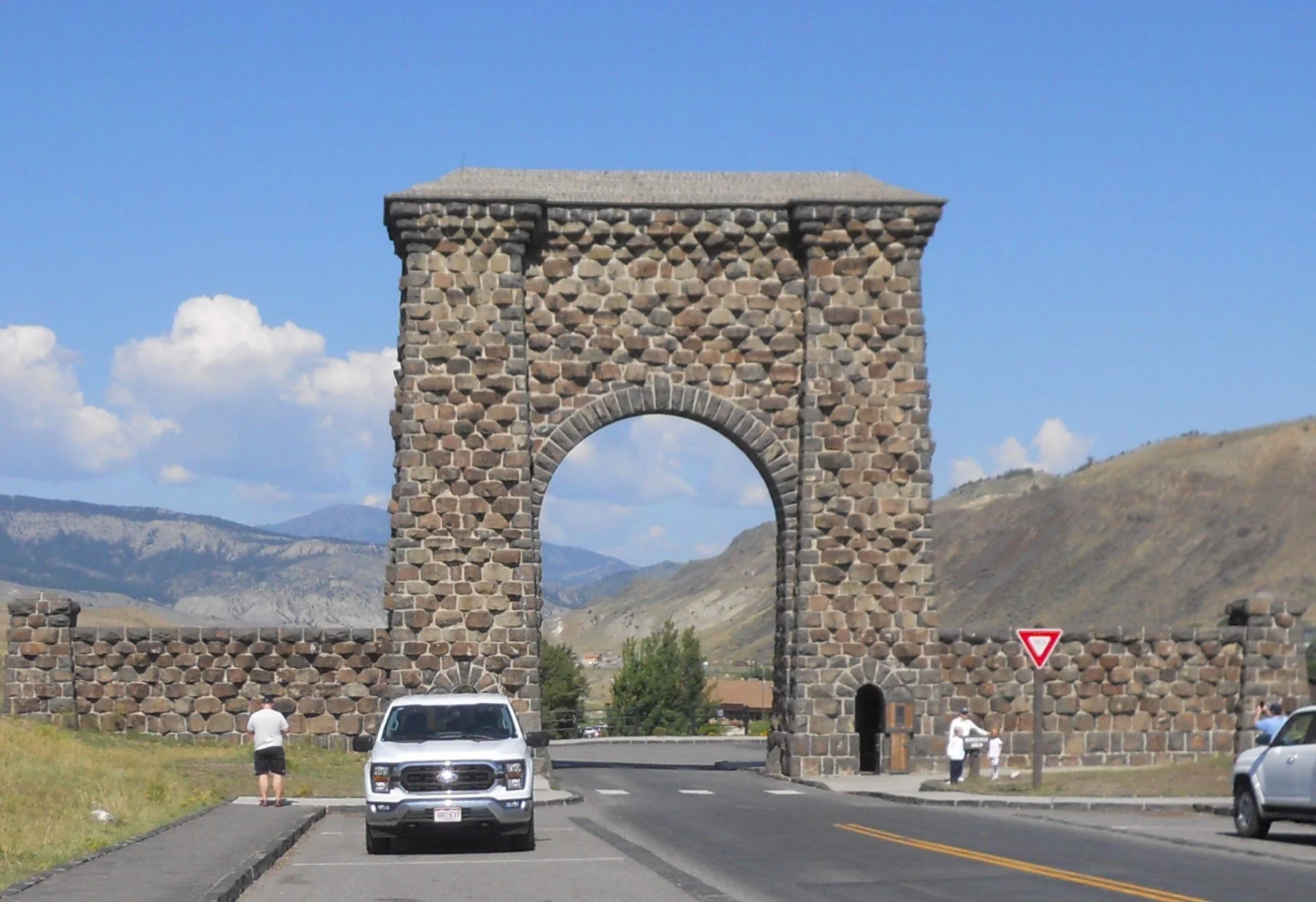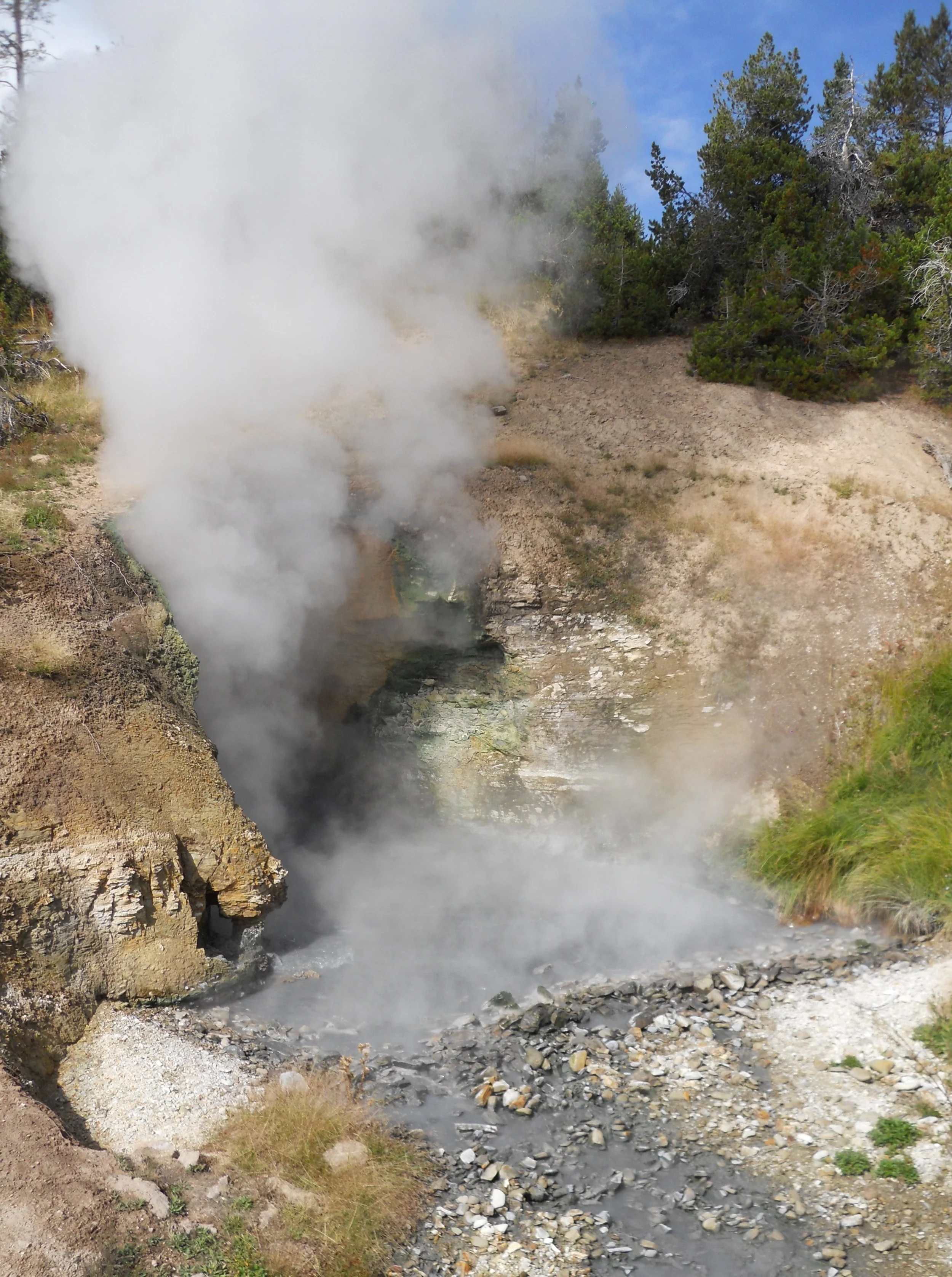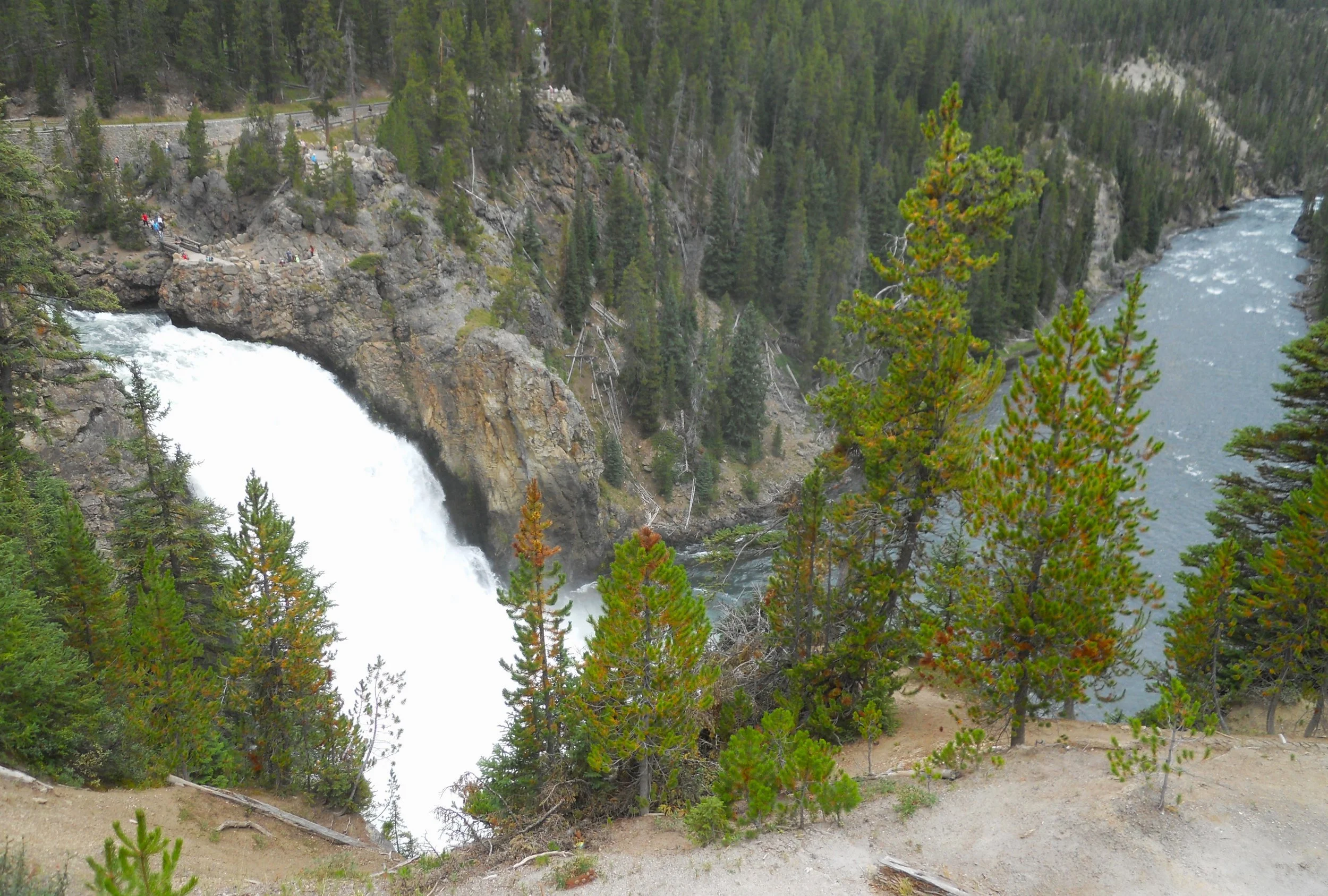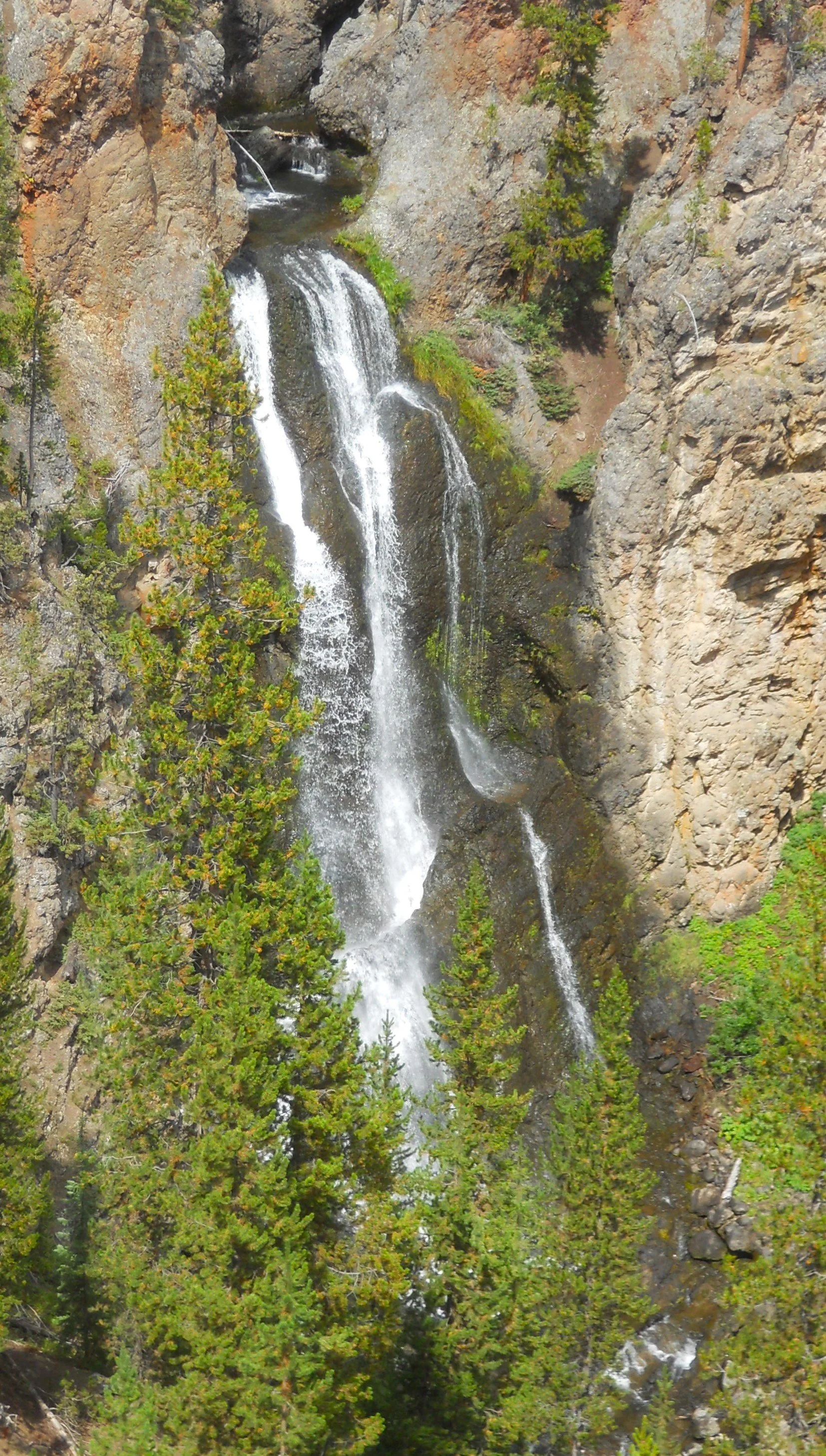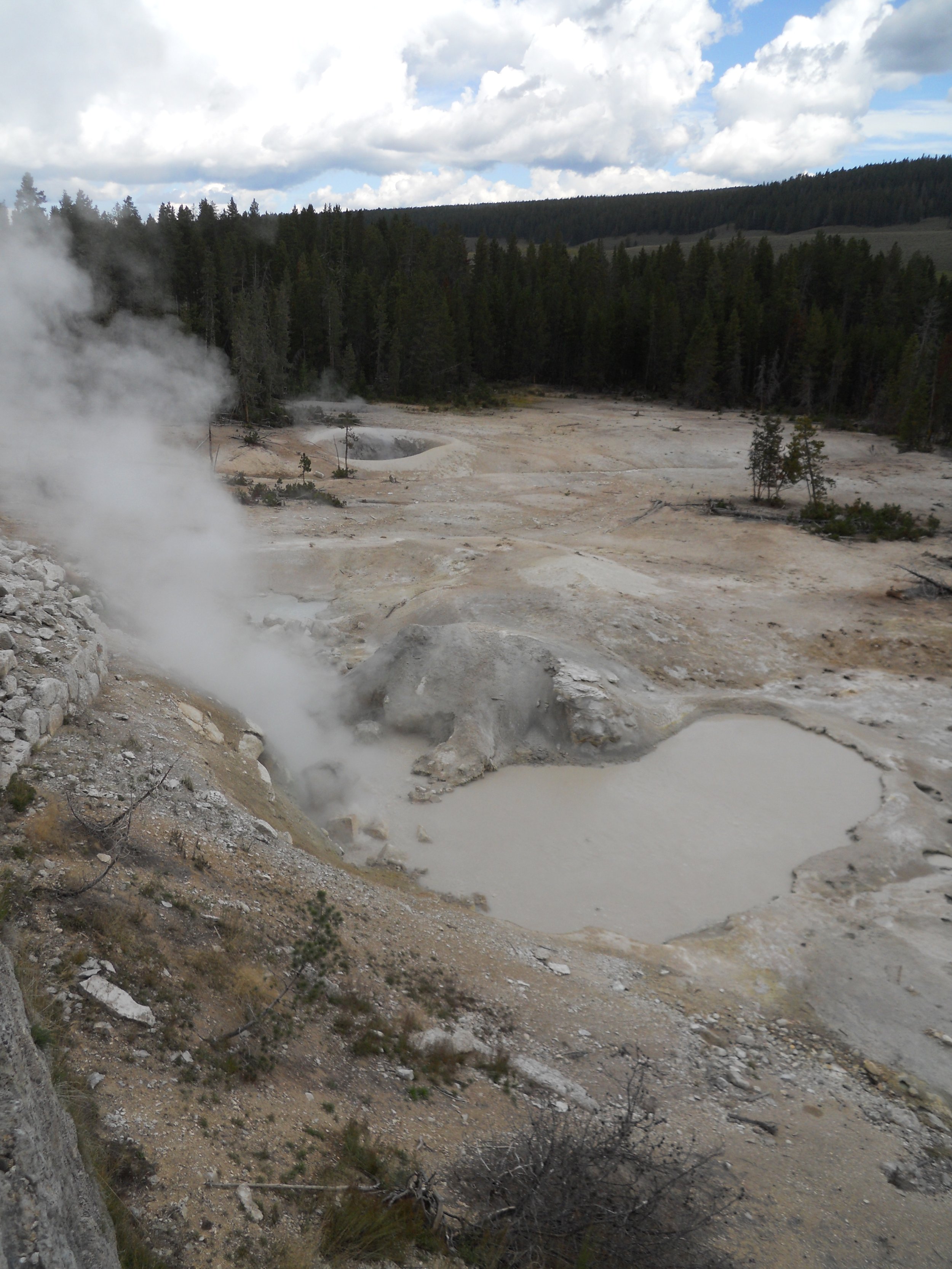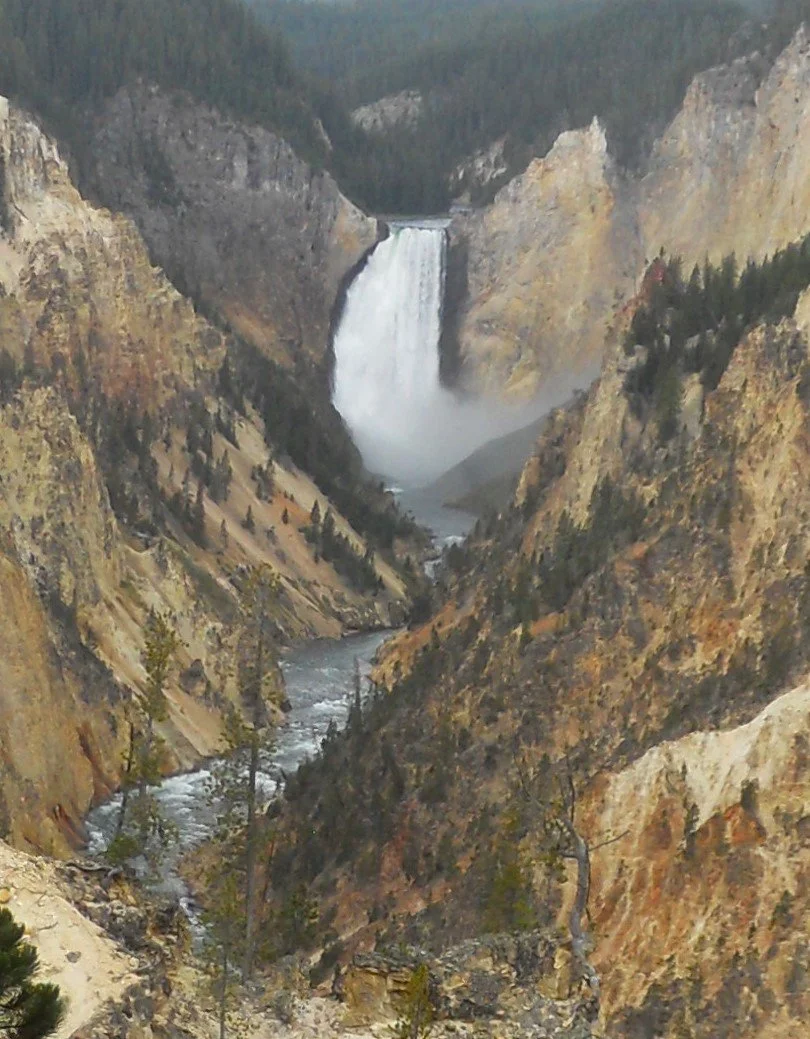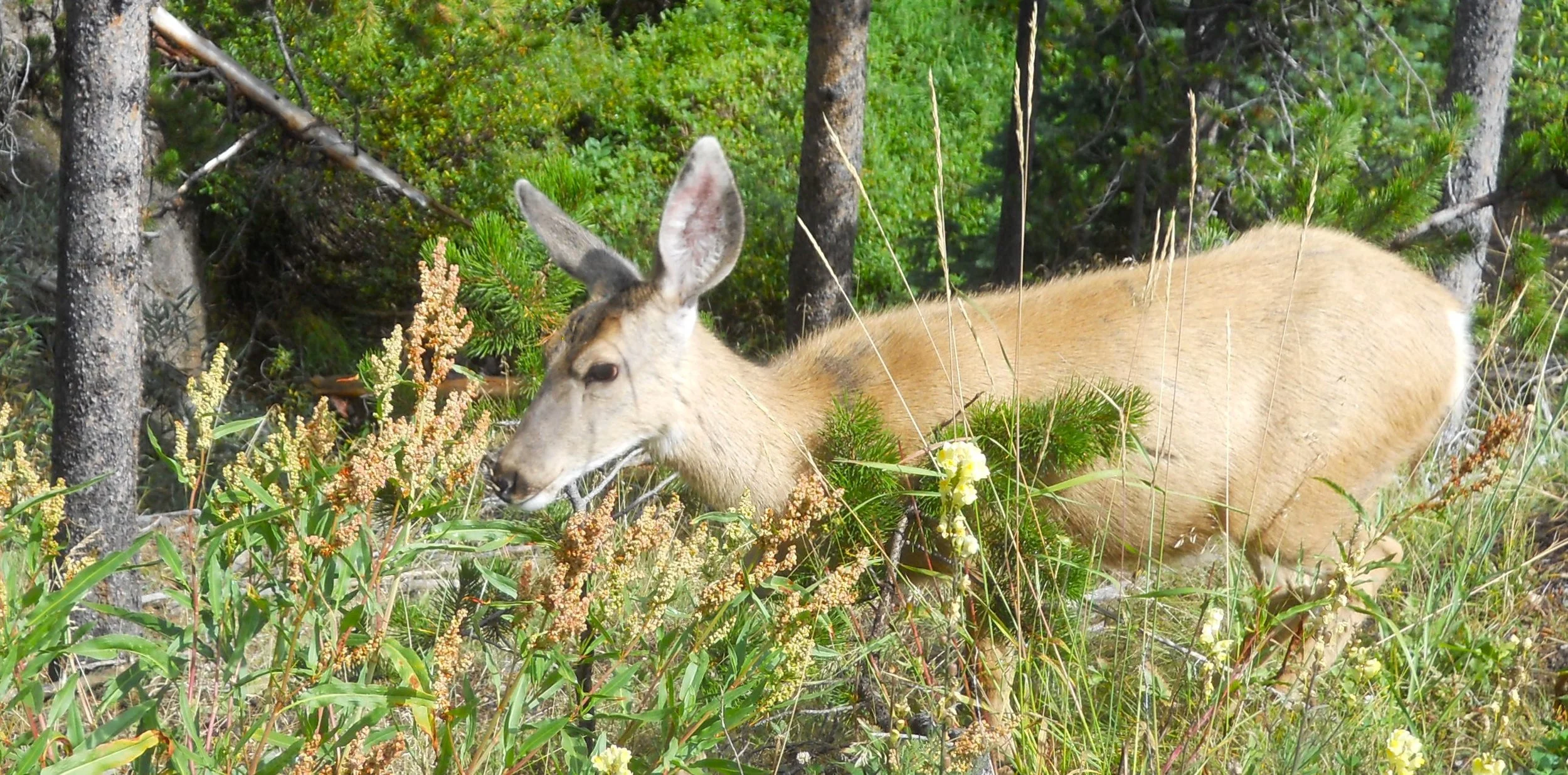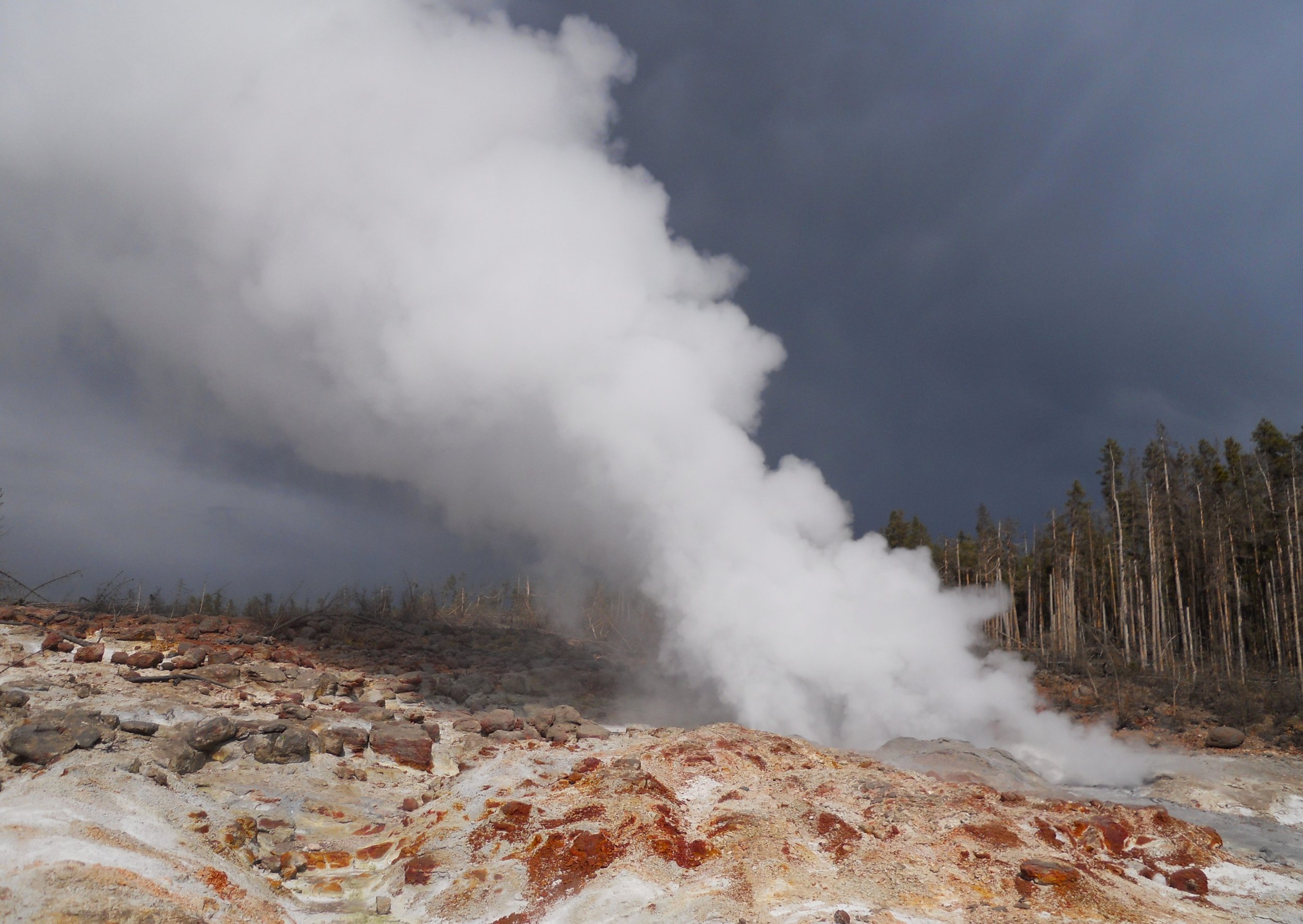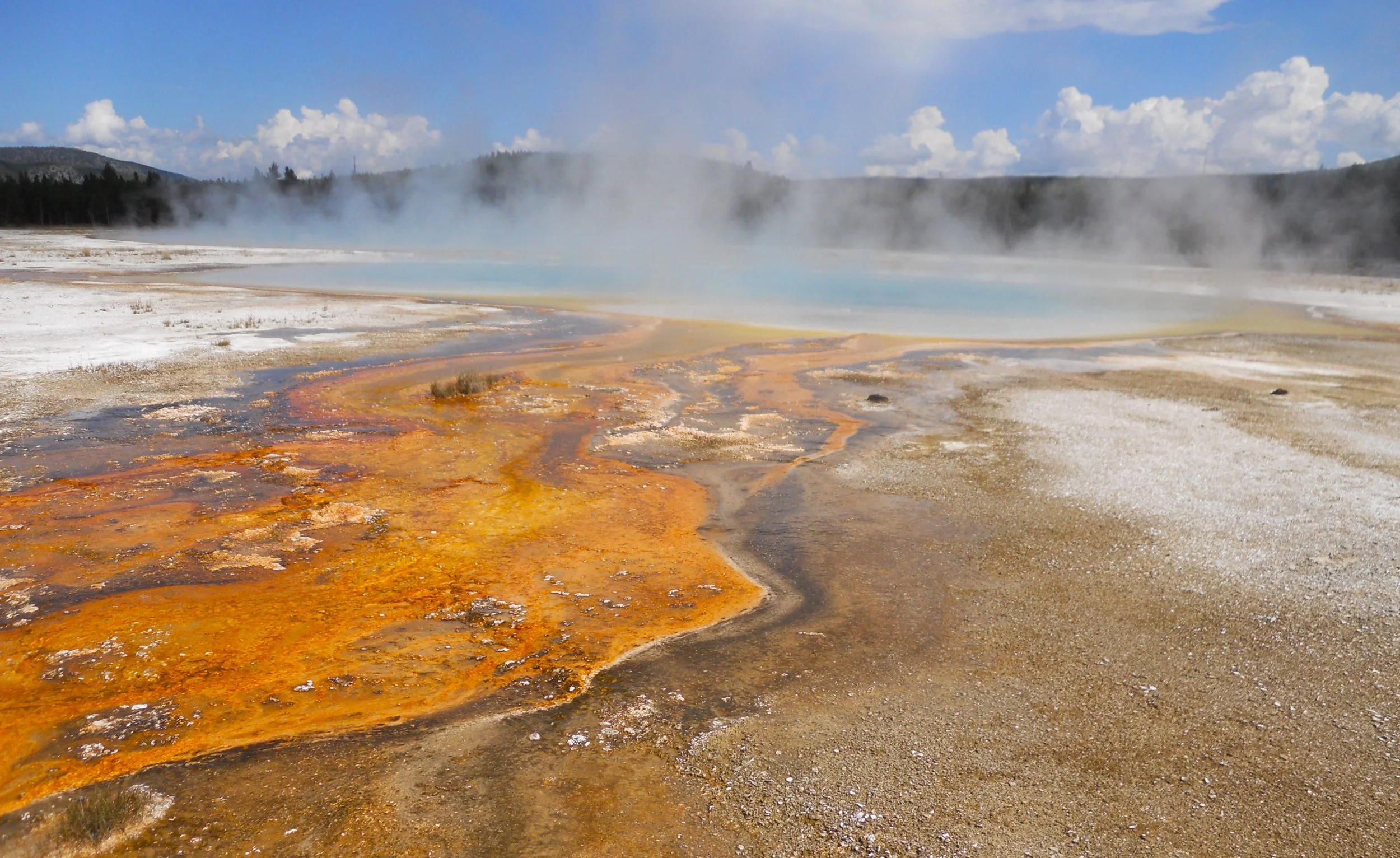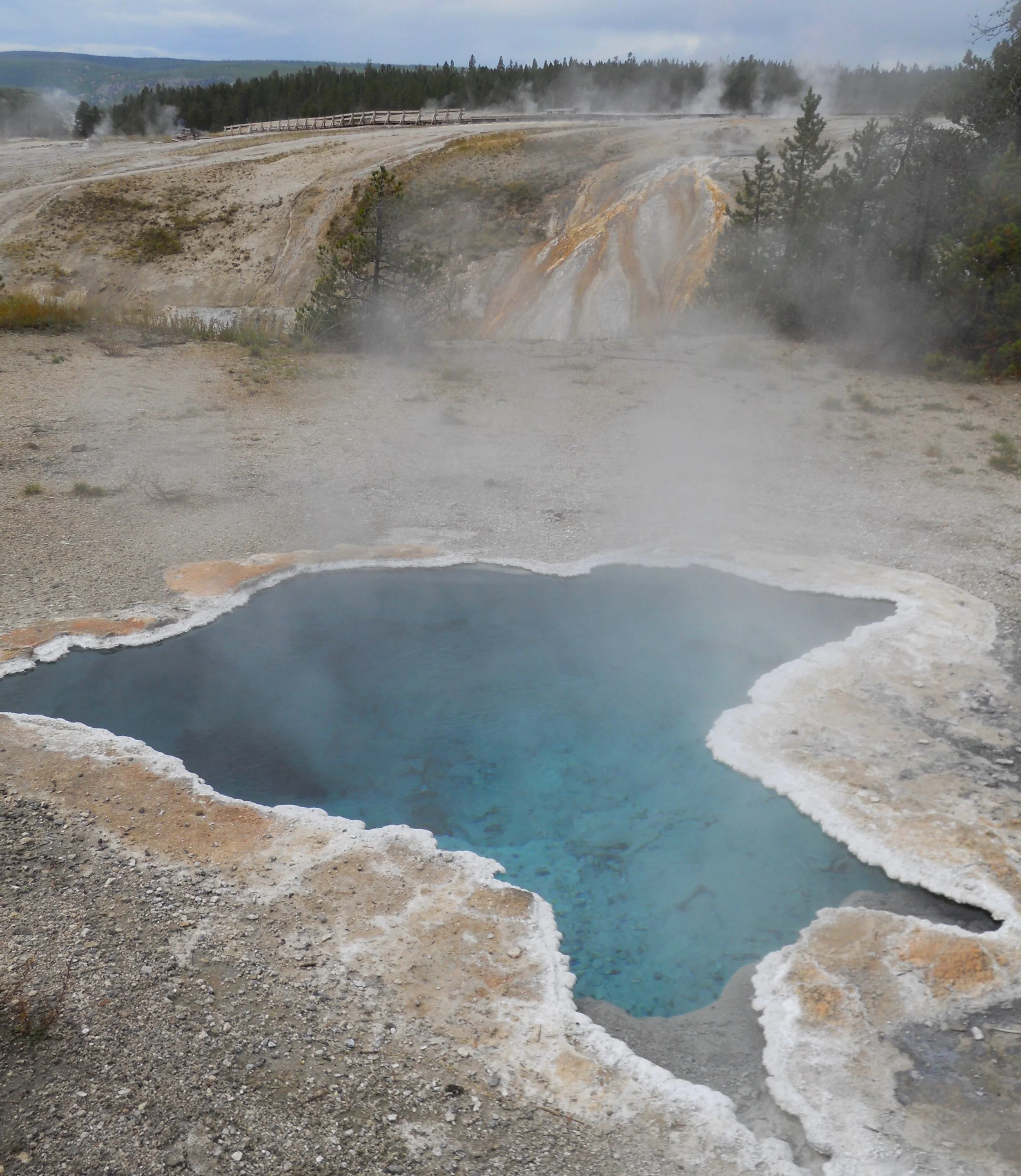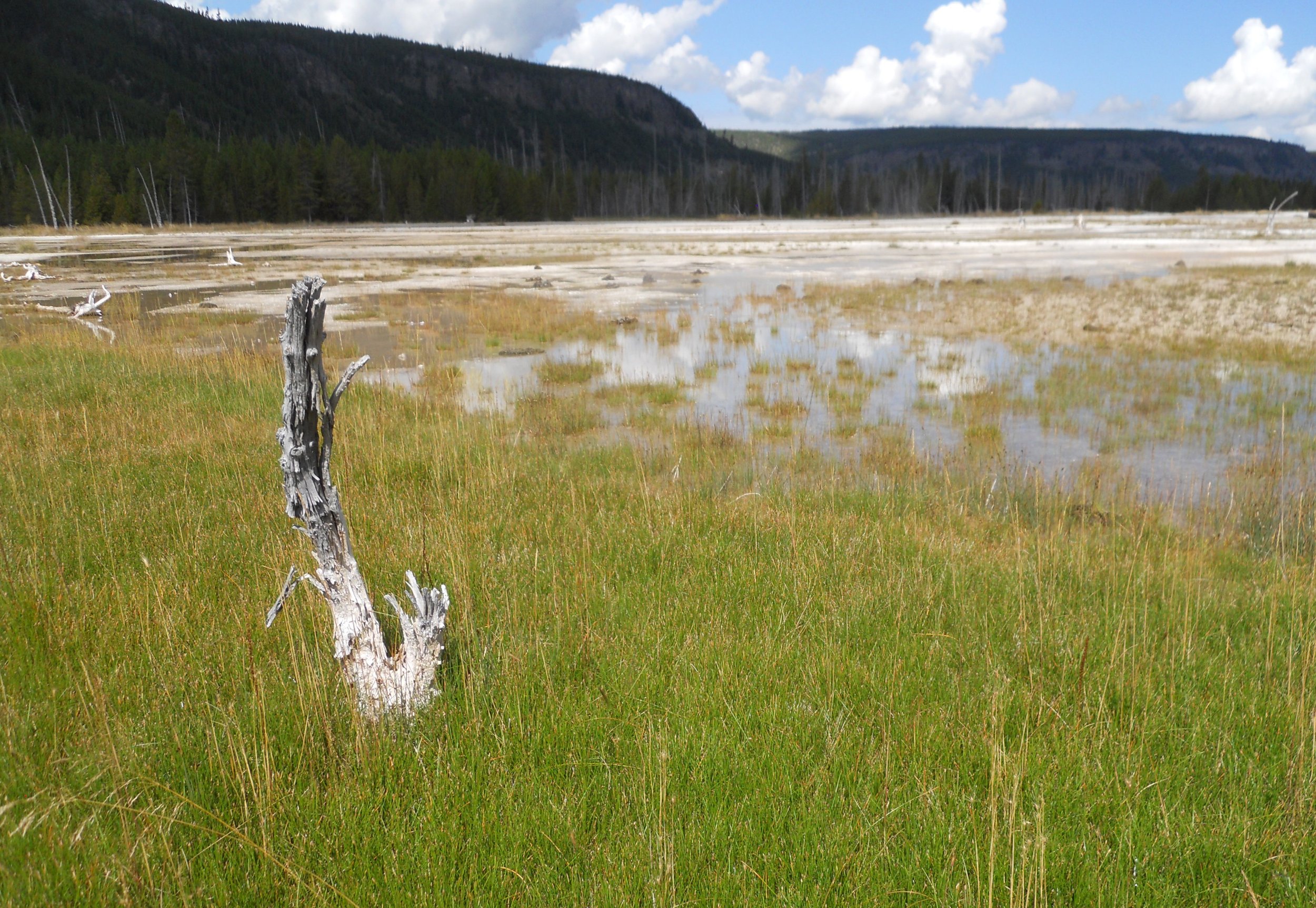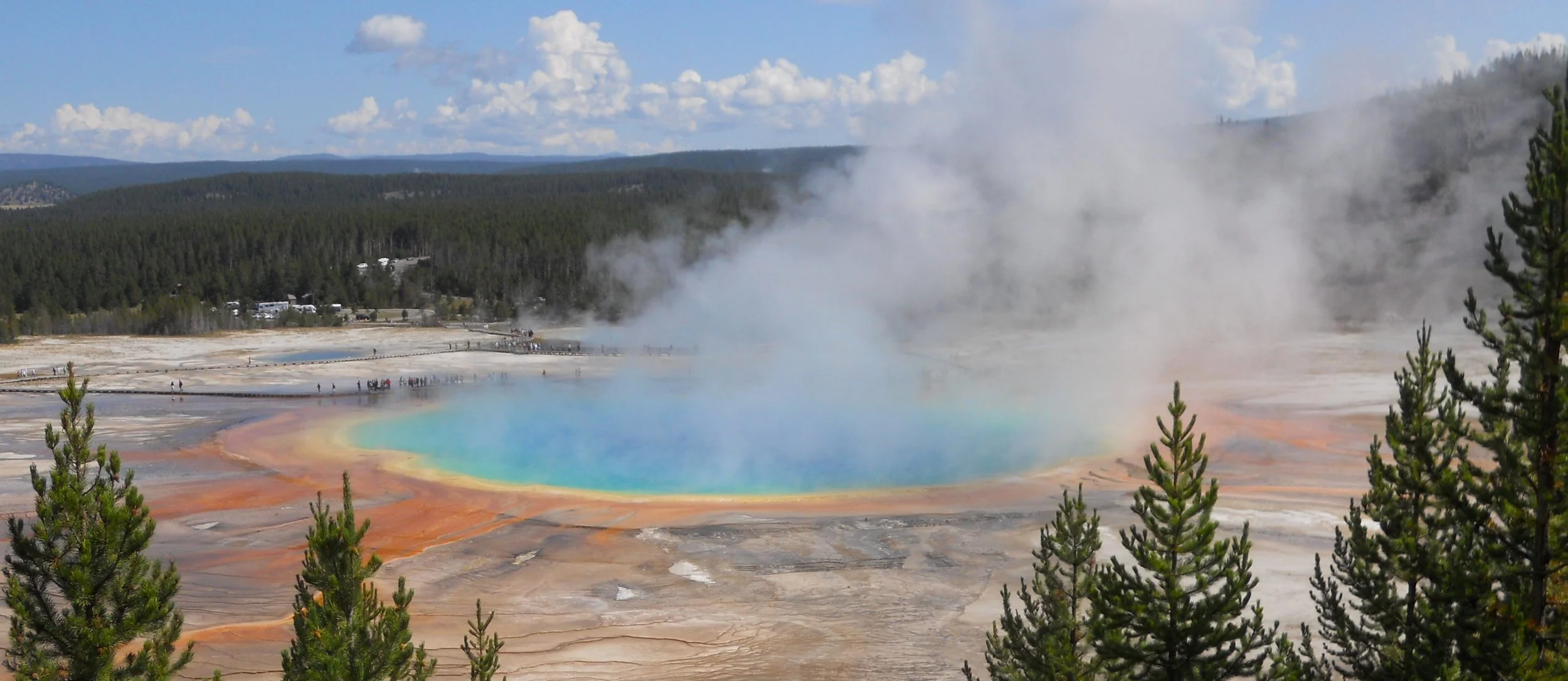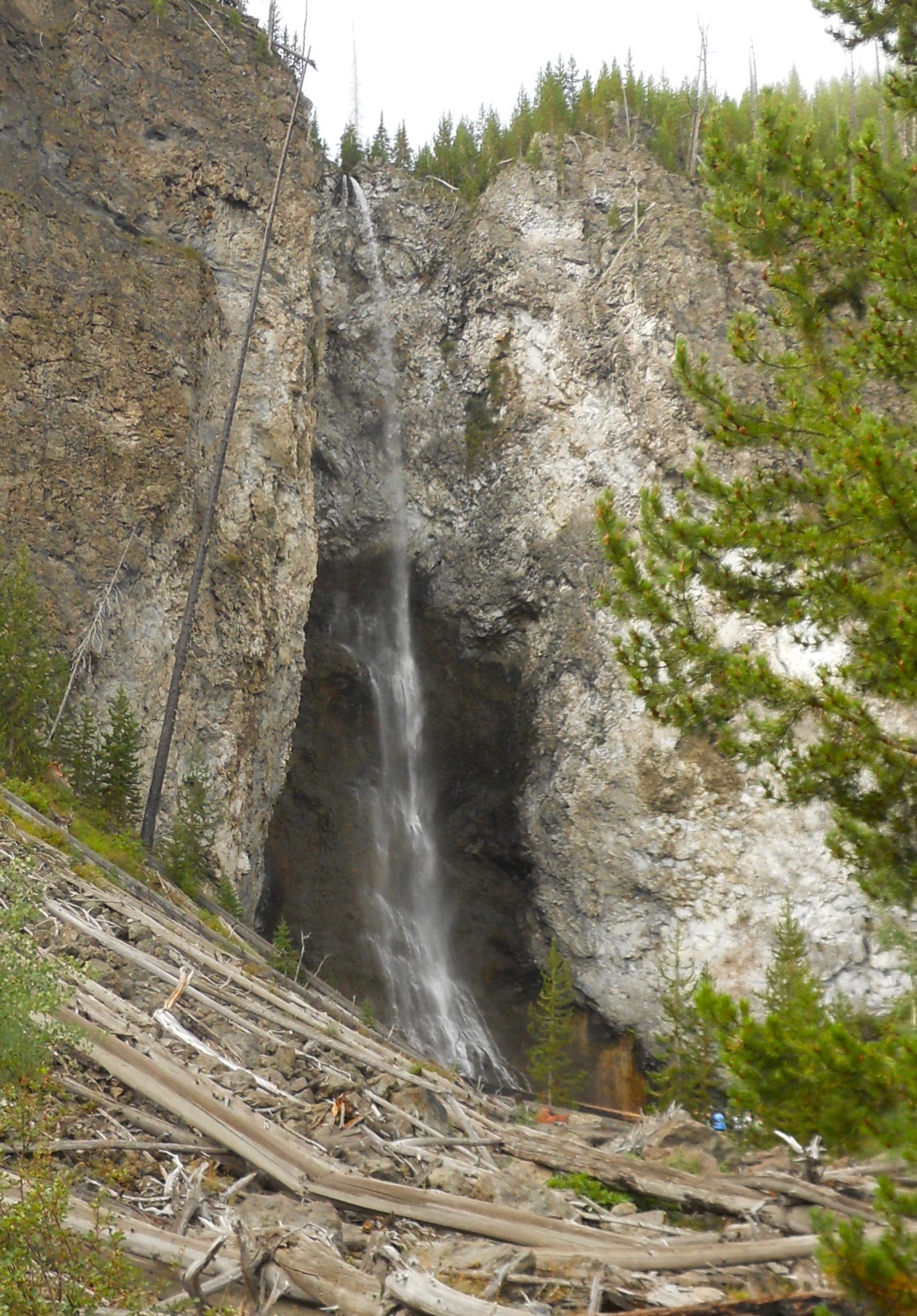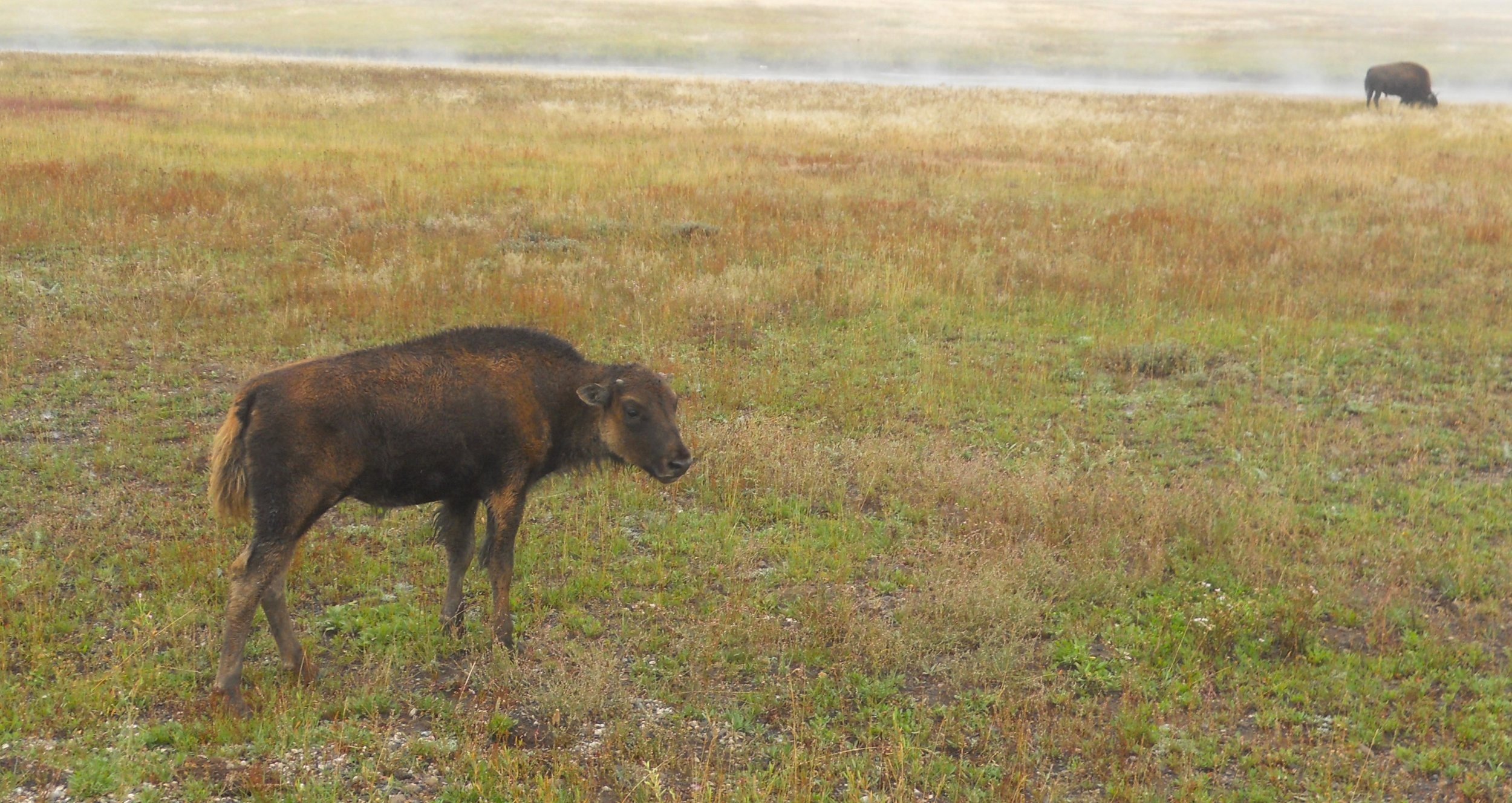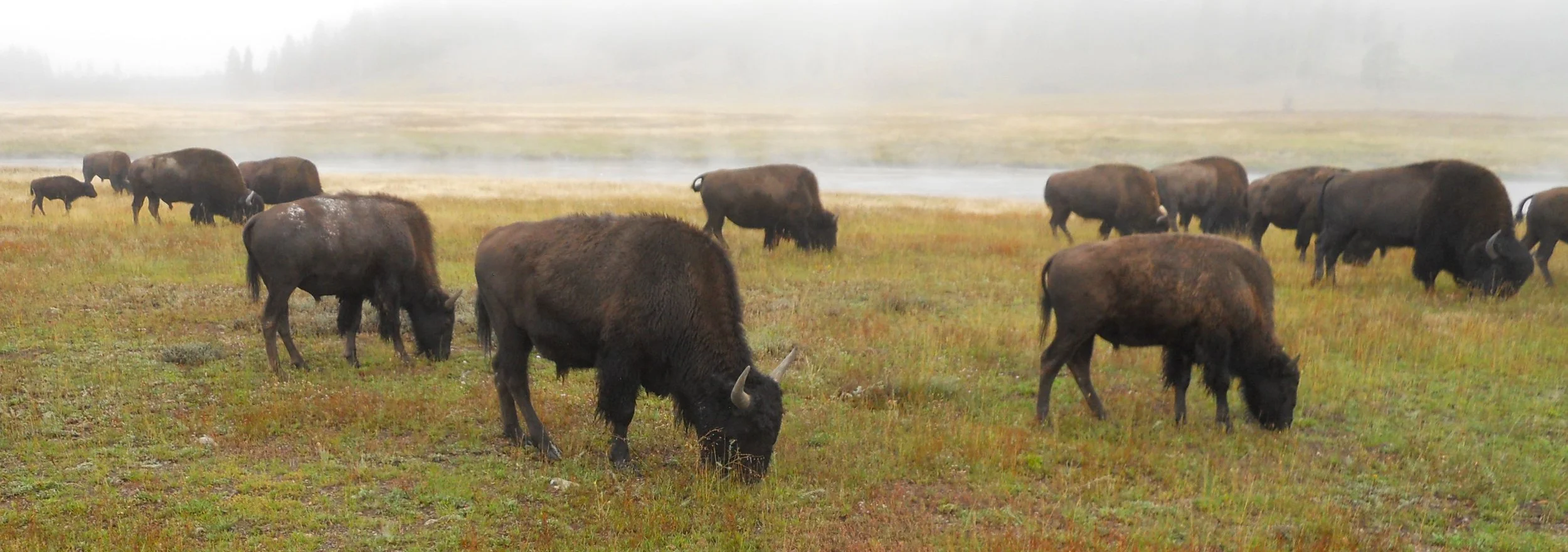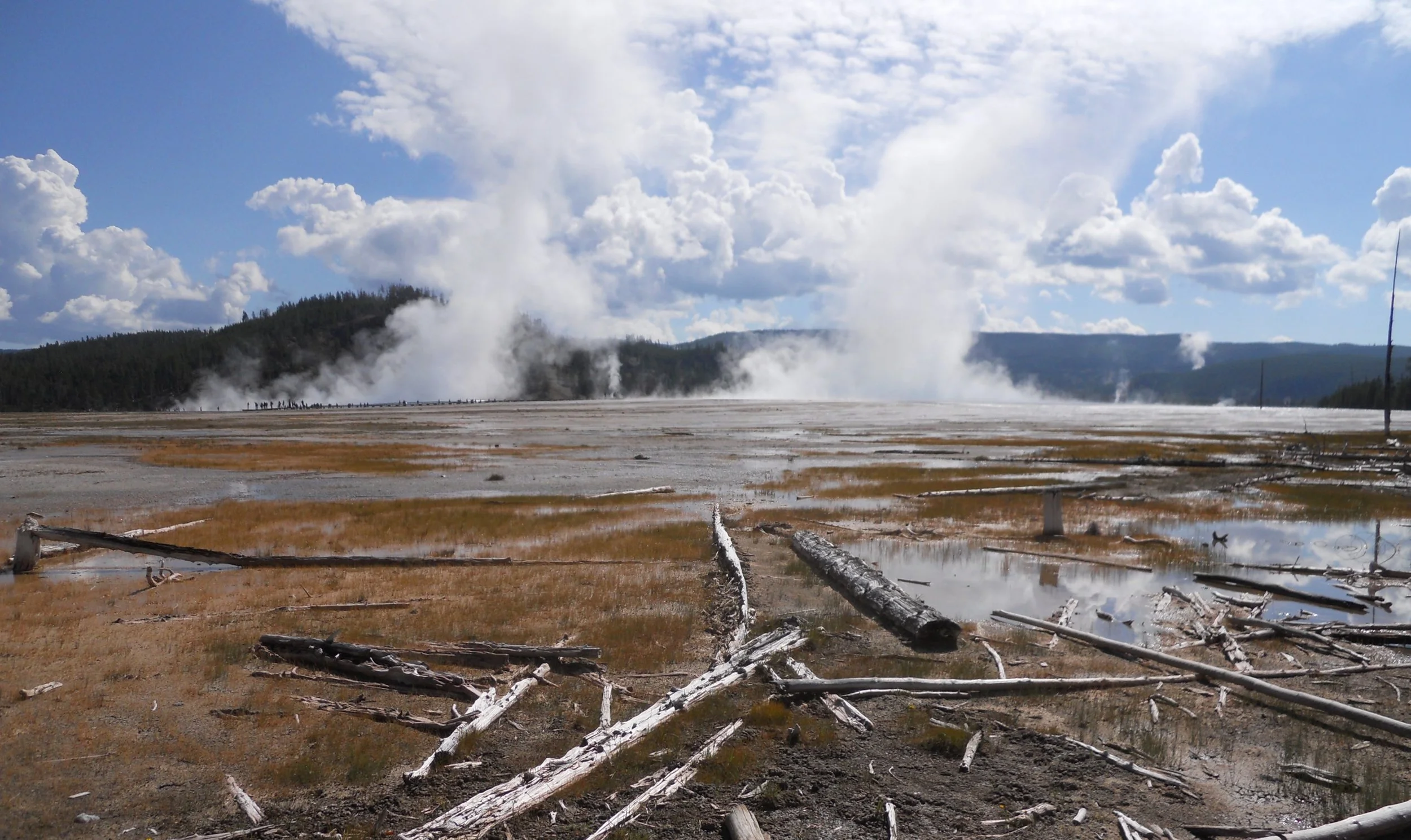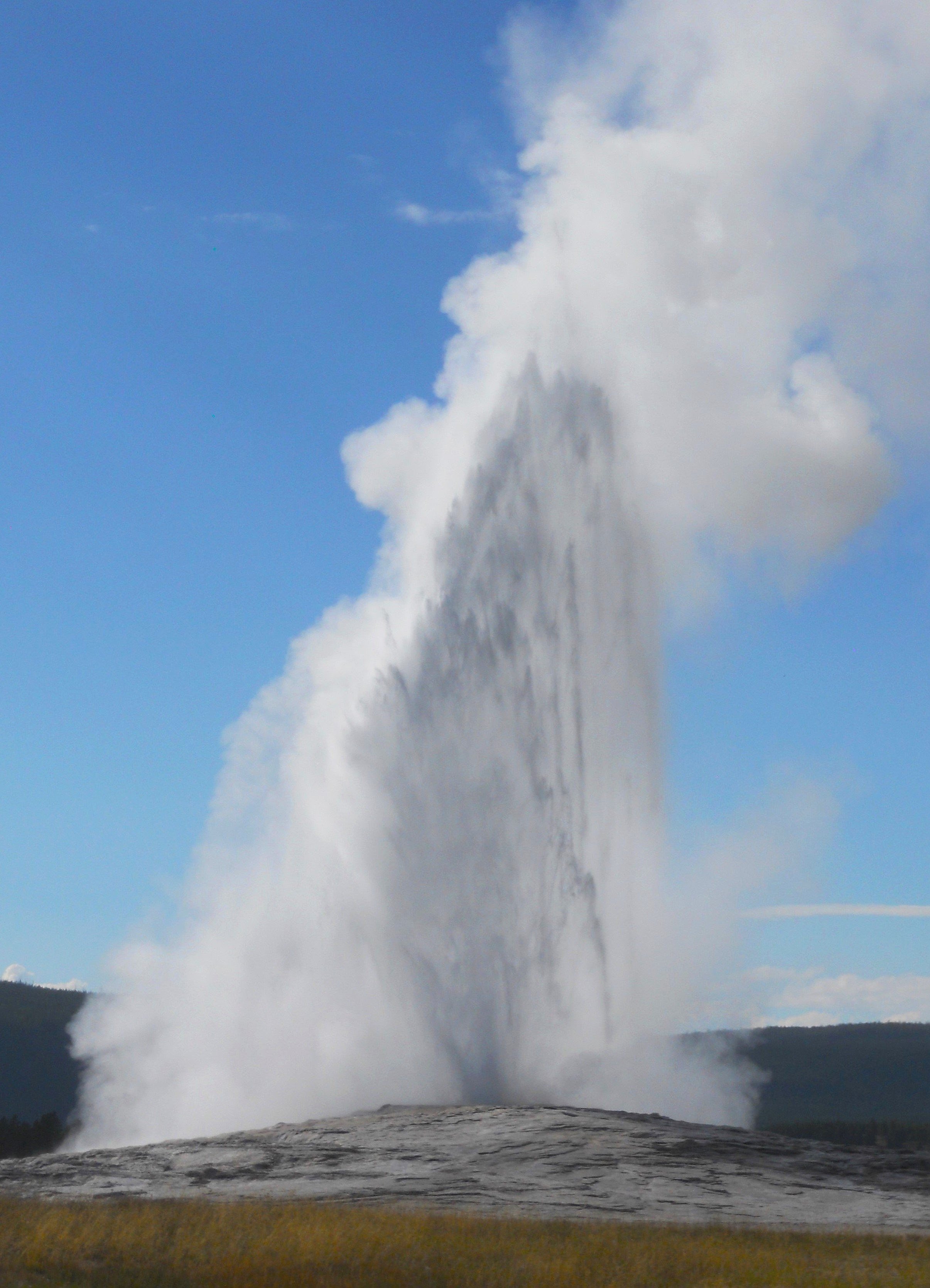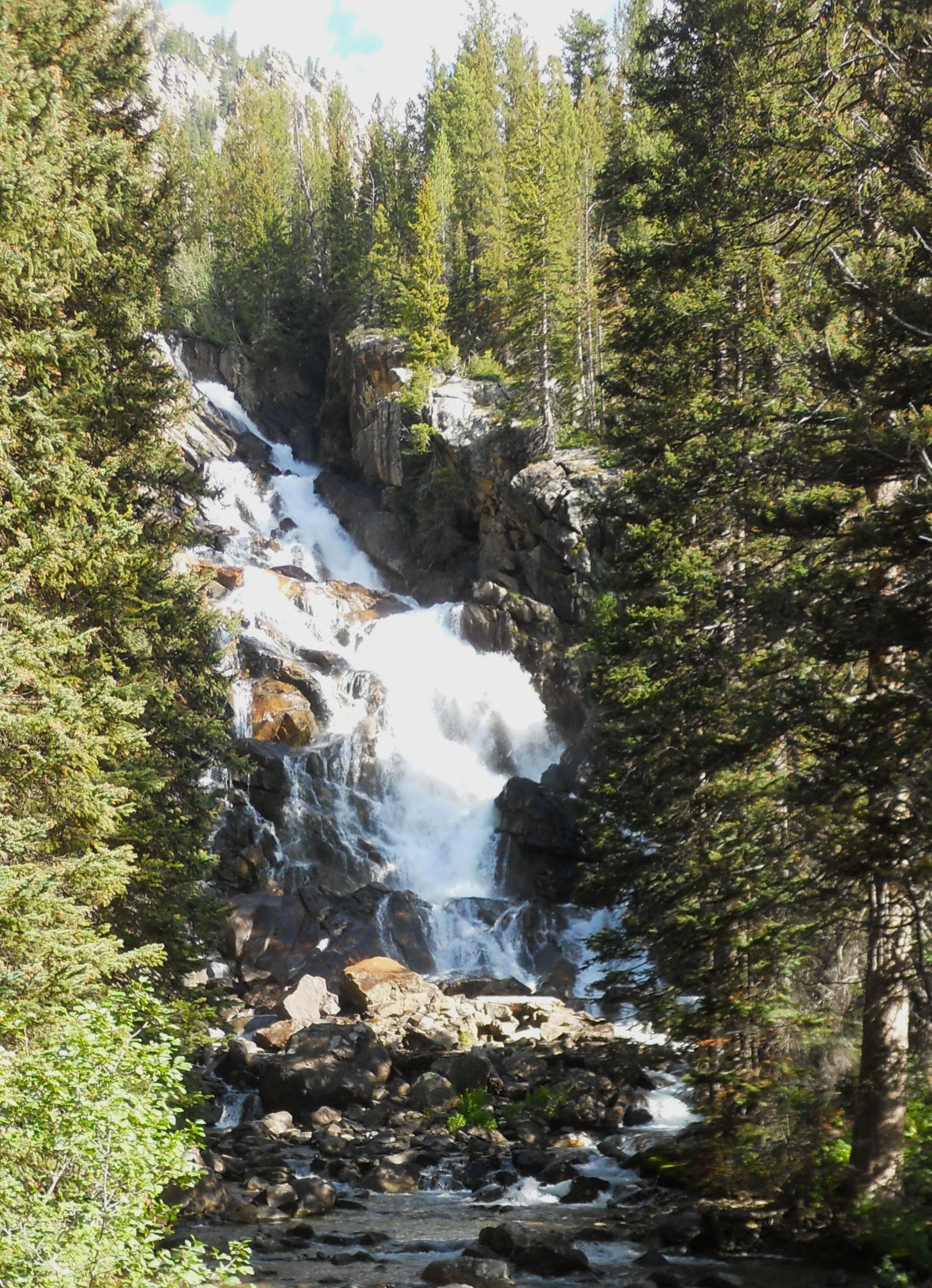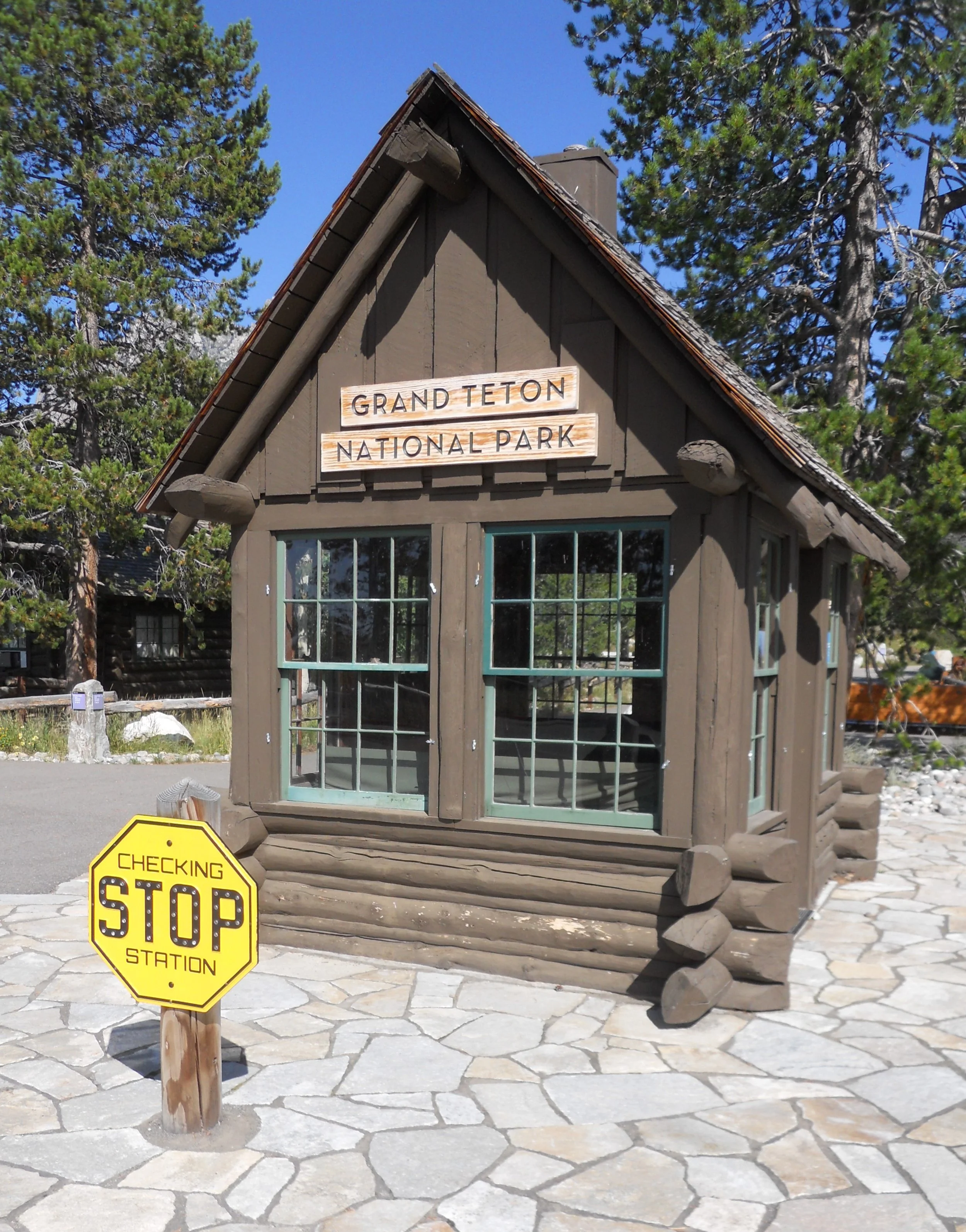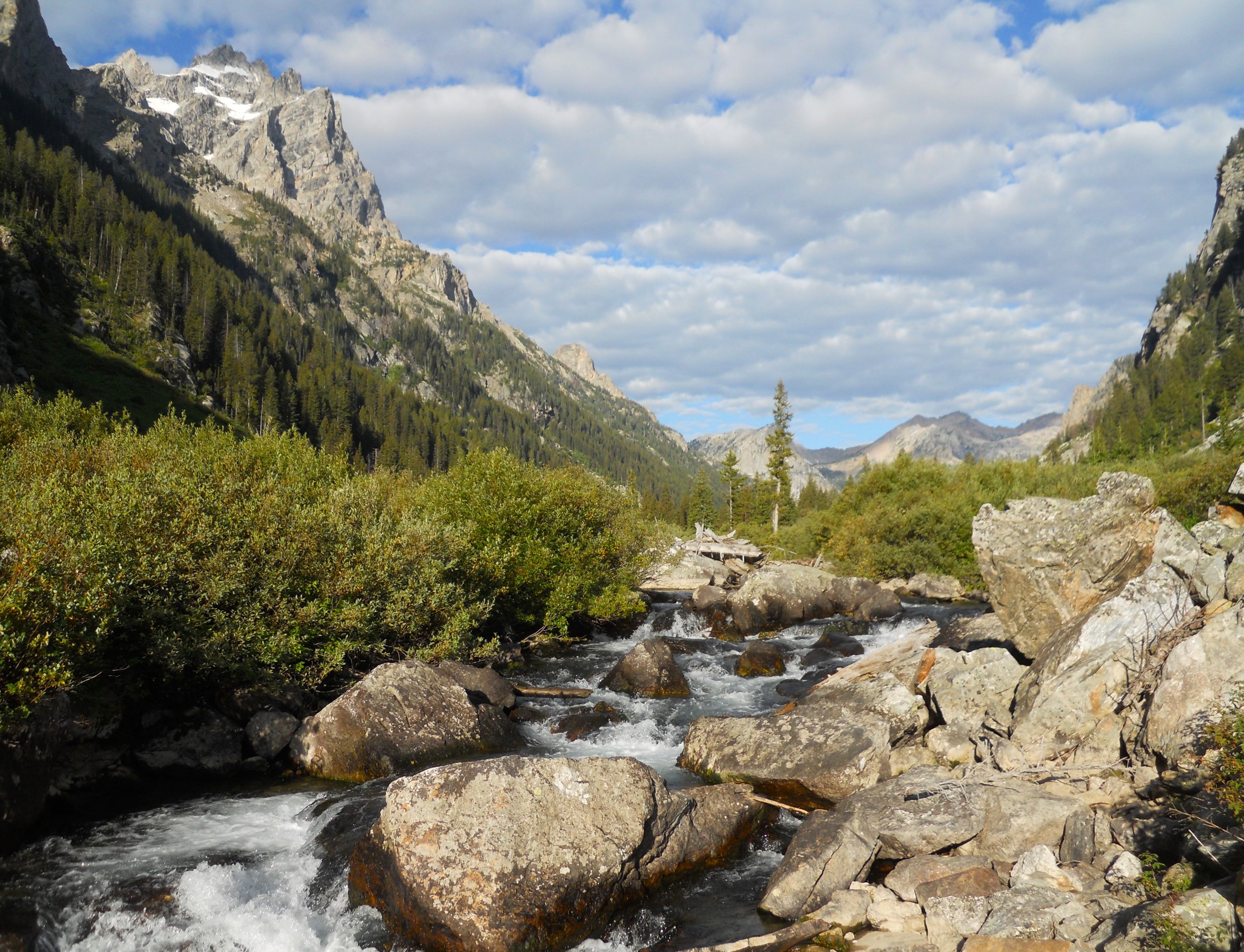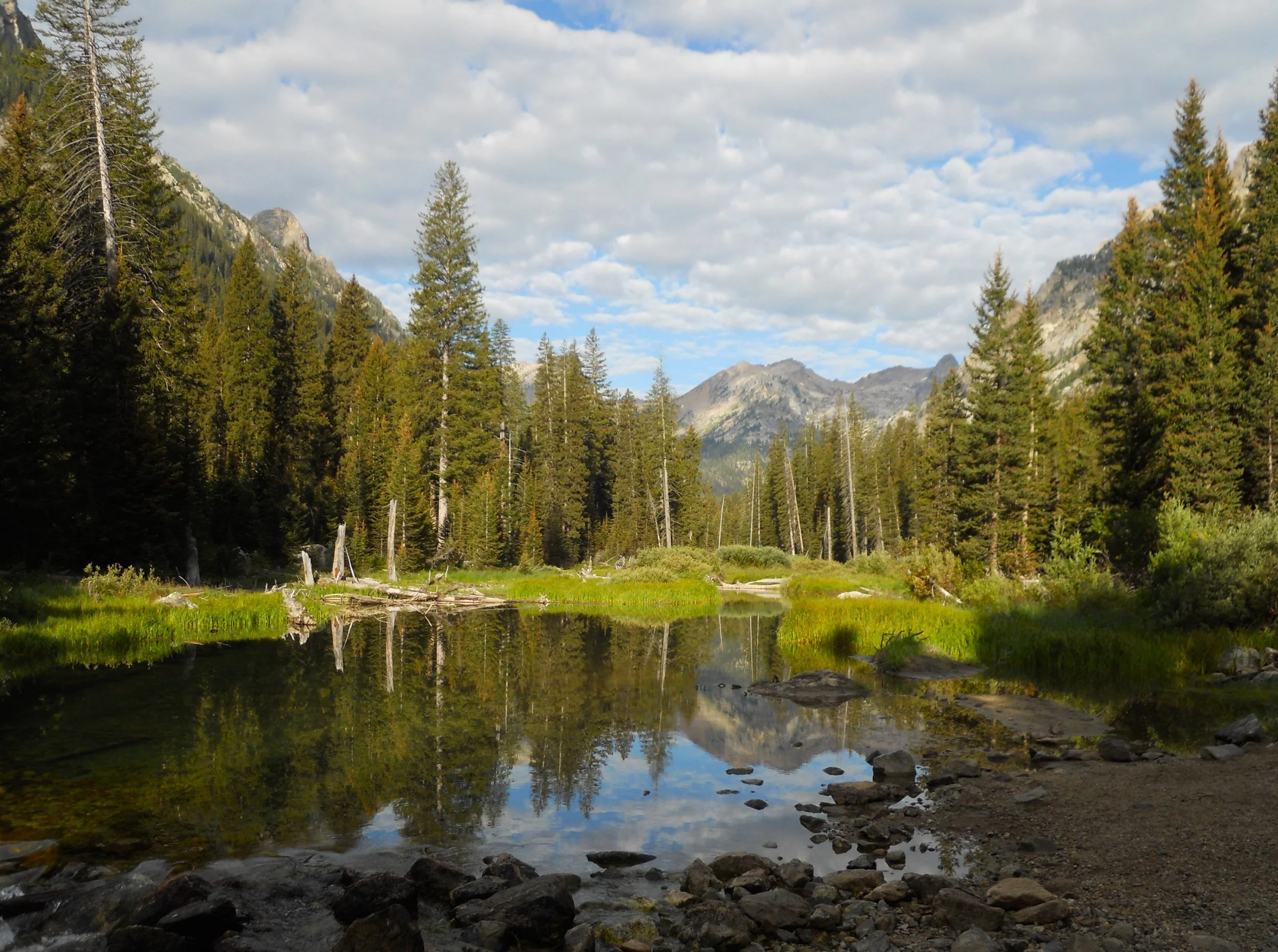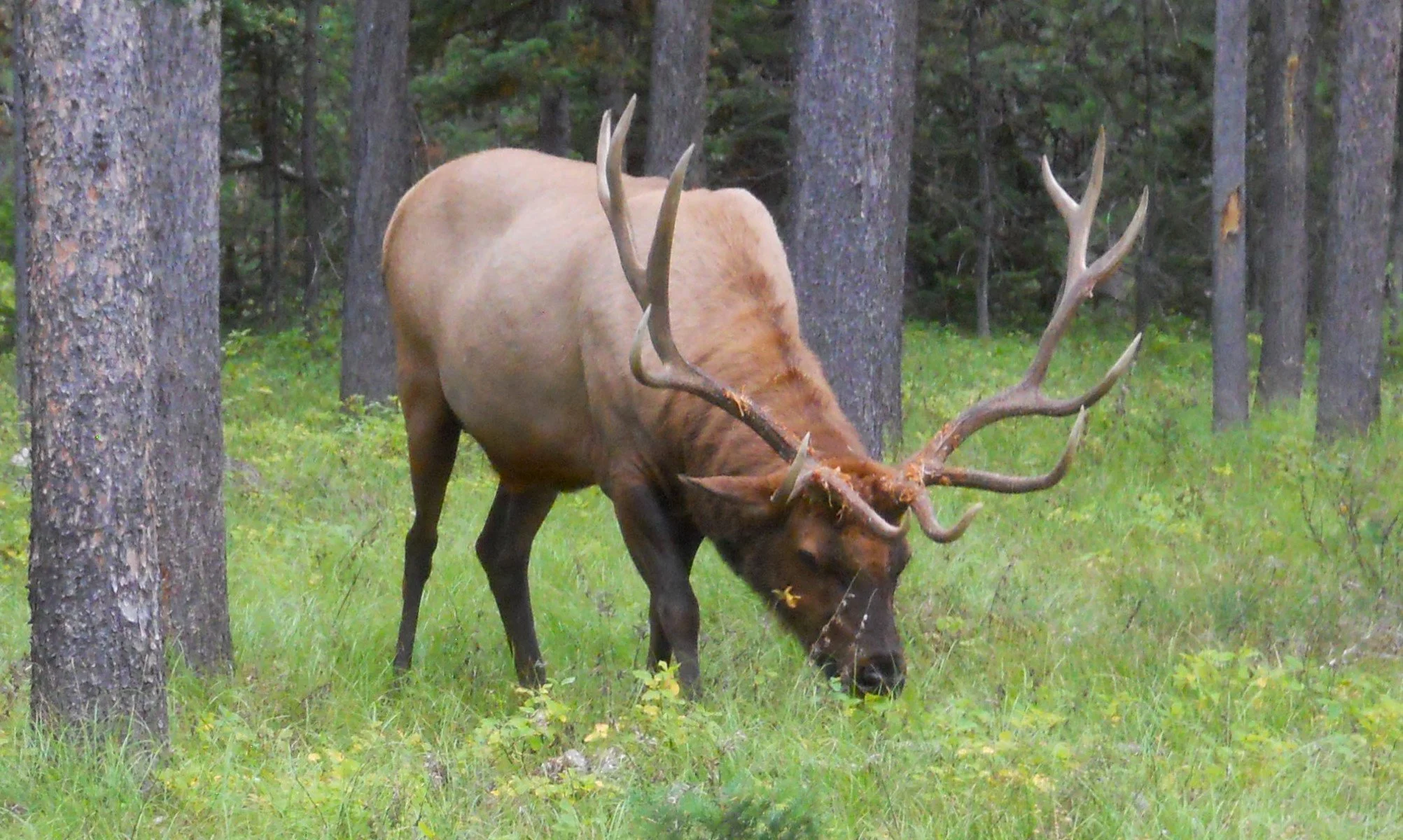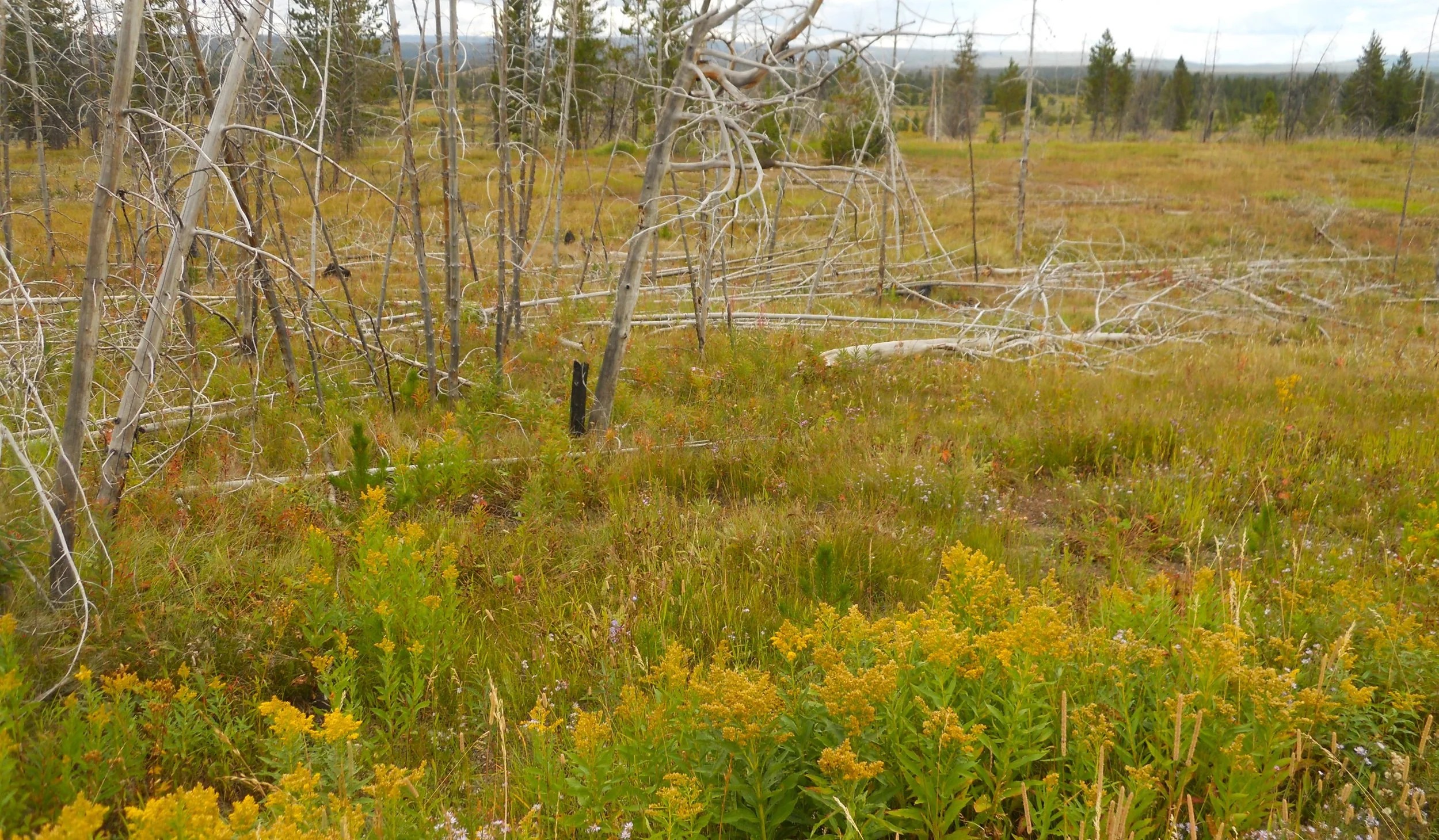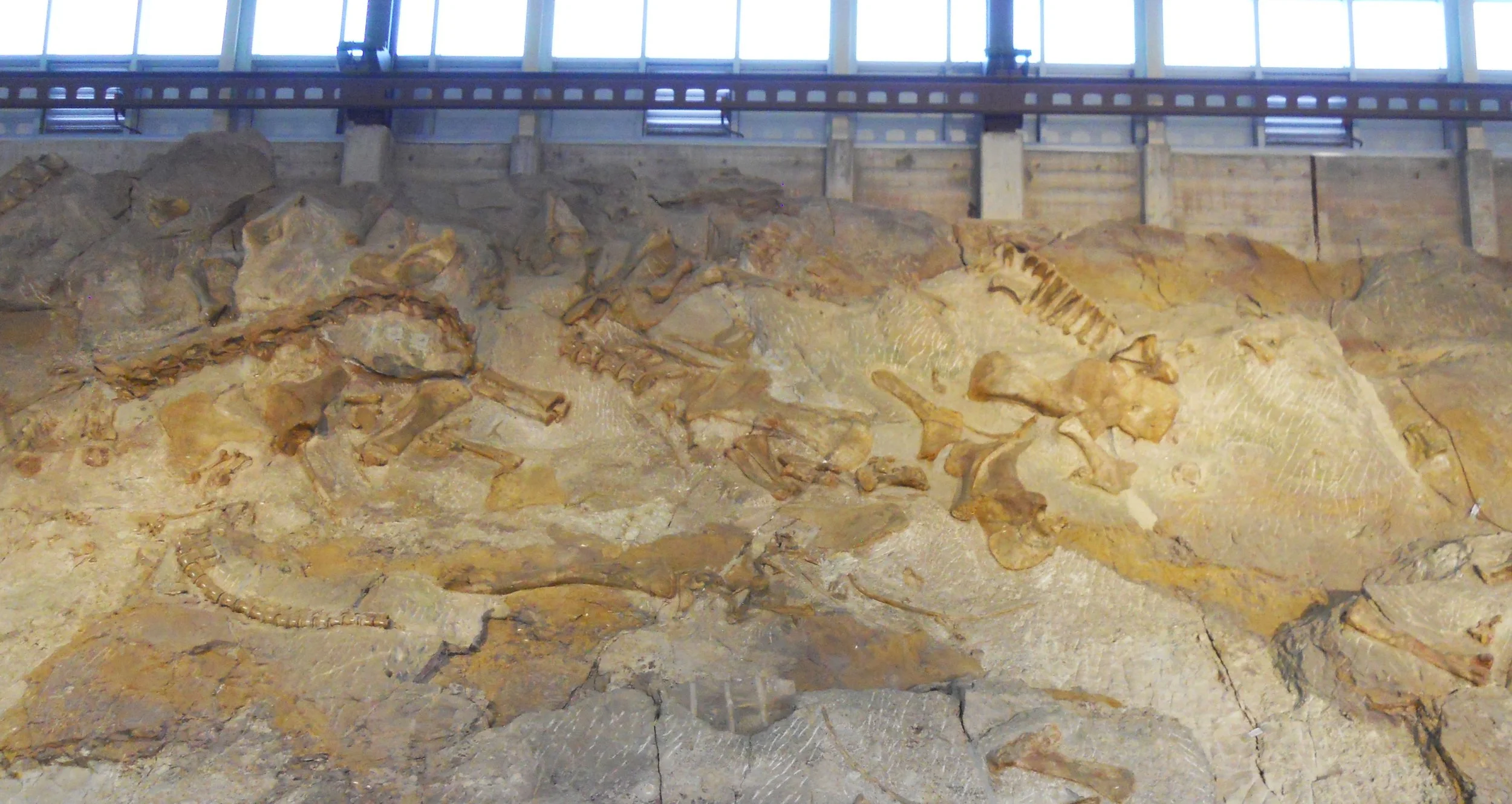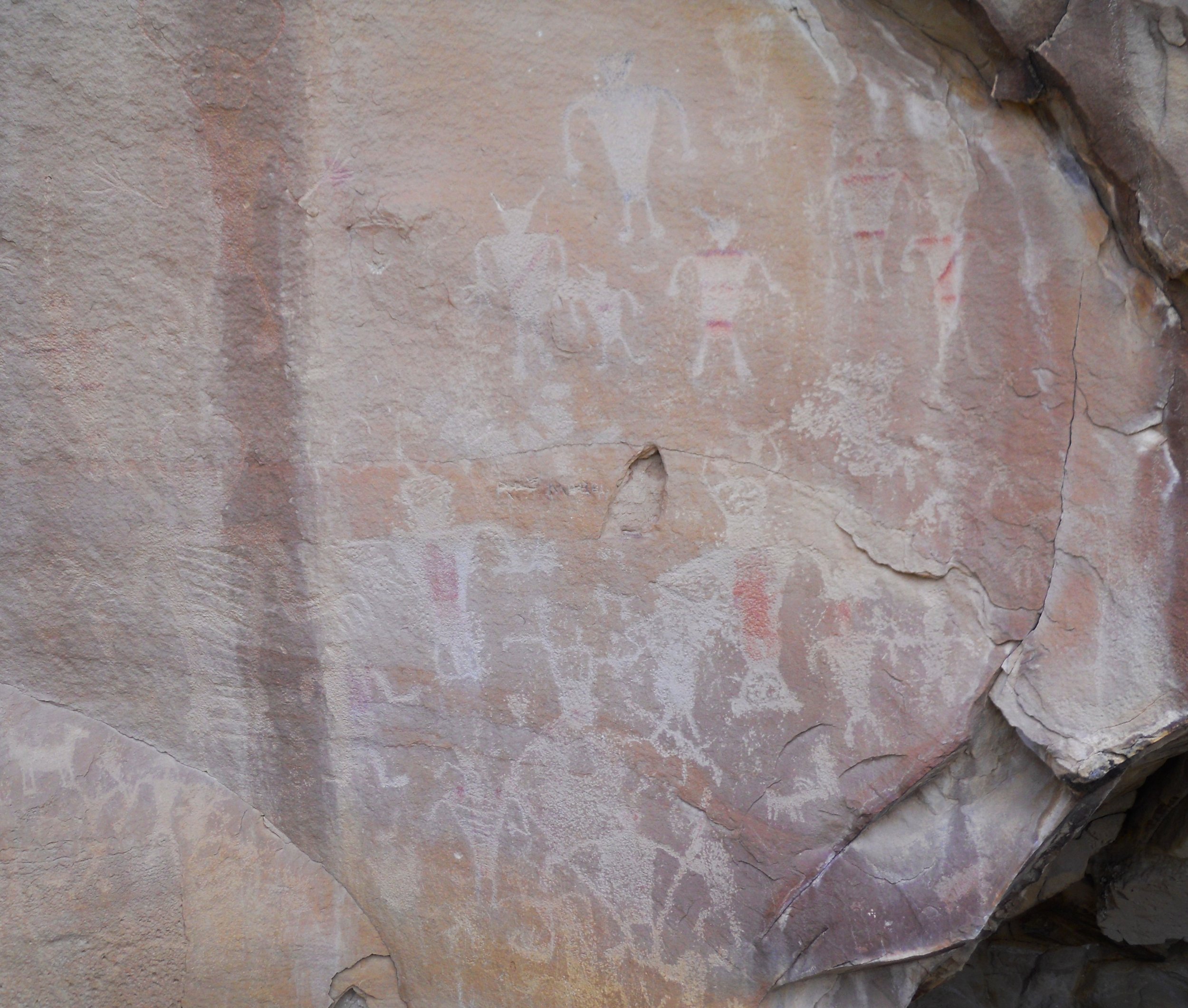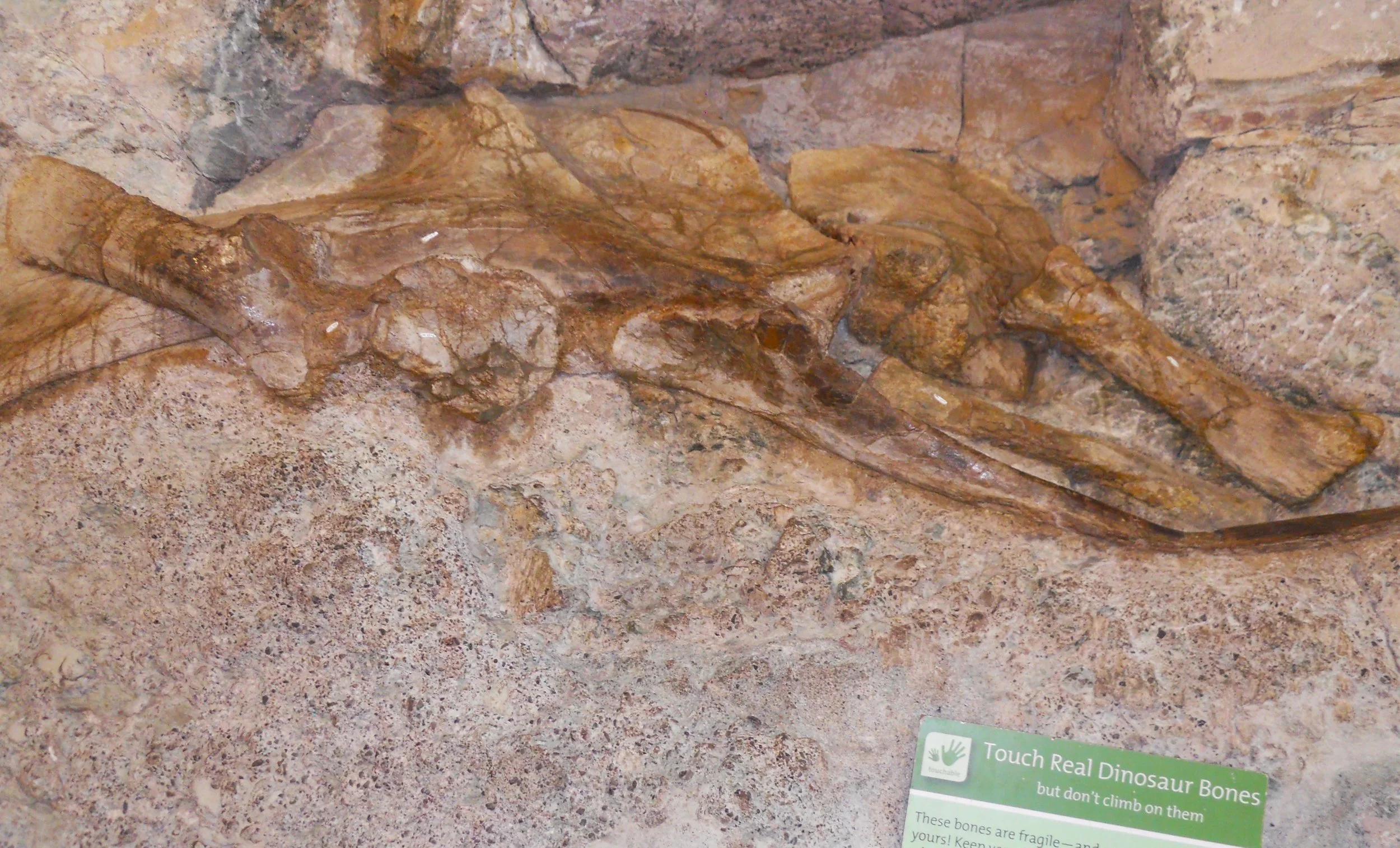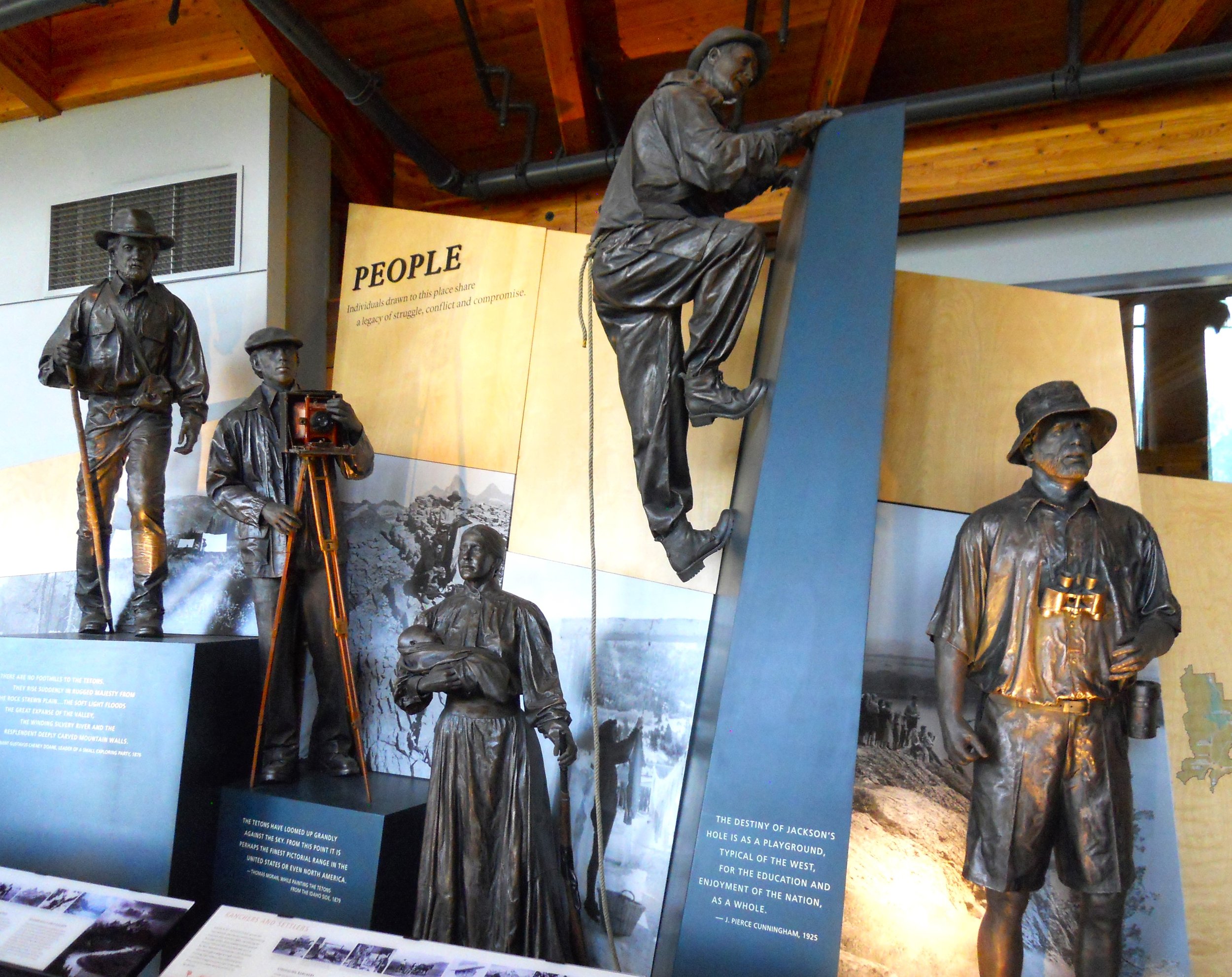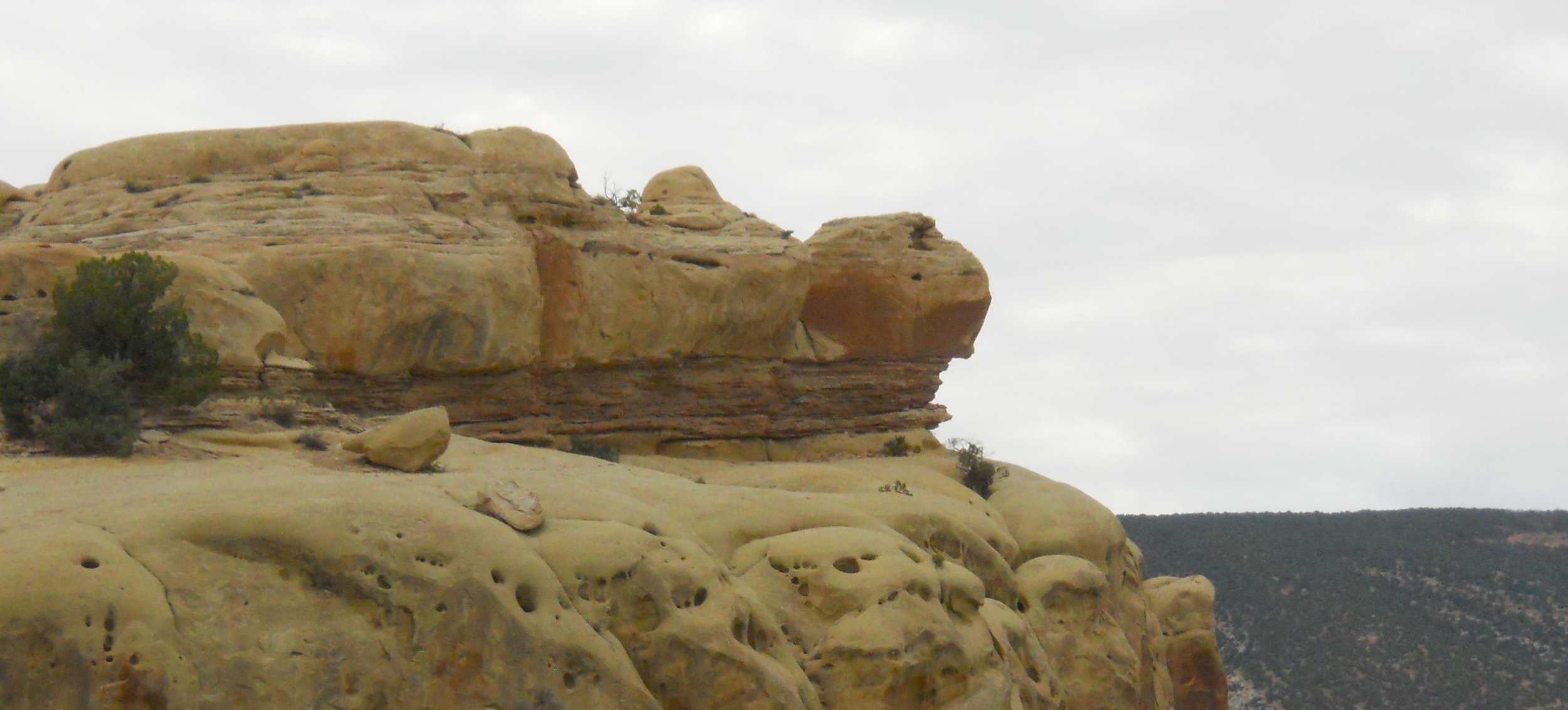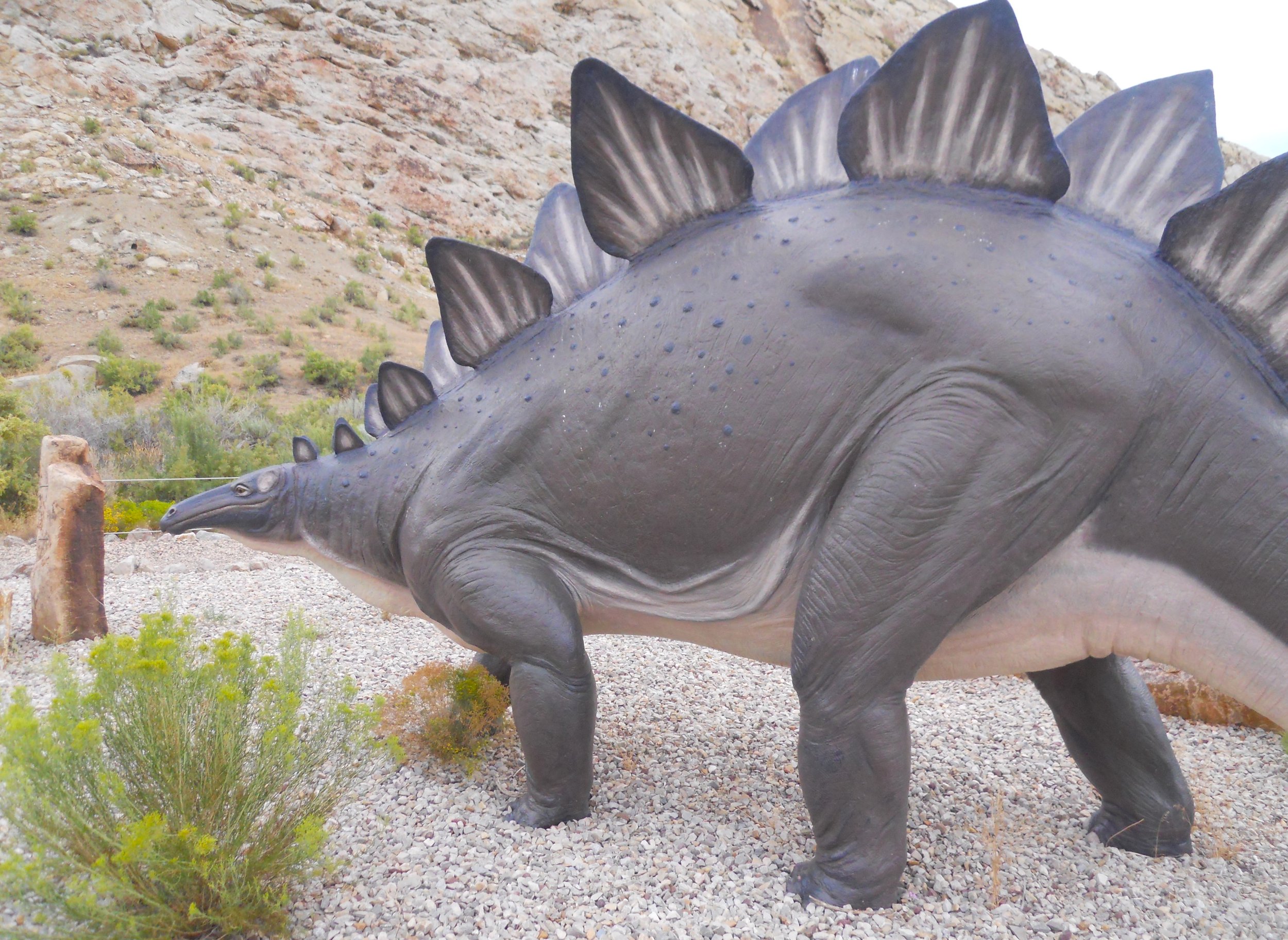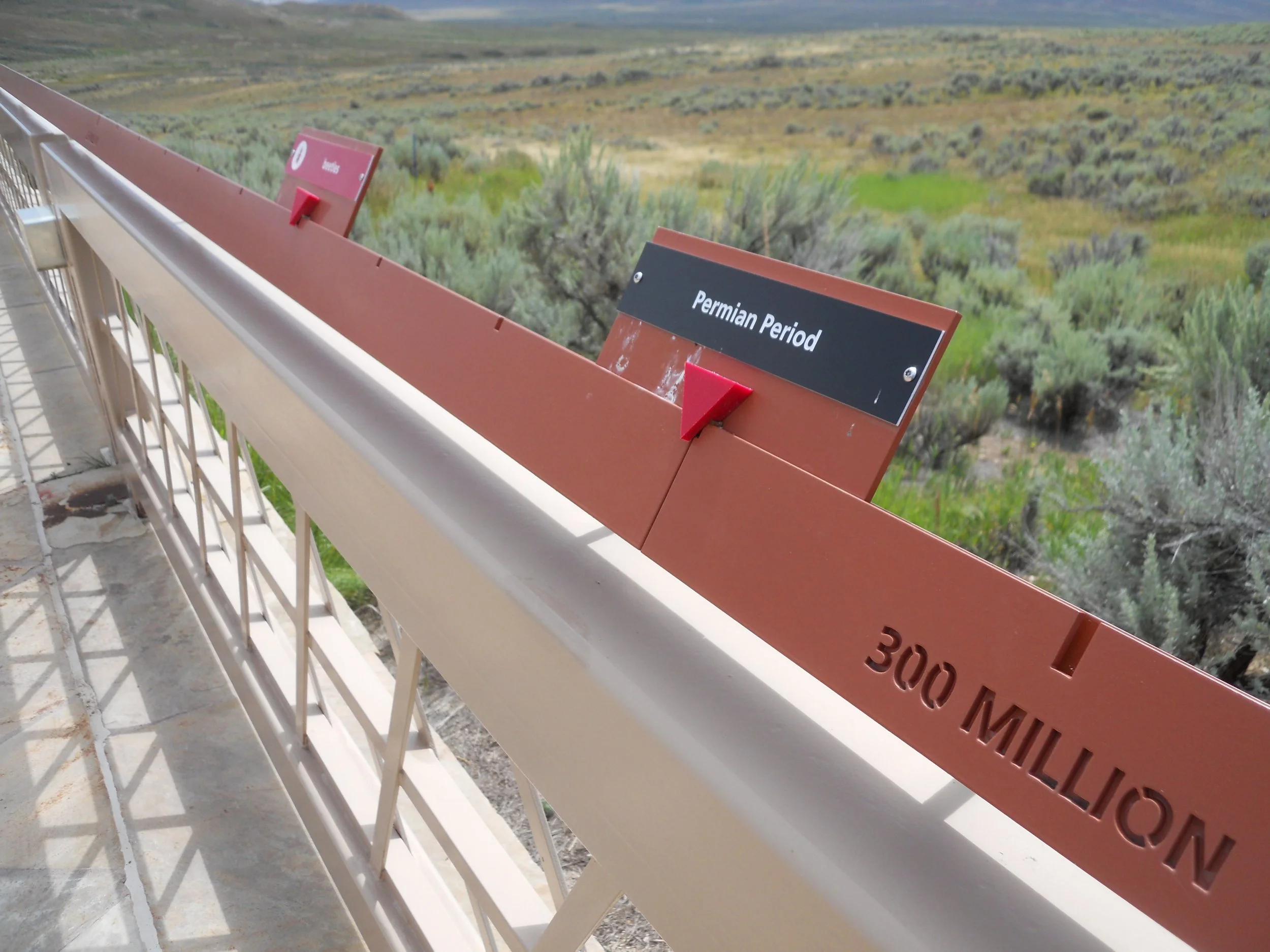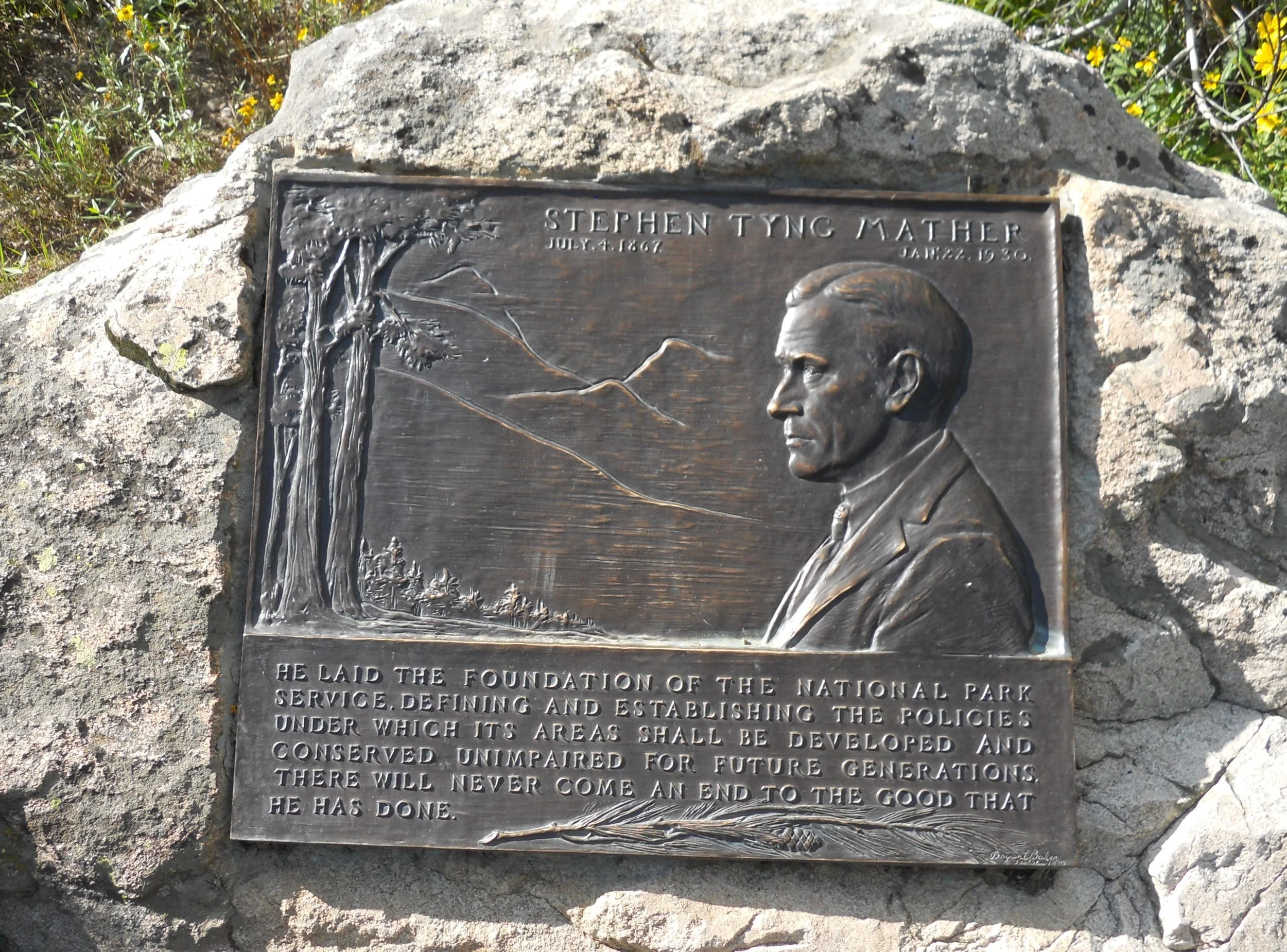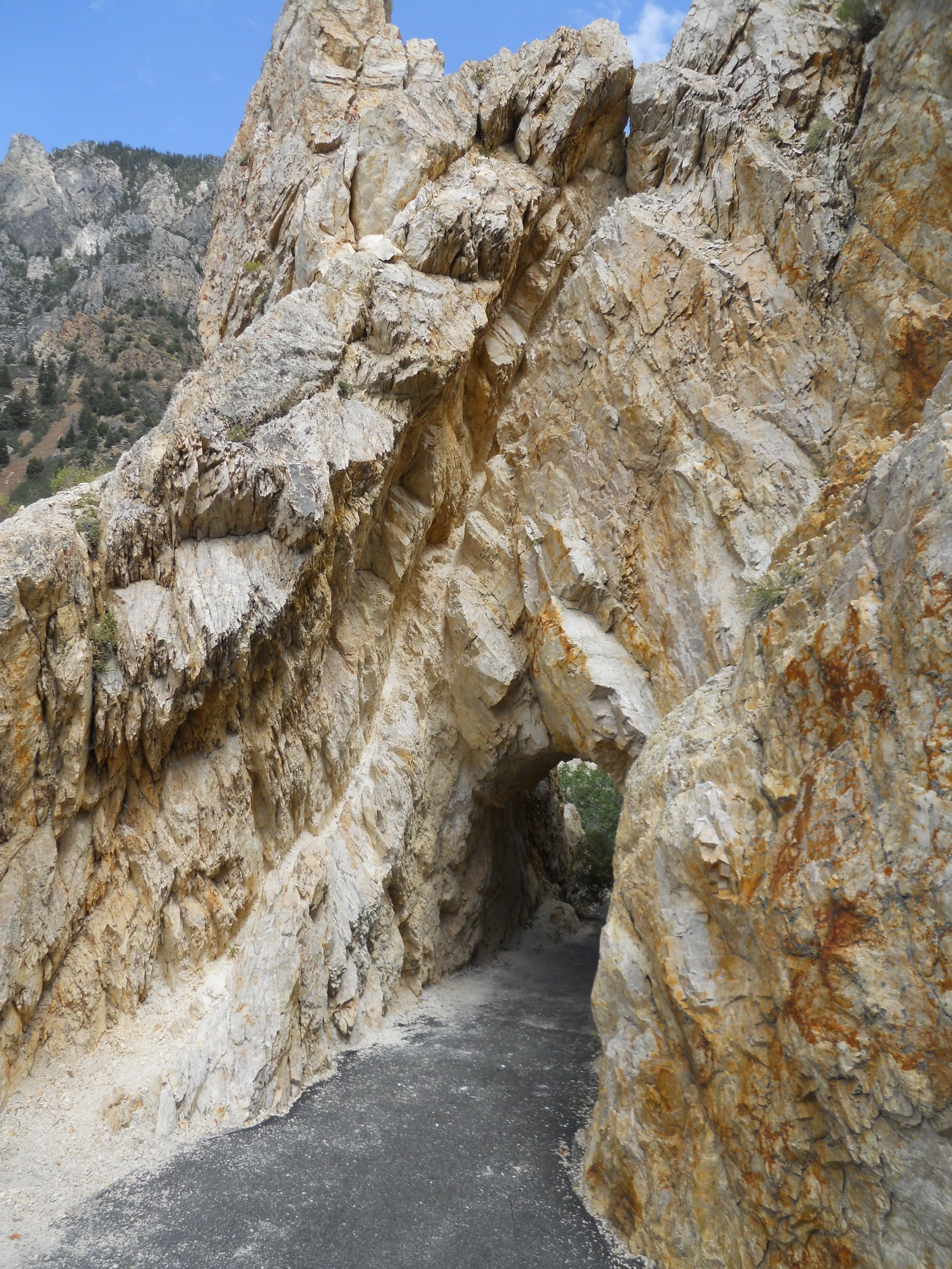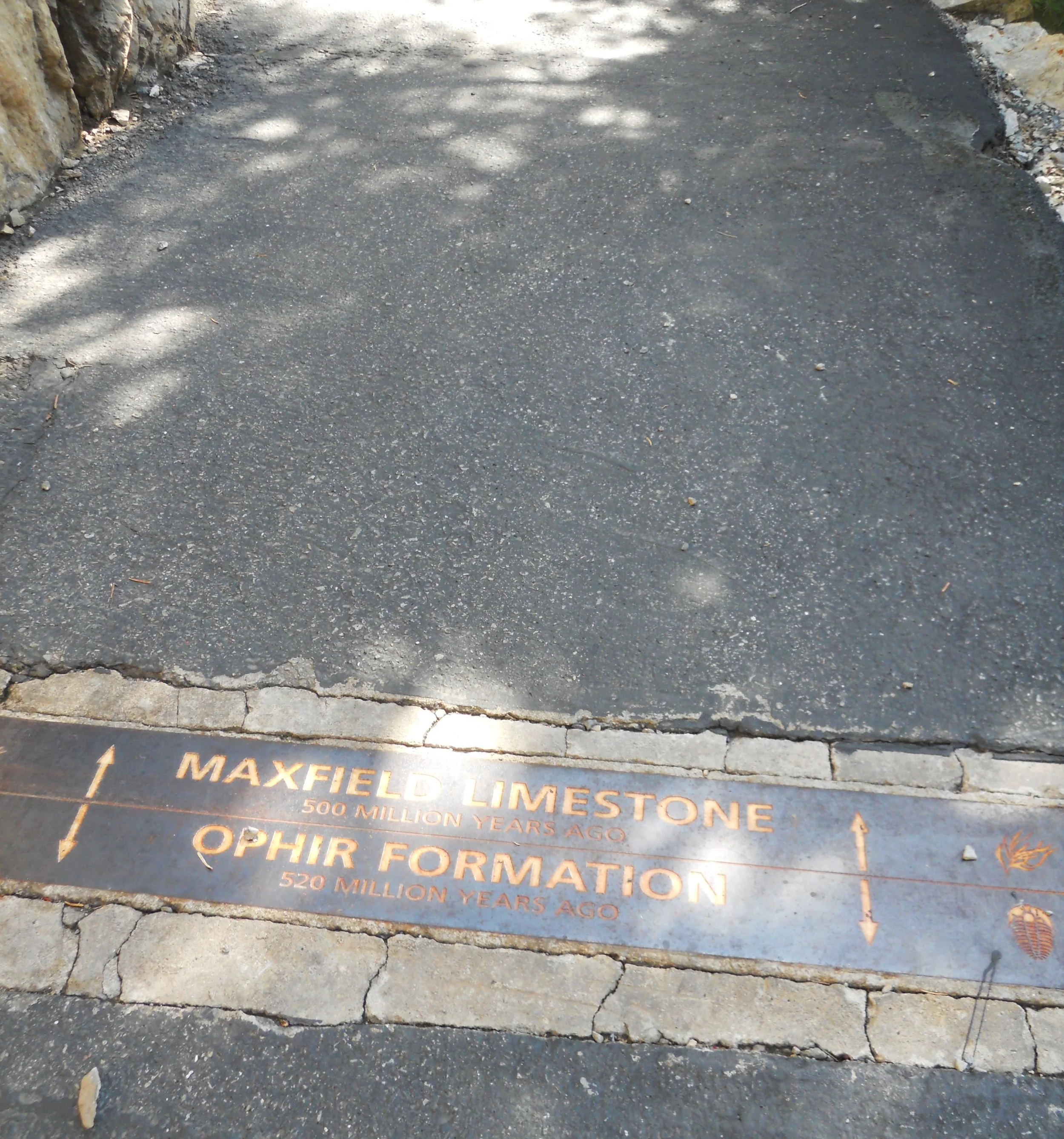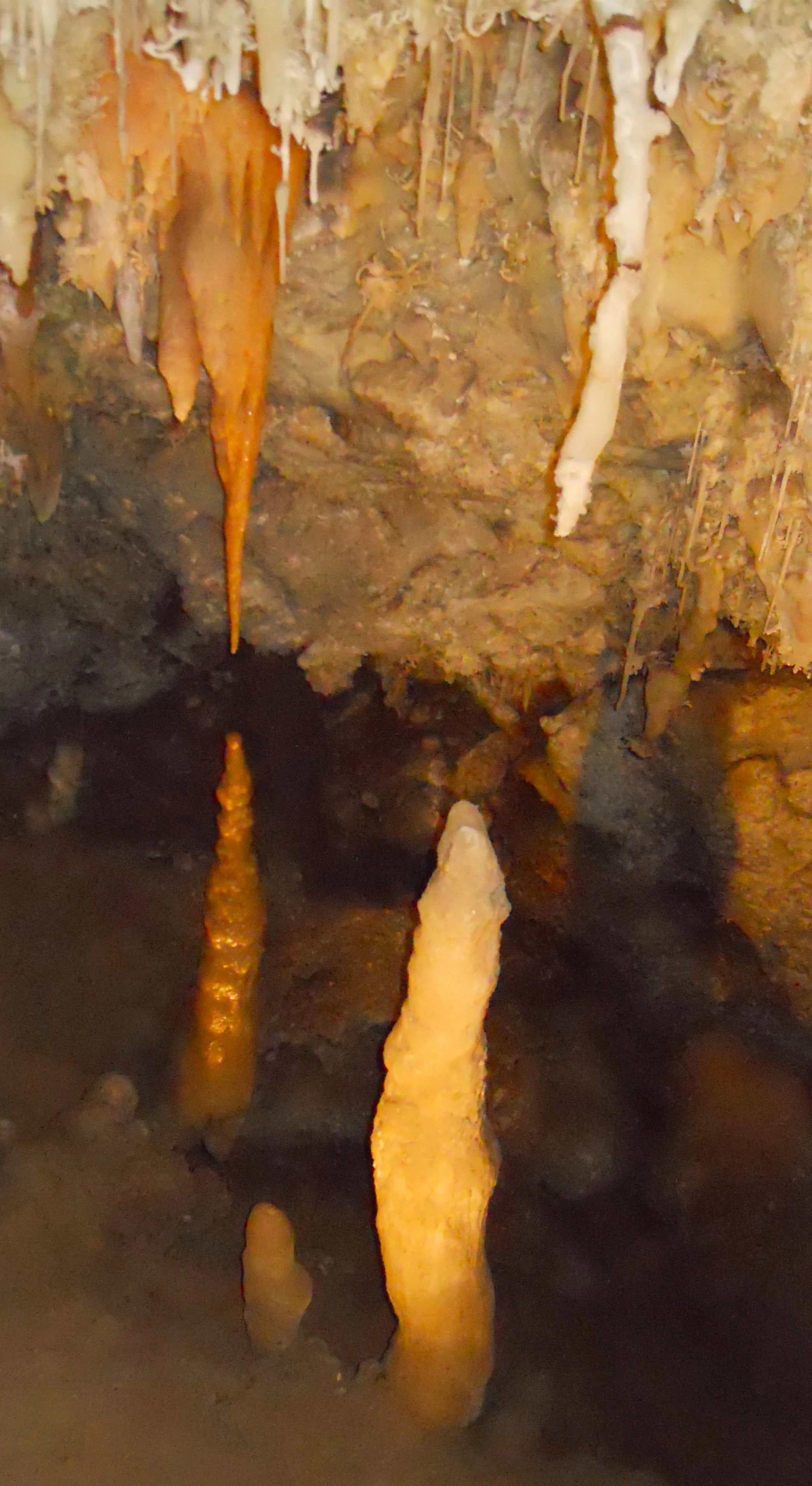DAY 2 (August 24) - Dinosaur NMon is so large it is split between Utah and Colorado. I visited the Utah portion. Besides, this section has the famous Quarry Exhibit Hall. If you want to see dinosaur fossils, still laying in their original stone graves, untouched, this is the place. Adult dinos, juvenile dinos, dino predators, legs, backbones, shoulders, etc. you name it. Earl Douglass, in 1909, saw eight tailbones of a massive sauropad and the gold-rush was on. Carnegie Mellon University has most of those early day discoveries, but the slice of mountain left in the hall is enough for visitors. Fossils from 400 different dinosaurs have been found in this location. Over 900 years before Douglass, the Fremont people lived in this river valley. Pictographs (the red ink paintings) and petroglyphs (the carvings) from their existence can be seen on the valley’s stone walls. Another feature on the park’s main Utah paved road is Turtle Rock, silently overlooking the Green River. The VC has one of the nine life-sized Stegosaurus sculpted for the 1964 New York World’s Fair. The lower level of the Exhibit Hall has a section where visitors can walk up and touch some of these 150 million year old bones. See, the green sign says it is ok. I think the ranger said this bone was from a Diplodocus.
Fossil Butte NMon is north of Dinosaur. The entire corridor between the two is fossil wonderland. But Dinosaur is for its namesake while Fossil Butte is for small reptiles, fish, insects, birds, and plants. The Fossil Butte area was actually a freshwater lake, from 52 million years ago in the Eocene epoch. The one prominent butte left is where Robert Craig in 1897 began quarrying. One of the two trails in the park takes a visitor up to an old quarry. No fossils can be seen on either trail, but the VC has plenty for visual enjoyment. An interesting “trail” is the timeline from 5 billion years ago to today, with important Earth milestones shown, like the Permian Period at 300 million years. It was a long walk to cover the entire time frame.
Grand Teton NP does not need an introduction. This is one of the gems in the NPS. The majestic spires stretch upwards, over 12,000 feet on eight. One of the VCs talks about the ranchers and settlers who first populated the Snake River valley. Outside was one of the Stephen Mather Memorial bronze plaques. I have heard there were 30 made, placed around the park system. Great to see Grand Teton with one (Acadia and Indiana Dunes are two other parks). I am staying in the park all tomorrow, leaving the following day, so will have more photos on August 25.
